Inbox and environment news: Issue 581
April 30 - May 6 2023: Issue 581
Protect Mona Vale's Bongin Bongin Bay - Establish An Aquatic Reserve


Northern Beaches Clean Up Crew: Avalon Beach April 30
Come and join us for our family friendly April clean up, close to Avalon Surf Lifesaving Club (558 Barrenjoey road, Avalon) on the 30th at 10am.
We have gloves, bags, and buckets, and grabbers. We're trying to remove as much plastic and rubbish as possible before it enters the ocean. Some of us can focus on the bush area and sandy/rocky areas, and others can walk along the beach and even clean up in the water (at own risk). We will clean up until around 11.20, and after that, we will sort and count the rubbish so we can contribute to research by entering it into a marine debris database. The sorting and counting is normally finished around noon, and we'll often go for lunch together at our own expense. We understand if you cannot stay for this part, but are grateful if you can. We appreciate any help we can get, no matter how small or big.
No booking required - just show up on the day. We're a friendly group of people, and everyone is welcome to this family friendly event. It's a nice community - make some new friends and do a good deed for the planet at the same time. For everyone to feel welcome, please leave political and religious messages at home - this includes t-shirts with political campaign messages. There is a council carpark, but it is often busy on Sundays, so check streets close by as well if it's full or please consider using public transport.
Message us on our social media or send us an email if you are lost. All welcome - the more the merrier. Please invite your friends too!
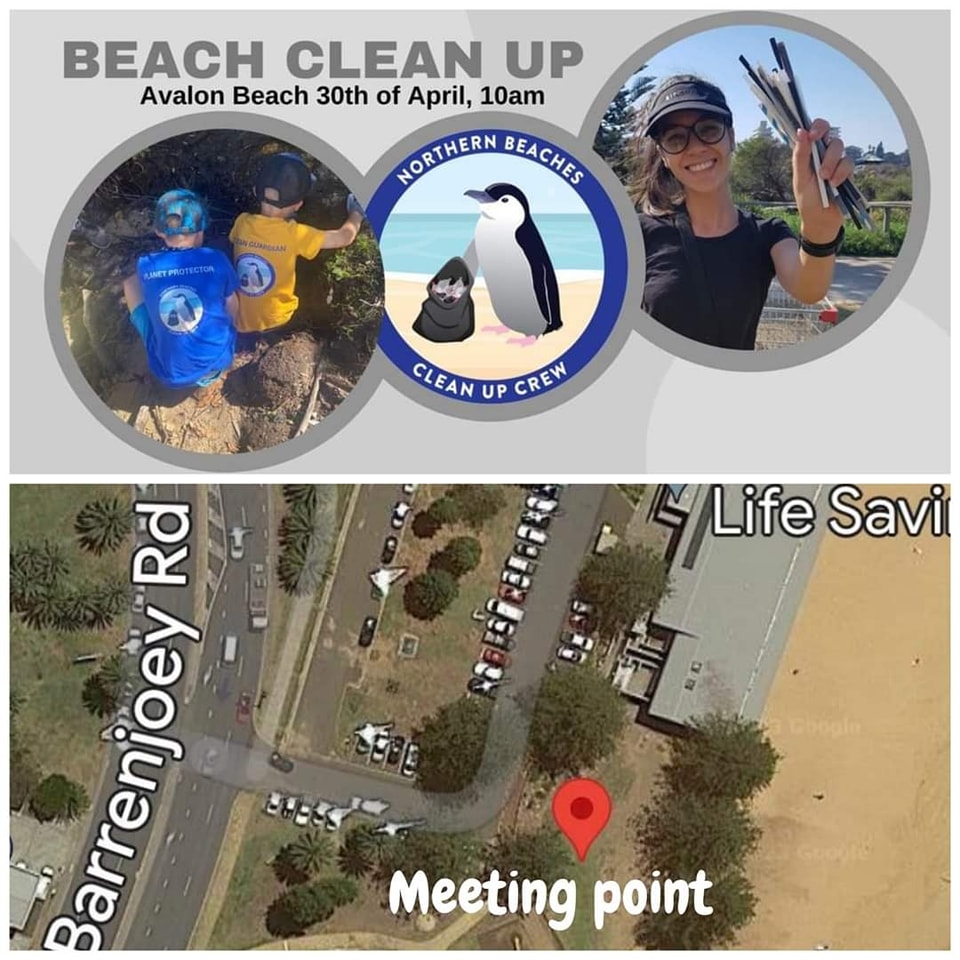
Permaculture Northern Beaches - Upcoming Events
- Learn about Permaculture design
- Caring for and raising chickens
- Native bees and bee hotels
- Living Skills - soap making
- AND Live Music!
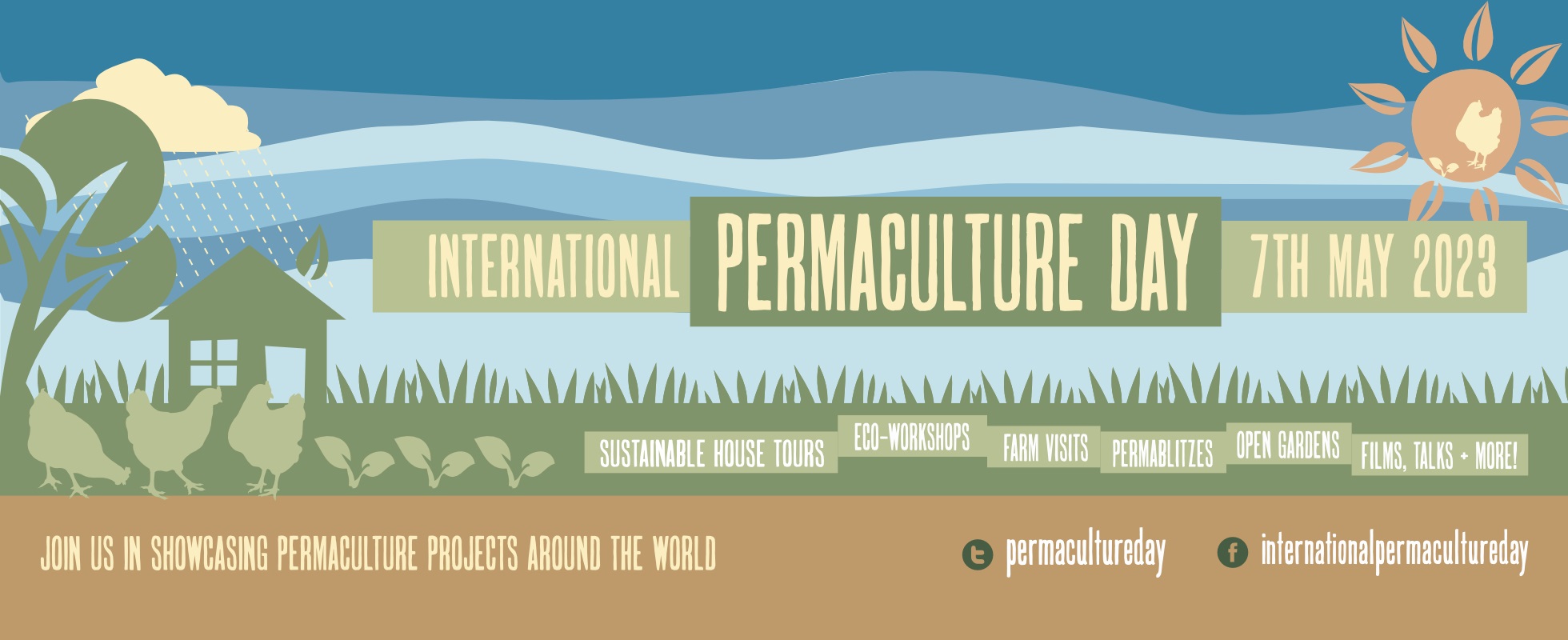
NSW Reconstruction Authority Regulation: Have Your Say
- to prescribe actions in relation to which the NSW Reconstruction Authority may direct relevant entities
- to require relevant entities and the NSW Reconstruction Authority to have regard to the State disaster mitigation plan and any relevant disaster adaptation plan in exercising prescribed functions
- to prescribe exceptional circumstances in which the Minister may authorise the undertaking of development without consent or assessment under the Environmental Planning and Assessment Act 1979
- to provide for the determination and payment of fees under the NSW Reconstruction Authority Act 2022launch.
Trout Spawning Stream Rules Now In Place In Thredbo And Eucumbene Rivers
April 26, 2023
Recreational fishers are reminded that the annual trout fishing spawning stream rules commence from Monday 1 May 2023 in the region’s two declared spawning streams.
NSW Department of Primary Industries (DPI) Deputy Director General Fisheries, Sean Sloan said the annual trout spawning stream fishing rules apply to the Thredbo River and its tributaries and the Eucumbene River and its tributaries (upstream of the backed-up waters of Lake Eucumbene and including Providence Portal).
“While this is a great opportunity to target trophy trout in the Thredbo and Eucumbene rivers, there are some special rules in place to provide protection for spawning trout,” Mr Sloan said.
"A minimum size limit of 50cm, daily bag limit of one and possession limit of two trout applies to the Thredbo and Eucumbene rivers from 1 May to the end of the King’s Birthday long weekend on Monday, June 12, 2023.
“Fishers can only use one rod and line at a time, rigged with up to two artificial flies or lures and they can possess up to three rods, rigged with artificial flies or lures, however the use and possession of handlines is not permitted, and any fishing gear rigged for bait fishing is also prohibited.
“DPI Fisheries Officers will be patrolling the Thredbo and Eucumbene rivers to ensure that fishers abide by the rules and fishers are encouraged to respect each other and be sure to leave the area as pristine as it was found.”
The public is urged to report illegal or suspected illegal fishing activities to the Fishers Watch Phoneline on 1800 043 536 or via the online report form.
For more information on fishing rules and bag limits, please visit the DPI website.
Australian Bass And Estuary Perch Closure Commences 1 May
April 27, 2023
Recreational fishers are reminded that the annual fishing closure for Australian Bass and Estuary Perch in all coastal rivers and estuaries in NSW will commence on Monday 1 May 2023.
NSW Department Primary Industries (DPI) Fisheries Deputy Director General, Sean Sloan said the zero-bag limit over this four-month period helps protect the native fish species while they spawn over the winter period.
“During winter, these popular native sportfish species form large groups and migrate to parts of estuaries with the right salinity to trigger spawning,” Mr Sloan said.
“It is important that fishers respect this closure from 1 May through to 31 August, as the spawning period is key for the survival of these iconic species.
“This closure protects the fish during this spawning period to ensure they can remain a popular catch with recreational fishers for many generations to come.
“Australian Bass and Estuary Perch are a commercially protected species and as such commercial fishers are prohibited from retaining or selling Australian Bass and Estuary Perch.”
Mr Sloan said that the zero-bag limit does not apply to Australian Bass and Estuary Perch caught in freshwater dams or in rivers above impoundments, as the fish do not breed in these areas.
“All fish in freshwater impoundments, like Glenbawn Dam and Glennies Creek Dam in the Hunter Valley, Brogo Dam near Bega and Clarrie Hall and Toonumbar Dams in the northeast, are stocked fisheries, meaning we physically replace fish stocks annually, with fingerlings bred in our hatcheries, therefore anglers may continue to fish for these species in these waters all year round,” Mr Sloan said.
“However, any Australian Bass or Estuary Perch caught in estuaries and in rivers below dams during the closure must be returned to the water immediately with the least possible harm to the fish.
“The zero-bag limit for these species does not close any waters to fishing and does not affect anglers fishing for other estuarine species, such as bream or flathead during the colder months.
“Our DPI Fisheries Officers will be out in full force during this time to ensure that these rules are being followed."
If any suspected illegal activity is witnessed, the public are urged to contact the Fishers Watch Phoneline on 1800 043 536 or via the online report form here.
For more information regarding the annual closure, visit the DPI website.
Report Fox Sightings
%20(1).jpg?timestamp=1675893929686)
Weed Of The Season: Cassia - Please Pull Out And Save Our Bush

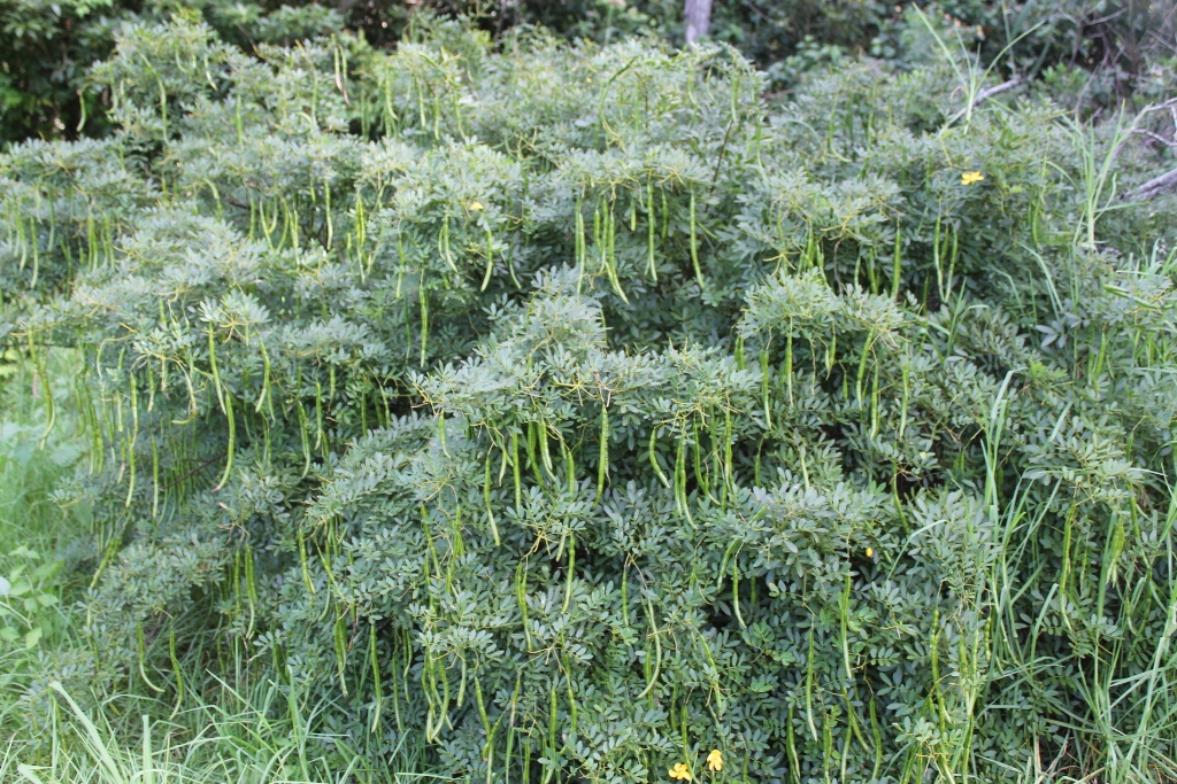
New Marine Wildlife Rescue Group On The Central Coast
A new wildlife group was launched on the Central Coast on Saturday, December 10, 2022.
Marine Wildlife Rescue Central Coast (MWRCC) had its official launch at The Entrance Boat Shed at 10am.
The group comprises current and former members of ASTR, ORRCA, Sea Shepherd, Greenpeace, WIRES and Wildlife ARC, as well as vets, academics, and people from all walks of life.
Well known marine wildlife advocate and activist Cathy Gilmore is spearheading the organisation.
“We believe that it is time the Central Coast looked after its own marine wildlife, and not be under the control or directed by groups that aren’t based locally,” Gilmore said.
“We have the local knowledge and are set up to respond and help injured animals more quickly.
“This also means that donations and money fundraised will go directly into helping our local marine creatures, and not get tied up elsewhere in the state.”
The organisation plans to have rehabilitation facilities and rescue kits placed in strategic locations around the region.
MWRCC will also be in touch with Indigenous groups to learn the traditional importance of the local marine environment and its inhabitants.
“We want to work with these groups and share knowledge between us,” Gilmore said.
“This is an opportunity to help save and protect our local marine wildlife, so if you have passion and commitment, then you are more than welcome to join us.”
Marine Wildlife Rescue Central Coast has a Facebook page where you may contact members. Visit: https://www.facebook.com/profile.php?id=100076317431064
- Ph: 0478 439 965
- Email: marinewildlifecc@gmail.com
- Instagram: marinewildliferescuecc

Watch Out - Shorebirds About
.JPG.opt1460x973o0,0s1460x973.jpg?timestamp=1663629195339)
Possums In Your Roof?: Do The Right Thing

Aviaries + Possum Release Sites Needed

Bushcare In Pittwater
Where we work Which day What time
Avalon
Angophora Reserve 3rd Sunday 8:30 - 11:30am
Avalon Dunes 1st Sunday 8:30 - 11:30am
Avalon Golf Course 2nd Wednesday 3 - 5:30pm
Careel Creek 4th Saturday 8:30 - 11:30am
Toongari Reserve 3rd Saturday 9 - 12noon (8 - 11am in summer)
Bangalley Headland 2nd Sunday 9 to 12noon
Bayview
Winnererremy Bay 4th Sunday 9 to 12noon
Bilgola
North Bilgola Beach 3rd Monday 9 - 12noon
Algona Reserve 1st Saturday 9 - 12noon
Plateau Park 1st Friday 8:30 - 11:30am
Church Point
Browns Bay Reserve 1st Tuesday 9 - 12noon
McCarrs Creek Reserve Contact Bushcare Officer To be confirmed
Clareville
Old Wharf Reserve 3rd Saturday 8 - 11am
Elanora
Kundibah Reserve 4th Sunday 8:30 - 11:30am
Mona Vale
Mona Vale Beach Basin 1st Saturday 8 - 11am
Mona Vale Dunes 2nd Saturday +3rd Thursday 8:30 - 11:30am
Newport
Bungan Beach 4th Sunday 9 - 12noon
Crescent Reserve 3rd Sunday 9 - 12noon
North Newport Beach 4th Saturday 8:30 - 11:30am
Porter Reserve 2nd Saturday 8 - 11am
North Narrabeen
Irrawong Reserve 2nd Saturday 2 - 5pm
Palm Beach
North Palm Beach Dunes 3rd Saturday 9 - 12noon
Scotland Island
Catherine Park 2nd Sunday 10 - 12:30pm
Elizabeth Park 1st Saturday 9 - 12noon
Pathilda Reserve 3rd Saturday 9 - 12noon
Warriewood
Warriewood Wetlands 1st Sunday 8:30 - 11:30am
Whale Beach
Norma Park 1st Friday 9 - 12noon
Western Foreshores
Coopers Point, Elvina Bay 2nd Sunday 10 - 1pm
Rocky Point, Elvina Bay 1st Monday 9 - 12noon
Friends Of Narrabeen Lagoon Catchment Activities

Gardens And Environment Groups And Organisations In Pittwater
In hot water: here’s why ocean temperatures are the hottest on record

Large swathes of the world’s oceans are warm. Unusually warm. The heat this year is likely to break records. Since mid-March, the global average sea surface temperature is over 21℃ – the highest since satellite records began.
What’s going on? Climate change is the big picture – nine-tenths of all heat trapped by greenhouse gases goes into the oceans. But there’s an immediate cause too: the rare triple-dip La Niña is over. During this cycle, cooler water from deep in the ocean upwells to the surface. It’s like the Pacific Ocean’s air conditioner is running. But now the air conditioner is turned off. It’s likely we’re set for an El Niño, which tends to bring hotter, dryer weather to Australia.
When you run your air conditioner, you’re masking the heat outside. It’s the same for our oceans. La Niña brought three years of cooler conditions, while global warming continued apace.
Now we’re likely to see the heat roar back. If El Niño develops, climatologists estimate it could add an extra 0.2℃ to global temperatures, which would nudge some areas past 1.5℃ of warming for the first time.

What Are We Seeing?
Wind patterns are changing over the eastern Pacific near Chile. These winds have stopped the upwelling of deep colder waters from cooling the surface. That’s why you can see temperatures much higher than average in that area.
This is often the start of an El Niño cycle, which usually brings Australia fire weather – dry and hot – while damaging fisheries in Ecuador and Peru and bringing torrential rain to parts of South America.
But the age-old El Niño-Southern Oscillation cycle is happening amid climate change. That’s why it’s so hot across swathes of the world’s oceans.
Why Do The Oceans Matter So Much?
Ocean currents are a major carrier of heat around the globe, alongside atmospheric convection. Sun doesn’t pour down at the same rate everywhere. At the poles, it’s easier for sunlight to glance off, which is why they are colder. But the equator gets the full force of the sun, heating up air and water.
Ocean and air currents move this heat towards the poles. As the currents move south, heat mixes into the surrounding water. The East Australian Current carries warm water from the tropics southwards, distributing heat along south-eastern Australia. By the time the current reaches Hobart, it is typically a lot cooler.
Water can hold much more heat than air can. In fact, just the top few metres of the ocean store as much heat as Earth’s entire atmosphere. The oceans are slower to warm up, and slower to cool down. By contrast, the temperature of our atmosphere is much more mercurial and can change rapidly.
Heat gets into the ocean at the surface, as you’d expect, as that’s where sunlight warms water directly as well as warm winds transferring heat. Over time, this heat is mixed with the rest of the ocean. Most of the extra heat is going into the top two kilometres of seawater, but there’s warming all down the water column. On average, the oceans are four kilometres deep.
How much energy? A startling study suggests the earth system trapped roughly 380 zettajoules of extra heat from 1971-2020 – with the oceans taking up 90% of that. That’s a truly enormous number, the equivalent of 25 billion nuclear bombs.
Our research has found warmer currents – where heat is concentrated – are pushing further south, towards Antarctica.
Is That Why My Ocean Swims Are So Warm This Month?
Surprisingly, the answer is “not necessarily”. Local dynamics always play a role. And so do our own expectations.
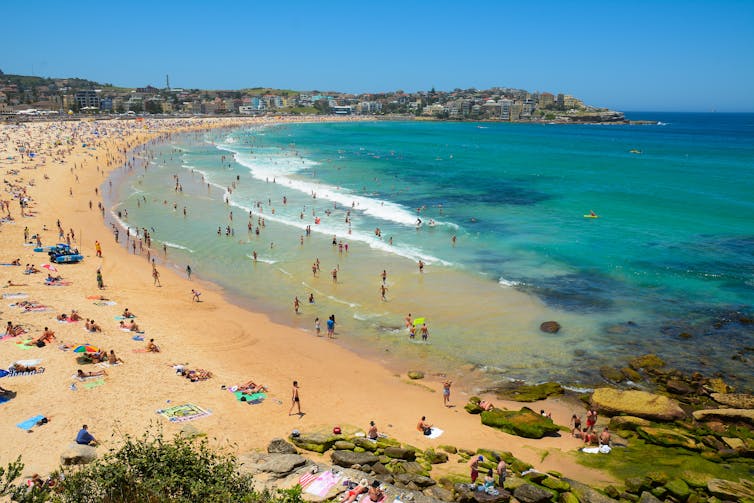
In Sydney, many people have been surprised by how warm the water has felt when they dare a dip this month. The long-term trend of warming oceans plays a role. But more important is how long water can hold heat.
That warm Sydney dip is due to the oceans holding their heat from summer and autumn. Air temperatures might fall to 22℃ while the ocean is at 21℃. But that’s actually quite common in April – cooler air and warmer water. For a person swimming the contrast makes the ocean feel warm compared to the air, particularly if a breeze is blowing.
This is partly why global warming is hard to grasp. We experience the weather and climate directly, by our lived experience. What matters more is the big picture we are seeing. And that, based on the intense heating off Latin America, is a real worry. ![]()
Moninya Roughan, Professor in Oceanography, UNSW Sydney
This article is republished from The Conversation under a Creative Commons license. Read the original article.
Restoring forests often falls to landholders. Here’s how to do it cheaply and well
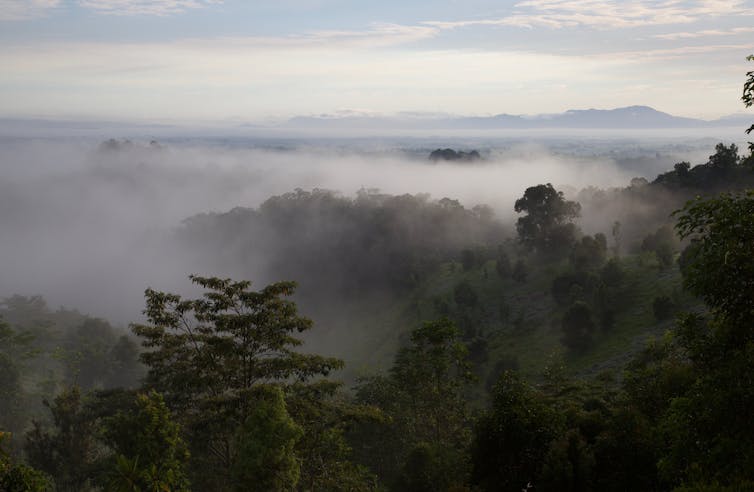
From the outside, planting trees seems simple. Seedlings want to grow – pop them in the soil, water them and walk away.
But Australia has never seriously invested in restoration and has barely monitored outcomes when it has been done. Recent research into the replanting of 20 million trees nationwide found little impact on the threatened species these trees were meant to support.
This matters, because Australia is a major global deforester. Efforts to preserve forests are important, but the remnants that remain are highly fragmented. Before 1788, forest covered an estimated 30% of the continent. Only half of Australia’s forest coverage has survived colonisation.
For a little over a decade, we’ve experimented with different planting methods on our own land in Queensland’s wet tropics. In our recent research, we collated what works well and cheaply. Use a planter spade, make sure both sapling and soil are wet, gently press the seedling into the hole, and only spray weedkiller where needed.
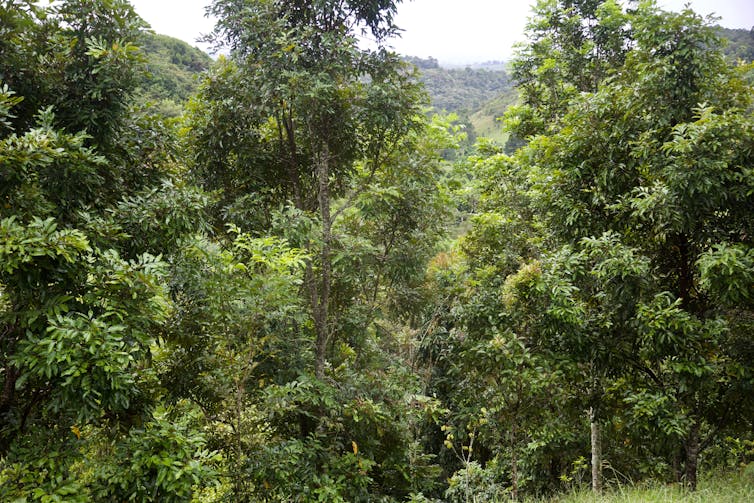
Australia Still Isn’t Serious About Restoration
Forests support most of life on Earth. But in just the last century, the world has lost as much forest as it had in the previous 9,000 years. Today half of the Earth’s land previously covered by trees has been cleared. Of the forests remaining only 40% have high ecosystem integrity.
Under First Nations stewardship, around 30% of Australia was originally covered with forest.
Australia remains one of the world’s top deforesters – the only developed nation on the list.
All climate action pathways limiting warming to 1.5℃ rely on intact forests. But we still lack basic information on how to do restoration best. Most native species have not been tested for their survival and growth rates.
Globally, improving seedling survival has proved difficult because of lack of evidence of best practices. The evidence we do have shows seedling mortality can be as high as 30-40%.
Landscape-scale restoration now relies largely on private investment, often done at small scale on bush blocks owned by individuals and small groups.
A major problem is money. Community restoration in the wet tropics, for instance, has been estimated to cost over A$60,000 a hectare for densely planted native seedlings. This cannot stretch to the scale of restoration desperately needed across Australia’s iconic landscapes.
But there’s good news – since 2011, we’ve been experimenting with how to restore land effectively and for much, much less money.

Restoring Forests Means Mastering Replanting
Eighteen years ago, we bought Thiaki – 180 hectares of land on the Atherton Tablelands, in Queensland’s wet tropics. Covering just 0.3% of Australia, this biome supports more species diversity than anywhere else, including cassowaries, tree kangaroos, striped and lemuroid possums.
Much was cleared early on for dairy. But since the 1940s, many farmers have left the industry due to new economic realities. This has provided new opportunities for restoration.
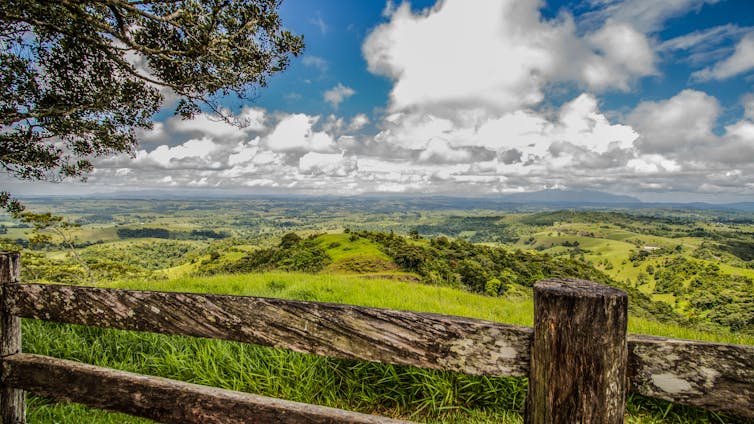
We bought a patch of forest and set it up as a research project looking at cost-effective restoration for carbon and biodiversity using native species.
While the immediate challenge was cost, there were other challenges. Which trees do you plant, where do you plant them and what time of year? How do you plant them quickly and cost-effectively?
Here’s What Works
In our latest research, we tested many combinations of technique, spacing and planting care across three landscape-scale experiments. What we found sounds simple. But recreating a forest relies on doing these things right.
Here are five tips:
Use a spade: Using a two-person tree planting auger made no difference to survival versus a simple planter spade. But the humble planter spade was four times cheaper and four times faster, which substantially reduces costs of restoration.
Saturate the seedling and the soil. This sounds like common sense, but it’s often overlooked, particularly when plantings are scheduled for drier months. When we planted seedlings into drying soil, we lost up to 40% in the first four months.
Treat saplings with care. Damaging roots by yanking a seedling out of the tube or kicking them instead of closing the soil gently with the toe of your boot can cut survival by 20%.
Don’t lose sleep over spacing. We found the distance between plants had little impact on survival. It didn’t matter whether we planted six or 24 different species.
Don’t blanket the area with weedkiller. In places like the wet tropics, fast-growing grasses can make it impossible for trees to establish. But spraying weedkiller across an entire area isn’t necessary. We found just spraying the rows where seedlings will be planted gave the same survival rates. This cuts costs, reduces erosion and protects soil biodiversity.
What Else Did We Learn?
It’s vital to maximise survival in the first months. Boosting survival rates by 10% in the first four months of a planting program proved to be an indicator of up to 40% better survival rate 18-20 months later.
Many restoration programs plant species expecting them to grow as they do in intact forests. Their behaviour in the wild, however, does not necessarily translate to saplings in restoration projects. So it’s also important to take on board experience of sapling survival in other plantings, and nursery experience and provenance.
We kept a close record of costs, and found it was possible to slash restoration costs more than seven-fold, to below $8,000 a hectare – even in areas where costs are usually higher. When you bring the cost down this low, it makes carbon farming worthwhile in agricultural landscapes (if prices are above $37/tonne of CO₂).
Some of these tips may not be as important in every ecosystem. But caring for saplings will be true everywhere.
To help Australians at work restoring their bush blocks, it would be useful to have regional best-practice guidance documents – particularly around cost-effective planting, monitoring, species selection and case studies.
While the work of individual landowners is laudable, it won’t be enough – even if carbon farming and biodiversity markets take off.
Ideally, governments would knuckle down and help restore these denuded landscapes at scale. But if they prefer to stand back, the only option will be to set prices for carbon and biodiversity to reflect the true value of bringing our forests back. ![]()
Penny van Oosterzee, Adjunct Associate Professor James Cook University and University Fellow Charles Darwin University, James Cook University and Noel D Preece, Adjunct Asssociate Professor, James Cook University
This article is republished from The Conversation under a Creative Commons license. Read the original article.
Dozens of woodland bird species are threatened, and we still don’t know what works best to bring them back

Australia’s woodland birds include colourful parrots, flitting honeyeaters, bright blue fairywrens and the unassuming “little brown birds”. Some, such as willie wagtails, laughing kookaburras and rosellas are found in urban gardens. Others, such as swift parrots and regent honeyeaters, are exceptional rarities for which bird enthusiasts spend days or weeks searching.
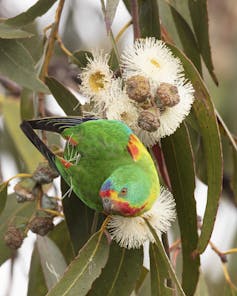
There are other woodland birds you might never have noticed, such as pardalotes, thornbills, treecreepers, gerygones and nightjars. Forty woodland bird species are listed as threatened and several others are declining.
And just this month another six woodland birds were added to the national threatened list.
Efforts to help these species recover are being made. Common actions include replanting trees and installing nest boxes. But it is important we know which efforts are making the biggest difference. We can then ensure we are doing enough to recover these birds and directing resources to actions that work best.
Our systematic review collated all the published research we could find that tested the effectiveness of 26 conservation actions for woodland bird communities. And yet we found little evidence about exactly how effective most of these actions are.
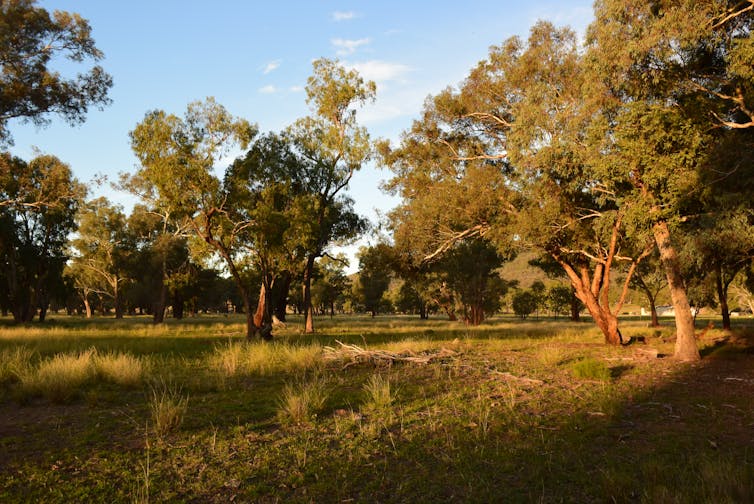
Why Don’t We Know More About What Works?
Australian woodland birds are a well-studied group of species. However, the research on management effectiveness for this ecological community is sparse. This limits our ability to develop general, evidence-based recommendations.
Some actions are certainly beneficial. For example, we know replanting trees and shrubs helps recover woodland birds. Leaving large pieces of dead wood on the ground helps too – birds like robins and treecreepers appreciate it.
However, many of the studies we reviewed didn’t compare sites where a conservation action was done with “control” sites – otherwise similar areas where that action hadn’t occurred. That made it difficult to compare the effectiveness of different actions. Because of this, we simply can’t be sure which actions work best in different contexts, and how large their effect is.
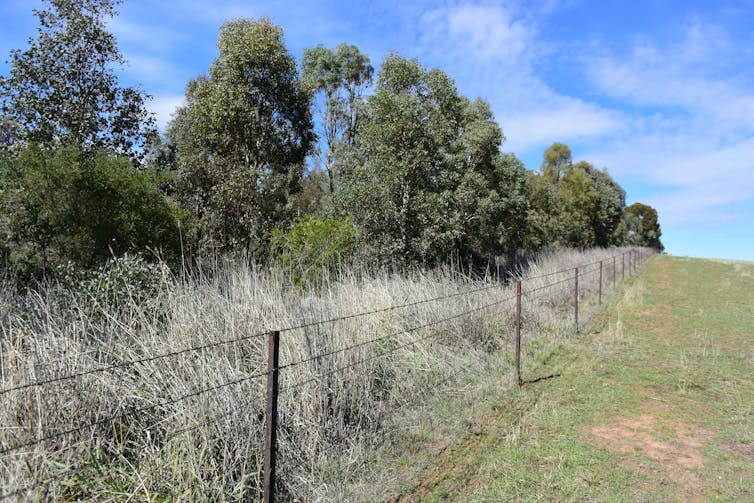
We found surprisingly few actions had been the subject of studies that used control sites, where birds were studied in similar sites where no action had been taken. This was true even for common actions, like control of weeds, feral herbivores (goats, pigs, deer) and predators (cats and foxes), or nest box installation.
All these actions probably have at least some benefits. Without more studies and appropriate controls, though, we can’t say how large the benefits are, or which action makes the biggest difference.
Where The Evidence Exists, Results Are Mixed
Interestingly, four actions for which we could collate some clear evidence had mixed results. These actions were grazing management, prescribed burning, noisy miner control and habitat protection. The evidence shows their effects on birds depend on the site and management context.
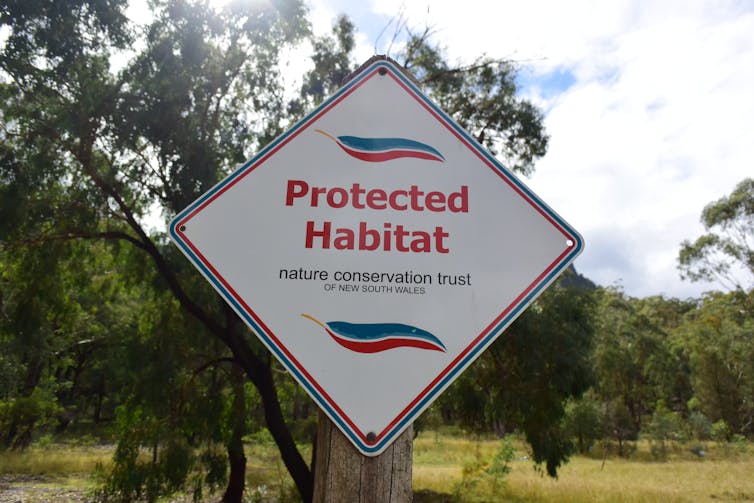
Reducing livestock grazing had mixed results for woodland birds. Sometimes the effects were positive, sometimes negative, and sometimes it had no effect.
Prescribed burning was unlikely to boost woodland bird numbers, with some studies showing no effect, and others negative effects.
These contradictory results could be due to differences in the bird communities, the severity of threats, or differences in the habitat or climatic conditions of the site, as well as in the landscapes surrounding the study sites.
They could also be explained by differences in how the management actions were implemented (such as intensity, frequency, method) and monitored (for example, time since the action took place). But because there was only a handful of studies, we couldn’t tease apart these reasons.
Despite declines of Australian woodland birds and ongoing investment in their conservation, we were unable to make generalised conclusions about the overall effectiveness of 26 conservation actions for these species. We still don’t know which management actions are most effective for this well-loved bird community. This knowledge gap is likely to be worse for less-studied taxonomic groups.
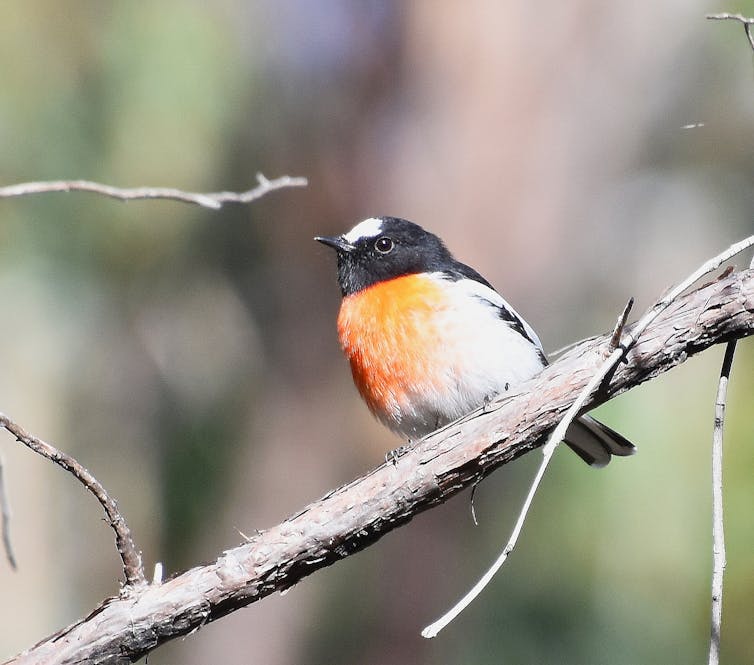
So What Can We Do To Fill In The Gaps?
To give us concrete answers, there are two key messages for conservation practitioners and researchers.
First, we need to do more research designed to test the effectiveness of management actions, and understand the context in which different results occur. These studies need rigorous study designs, appropriate controls and careful statistical reporting.
Second, we encourage practitioners to tap into the online database of existing studies that we did collate and the accompanying annotated bibliography. These provide a wealth of detailed practical information about each management action. These resources are a comprehensive collation of the best available evidence to help support management decisions for woodland birds.
We also encourage collaborations among practitioners and researchers to build the evidence base by evaluating management actions that are being implemented or soon to be trialled.
Unfortunately, these conclusions of “we need more research” and “it depends on the context” are not novel. However, we now have a clear understanding of the knowledge gaps.
In the meantime, avoiding damage and loss of habitat in the first place is the most important thing we can do.![]()
Jessica Walsh, Lecturer in Conservation Science, Monash University; Martine Maron, Professor of Environmental Management, The University of Queensland, and Michelle Gibson, Research Fellow, Bird Ecology and Fire Science, The University of Melbourne
This article is republished from The Conversation under a Creative Commons license. Read the original article.
‘Statistically impossible’ heat extremes are here – we identified the regions most at risk

In the summer of 2021, Canada’s all-time temperature record was smashed by almost 5℃. Its new record of 49.6℃ is hotter than anything ever recorded in Spain, Turkey or indeed anywhere in Europe.
The record was set in Lytton, a small village a few hours’ drive from Vancouver, in a part of the world that doesn’t really look like it should experience such temperatures.
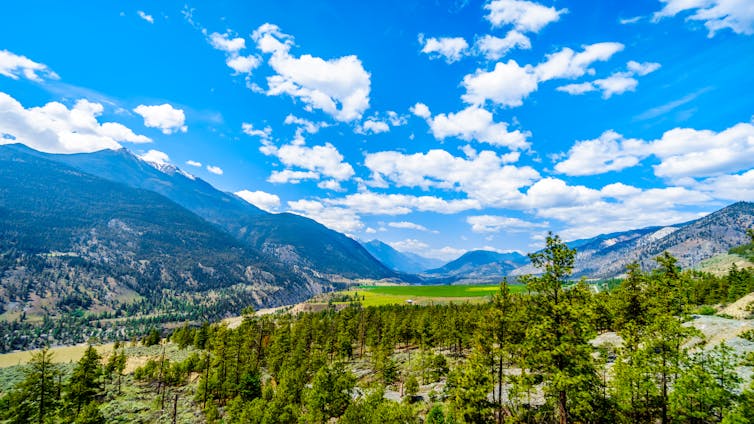
Lytton was the peak of a heatwave that hit the Pacific Northwest of the US and Canada that summer and left many scientists shocked. From a purely statistical point of view, it should have been impossible.
I’m part of a team of climate scientists who wanted to find out if the Pacific Northwest heatwave was unique, or whether any other regions had experienced such statistically implausible events. And we wanted to assess which regions were most at risk in future. Our results are now published in the journal Nature Communications.
Tracking these outlier heatwaves is important not just because the heatwaves themselves are dangerous, but because countries tend to prepare to around the level of the most extreme event within collective memory. An unprecedented heatwave can therefore provoke policy responses to reduce the impact of future heat.
For instance, a severe heatwave in Europe in 2003 is estimated to have caused 50,000-70,000 excess deaths. Although there have been more intense heatwaves since, none have resulted in such a high death toll, due to management plans implemented in the wake of 2003.
One of the most important questions when studying these extreme heatwaves is “how long do we have to wait until we experience another similarly intense event?”. This is a challenging question but, fortunately, there is a branch of statistics, called extreme value theory, that provides ways in which we can answer that exact question using past events.
But the Pacific Northwest heatwave is one of several recent events that have challenged this method and should not have been possible according to extreme value theory. This “breakdown” of statistics is caused by conventional extreme value theory not taking into account the specific combination of physical mechanisms, which may not exist in the events contained in the historical record.
Implausible Heat Is Everywhere
Looking at historical data from 1959 to 2021, we found that 31% of Earth’s land surface has already experienced such statistically implausible heat (though the Pacific Northwest heatwave is exceptional even among these events). These regions are spread all across the globe with no clear spatial pattern.

We also drew similar conclusions when we analysed “large ensemble” data produced by climate models, which involve computers simulating the global climate many times over. These simulations are extremely useful for us, since the effective length of this simulated “historical record” is far larger and thus they produce many more examples of rare events.
However, while this analysis of the most exceptional events is interesting, and cautions against using purely statistical approaches for assessing the limits to physical extremes, the most important conclusions of our work come from the other end of the spectrum – regions that have not experienced particularly extreme events before.
Some Places Have Got Lucky – So Far
We identified a number of regions, again spread across the globe, that have not experienced especially extreme heat over the past six decades (relative to their “expected” climate). As a result, these regions are more likely to see a record-breaking event in the near future. And with no experience of such a huge outlier, and less incentive to prepare for one, they may be particularly harmed by a record heatwave.
Socioeconomic factors, including population size, population growth and level of development will exacerbate these impacts. As a result, we factor in population and economic development projections in our assessment of the regions that are most at risk globally.

Our at-risk regions include Afghanistan, several countries in Central America and far eastern Russia among others. These regions may be surprising, since they are not those people typically think of when considering extreme heat impacts of climate change like India or the Persian Gulf. But those countries have recently experienced severe heatwaves and so are already doing what they can to prepare.
Central Europe and several provinces in China, including the area around Beijing, also appear to be vulnerable when considering the extremeness of the record and population size, but as more developed areas they are likely to already have plans to mitigate severe impacts.
Overall, our work raises two important points:
The first is that statistically implausible heatwaves can occur anywhere on the Earth, and we must be very cautious about using the historical record in isolation to estimate the “maximum” heatwave possible. Policymakers across the globe should prepare for exceptional heatwaves that would be deemed implausible based on current records.
The second is that there are a number of regions whose historical record is not exceptional, and therefore is more likely to be broken. These regions have been lucky so far, but as a result, are likely to be less well prepared for an unprecedented heatwave in the near future. It is especially important that these regions prepare for more intense heatwaves than they have already experienced.![]()
Nicholas Leach, Postdoctoral Researcher, Climate Science, University of Oxford
This article is republished from The Conversation under a Creative Commons license. Read the original article.
The public history, climate change present, and possible future of Australia’s botanic gardens
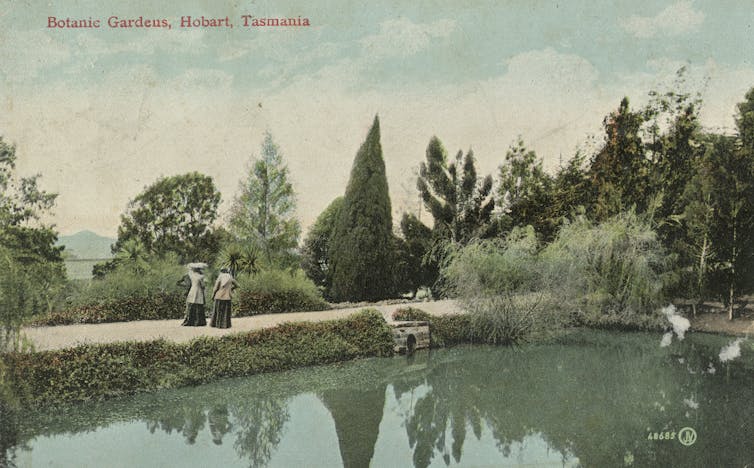
Can we justify maintaining water-hungry botanic gardens in an age of climate change and rising water prices?
Perhaps such gardens are no longer suited to Australia’s changing climate – if they ever were.
It is easy to argue Australian botanic gardens are imperial remnants full of European plants, an increasingly uncomfortable reminder of British colonisation.
But gardens, and their gardeners, aren’t static. They are intrinsically changing entities.
A Brief History
Most Australian botanic gardens were established in the 19th century, starting with the garden in the Sydney Domain around 1816.
The earliest gardens served multiple functions.
They were food gardens. They were test gardens used to establish the suitability of crops and vegetables introduced from Europe and other colonies.

Nostalgia, European ideas of beauty and the desire to test introduced varieties meant botanic gardens were planted with trees familiar to British visitors. Oaks, elms and conifers were all planted, along with the kinds of flowers and shrubs naturalised in British private and public gardens.
Introduced plants and trees were distributed to settlers as part of acclimatisation – the introduction of exotic plants intended to transform the Australian landscape to a more familiar one and make it “productive”.
Botanic gardens also reversed this exchange by collecting, cultivating and internationally distributing Australian native plants deemed potentially useful or beautiful.
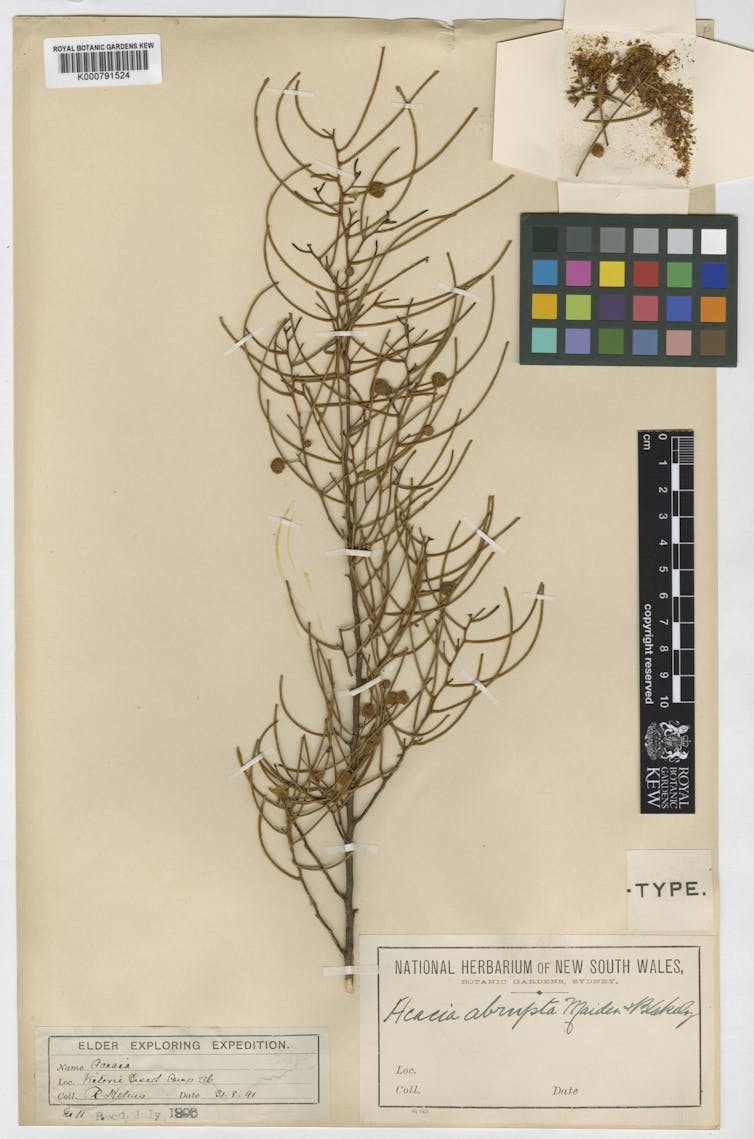
Finally, and most controversially, they were public spaces.
Australian public gardens drew on then new ideas from European social reformers and progressive politicians. These gardens were seen as providing healthy air for the citizens of increasingly crowded cities. They were also built on older ideas about commons and provision of shared public space for the recreation of the poorer classes.

These different uses sometimes clashed. Ferdinand Mueller, director of the Melbourne Botanic Gardens, was arguably displaced from his role because his vision of the garden was as an instructional botanical nursery. Public demand had shifted to a desire for a more aesthetic and usable garden.
Facing The Climate Emergency
Water for trees and decorative plants drawn from very different climates were always an issue for these gardens.
As early as 1885, Richard Schomburgk in his role of director of the Adelaide Botanic Gardens told Nature about the drought affecting that city and the drastic impact it was having “upon many of the trees and shrubs in the Botanic Garden, natives of cooler countries”.

As the climate has shifted, droughts, changes in water table and climate change uncertainty have foregrounded the plight of these thirsty trees, and some have died.
The Geelong Botanic Gardens, established in 1851, provide an example of water demand and the work done to retain historic trees, using wastewater to maintain these plantings. The garden also now has a “21st-Century Garden” focused on sustainability, containing hardy natives including acacias, eremophila, saltbush and grasses.
Today’s botanic gardens are still test gardens, and are now important sites for global climate change research. They demonstrate what not to plant, but also that not all introduced plants are unsuited to Australian conditions.
Adelaide Botanic Gardens offer a plant selection guide where residents can check whether a plant is suited to their local conditions.
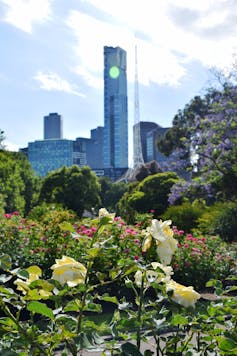
The Melbourne Royal Botanic Gardens have a “climate ready” rose display, a reframing of the decimated species rose collection, which adjusts exotic planting to climate change, without throwing the baby out with the (diminishing) bath water.
Some European, Mediterranean, North and South American plants are exactly suited to Australian climates, or are robust enough to adapt to changes which include increased drying and heat in many areas, but also the possibility of increased humidity in formerly arid zones.
Colonial Memorials
There has been a recent trend to erase reminders of our colonial past.
Do the best lessons come from removing colonial memorials, or from rewriting their meaning? Pull out the giant trees and exotic gardens, or use them to demonstrate and examine the assumptions and mistakes of the past, as well as to design the future?
Various garden exhibitions, such as the touring Garden Variety photography exhibition, do the latter, foregrounding the problematic history as well as the future possibilities of the space.
Many gardens also now include Indigenous acknowledgement and content: heritage walks, tours, and talks by Indigenous owners to demonstrate the long history, naming and uses of local plants which overturn their colonial positioning.
Shifting Landscapes
Australia’s botanic gardens have changed a lot over the past 200 years.
Botanic gardens are adapting to climate change, replacing dying and stressed trees and outdated gardens with hardier varieties and new possibilities, conserving endangered species and acting as proving grounds for climate impacts.
For decades, state and national gardens like the Western Australian Botanic Garden and regional gardens like Mildura’s Inland Botanic Gardens have installed indigenous, native or climate-focused gardens, as well as or instead of the traditional heritage European style.
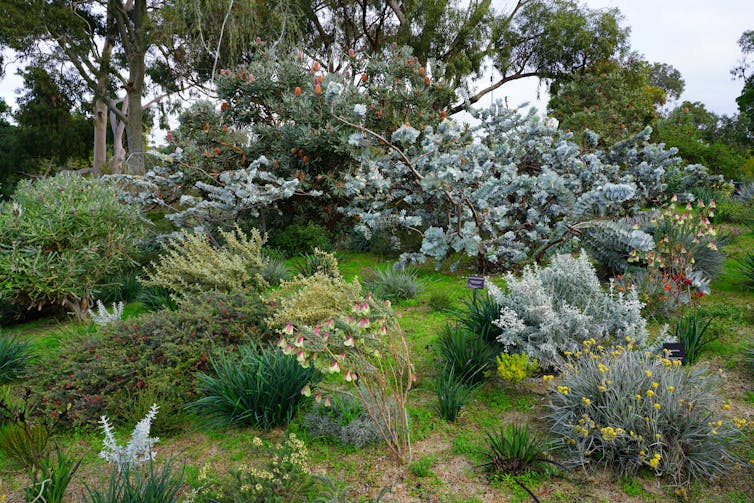
Botanic Gardens Australia and New Zealand offers a landscape succession toolkit: a guide for mapping out what is doomed, what most needs preserving and what adaptations are most pertinent for our botanic gardens of the future.
Finally, we don’t need to rip out non-hardy introduced trees: climate change will progressively remove them for us.![]()
Susan K Martin, Emeritus Professor in English, La Trobe University
This article is republished from The Conversation under a Creative Commons license. Read the original article.
We found long-banned pollutants in the very deepest part of the ocean

I was part of a team that recently discovered human-made pollutants in one of the deepest and most remote places on Earth – the Atacama Trench, which goes down to a depth of 8,000 meters in the Pacific Ocean. The presence of polychlorinated biphenyls (PCBs) in such a remote location emphasises a crucial fact: no place on Earth is free from pollution.
PCBs were produced in large quantities from the 1930s to the 1970s, mostly in the northern hemisphere, and were used in electrical equipment, paints, coolants and lots of other products. In the 1960s, it became clear they were harming marine life, leading to an almost global ban on their use in the mid-1970s.

However, because they take decades to break down, PCBs can travel long distances and spread to places far from where they were first used, and they continue to circulate through ocean currents, winds and rivers.
Our study took place in the Atacama Trench, which tracks the coast of South America for almost 6,000km. Its deepest point is roughly as deep as the Himalayas are high.
We collected sediment from five sites in the trench at different depths ranging from 2,500m to 8,085m. We sliced each sample into five layers, from surface sediment to deeper mud layers, and found PCBs in all of them.
Pollutants Stick To Dead Plankton
In that part of the world, ocean currents bring cold and nutrient-rich waters to the surface, which means lots of plankton – the tiny organisms at the bottom of the food web in the oceans. When plankton die, their cells sink to the bottom, carrying with them pollutants such as PCBs. But PCBs don’t dissolve well in water and instead prefer to bind to tissues rich in fat and other bits of living or dead organisms, such as plankton.
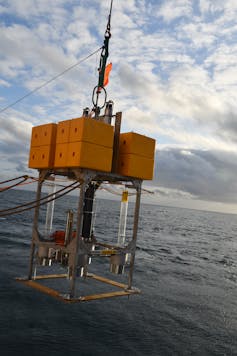
Since seabed sediment contains a lot of remnants of dead plants and animals, it serves as an important sink for pollutants such as PCBs. About 60% of PCBs released during the 20th century are stored in deep ocean sediment.
A deep trench like the Atacama acts like a funnel that collects bits of dead plants and animals (what scientists refer to as “organic carbon”) that come falling down through the water. There is a lot of life in the trench, and microbes then degrade the organic carbon in the seafloor mud.
We found that the organic carbon at the deepest locations in the Atacama Trench was more degraded than at shallower places. At the greatest depths, there were also higher concentrations of PCB per gram of organic carbon in the sediment. The organic carbon in the mud is more easily degraded than the PCBs, which remain and can accumulate in the trench.
A Look Into The Past
The storage of pollutants means ocean sediment can be used as a rear-view mirror on the past. It is possible to determine when a sediment layer accumulated on the seafloor, and by analysing pollutants in different layers we can gain information about their concentrations over time.
The sediment archive in the Atacama Trench surprised us. PCB concentrations were highest in the surface sediment, which contrasts to what we usually find in lakes and seas. Typically, the highest concentrations are found in lower layers of sediment that were deposited in the 1970s through to the 1990s, followed by a decrease in concentrations towards the surface, reflecting the ban and reduced emissions of PCBs.
For now, we still don’t understand why the Atacama would be different. It is possible that we didn’t look at the sediment closely enough to detect small variations in PCBs, or that concentrations have not yet peaked in this deep trench.
These concentrations are still quite low, hundreds of times lower than in areas close to human pollution sources such as the Baltic Sea. But the fact we have found any pollution whatsoever shows the magnitude of humanity’s influence on the environment.
What we can say for sure is that the more than 350,000 chemicals currently in use globally come at a cost of polluting the environment and ourselves. Pollutants have now been found buried below the bottom of one of the world’s deepest ocean trenches – and they’re not going anywhere.

Don’t have time to read about climate change as much as you’d like?
Get a weekly roundup in your inbox instead. Every Wednesday, The Conversation’s environment editor writes Imagine, a short email that goes a little deeper into just one climate issue. Join the 10,000+ readers who’ve subscribed so far.![]()
Anna Sobek, Professor of Environmental Chemistry and Head of Department of Environmental Sciences, Stockholm University
This article is republished from The Conversation under a Creative Commons license. Read the original article.
Climate isn’t a distraction from the military’s job of war fighting. It’s front and centre
Matt McDonald, The University of QueenslandIt was pitched as the “most significant” shift in Australia’s armed forces in decades. And among the headline announcements, climate change was recognised as an issue of national security.
But the strategic review of Australia’s military released yesterday doesn’t go a lot further than that when it comes to the climate crisis. The review devotes just over one of its 100 pages to what climate change means for defence.
And while overseas analysts and militaries seriously address the strategic effects of climate change and the role for defence, the Australian review focused more on climate change as a potential distraction from the military’s core business of war fighting. As our armed forces are increasingly called to respond to natural disasters, the review reports, they are less ready to fight a war.
This focus is too narrow. It’s also a long way from what the research is telling us, and a long way from what our allies are doing.
What’s The Link Between Climate Change And National Security?
At a fundamental level, security doesn’t mean much if it doesn’t extend to conditions of survival. The climate emergency has been described as a direct threat to both human and ecological security.
But climate change also hangs over the traditional security agenda, which is to defend against any attacks. Forward-thinking militaries around the world have begun to prepare for these effects.
Climate change could make armed conflict more likely by acting as a “threat multiplier”.
Climate-driven droughts, desertification, changing rainfall patterns and the loss of arable land could lead to the collapse of governments or a fleeing population.
Former UN Secretary-General Ban Ki Moon and some analysts have pointed to the role of climate change in contributing to armed conflict in Sudan’s Darfur region and Syria’s civil war.
Unchecked climate change is likely to trigger more demand for armed forces to respond to natural disasters, predicted to increase in intensity and frequency on a hotter planet.
Yesterday’s strategic review focuses on this demand, and for good reason – it’s already happening.
Increasingly, the army and air force are being called on to respond to Australia’s tide of “unprecedented disasters” like the floods of the last three years, and the summer of fire in 2019–20. Navy ships evacuated hundreds from the beach at Mallacoota in Victoria, under eerie light.
And then there’s the world. The demand for army-backed humanitarian help is rising. Our neighbours are among the most vulnerable in the world to the effects of natural disasters.
Beyond responses to refugees, conflict and natural disasters, there’s the question of how militaries are equipped, trained and resourced.
Higher temperatures, rising seas and natural disasters could threaten defence infrastructure and bases. Australia’s defence department is the largest landholder in the country, much of it in exposed coastal areas.
Our military has a substantial “carbon bootprint”, given it relies heavily on machines which burn fossil fuels, from destroyers to tanks. Ensuring these have enough fuel in the future is a concern, especially if the substantial military contribution to greenhouse gas emissions comes under more scrutiny.
In this sense it was good to see the review note the importance of the military accelerating a transition to clean energy. But the urgency of the climate crisis suggests our military should also be factoring climate change into procurement considerations and equipment management now. To date, there’s little evidence Australia has done so.
What Are Other Countries Doing?
Key partners like America, the UK and many other countries are well ahead of us. In my ongoing research, I’ve analysed climate responses and interviewed policymakers from other nations. This suggests we’re lagging well behind.
The US military began analysing what climate change would mean for it back in the 1990s. Biden’s government has given climate change greater priority in its National Security Council and firmly linked climate and security in what one interviewee told me was a “game changer”.
The UK has an expert body within its defence ministry examining the security implications of climate change. In 2021, it produced a strategic document with emissions cut goals for its armed forces, as well as investment to make the transition possible.
New Zealand has gone beyond reactive responses and embraced an active role for its military in responding to natural disasters at home and in the region. One interviewee told me this was central to the military’s “social licence”.
New Zealand’s position has been strongly influenced by the concerns of its Pacific neighbours. Wellington decision makers also decided defence will not be exempt from government-mandated goals to get to net zero.
France has taken a similar position on humanitarian assistance and disaster relief focused on its overseas territories and the wider Francophone world. These operations are presented not as a distraction but as a core commitment.
Sweden and Germany used their time on the UN Security Council in recent years to push for a resolution on the organisation’s role in addressing the international security implications of climate change. And when Sweden joins NATO, it’s likely to push for more military preparation for climate change given recent NATO commitments on this front.
Can Australia Catch Up?
Yes. But the first step is to recognise where we are – and where the world is heading.
Australia’s defence sector must seriously engage with what climate change will bring, not least given our region’s acute vulnerabilities and the existential concerns of our Pacific neighbours.
Unfortunately, yesterday’s review suggests our defence establishment does not wholly share these concerns. ![]()
Matt McDonald, Associate Professor of International Relations, The University of Queensland
This article is republished from The Conversation under a Creative Commons license. Read the original article.
New exposé of Australia’s exotic pet trade shows an alarming proliferation of alien, threatened and illegal species
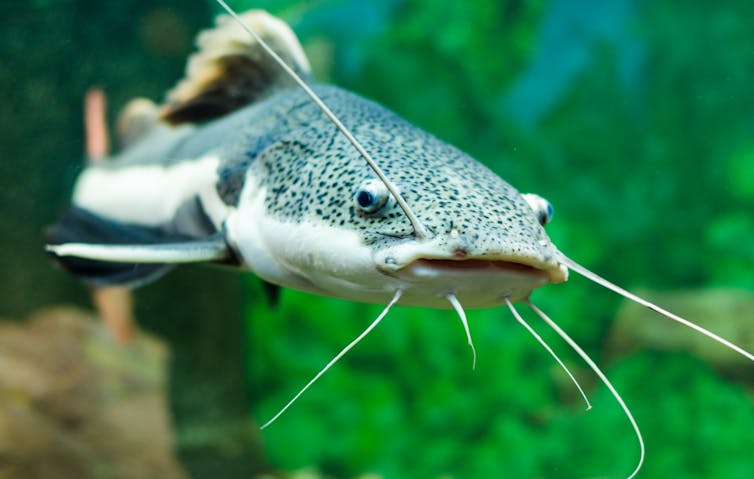
Australia has a global reputation for being tough on biosecurity. There are strict rules around the import and export of both native and exotic species. Security is tight, and advanced screening technology commonplace at ports of entry and mail centres.
But it’s a different story within the country, with plenty of movement of wildlife across state borders.
Our research published today in the journal Biological Conservation uncovers the surprising scale and diversity of the domestic online pet trade in Australia. Threatened species, invasive pests, banned imports, and animals not yet known to science are all for sale.
Over a 14-week period, prior to the commencement of Australian COVID-19 restrictions, we detected the trade of more than 100,000 individual live animals. This included more than 60,000 separate advertisements and a total of 1,192 species, including 81 threatened species, 667 alien (non-native) species, and 279 species that are not allowed to be imported into Australia.
We hope our results, from the first systematic survey of exotic vertebrate pets (this includes non-domesticated reptiles, amphibians, fish and birds) traded in Australia, will help biosecurity agencies identify high-risk and potentially illegal species.
What’s The Problem With Trading Exotic Pets?
Unregulated wildlife trade poses serious threats to animal welfare, conservation, human health and biosecurity.
As well as the conservation threat of unsustainably harvesting live animals from the wild, wildlife trade is a source of novel invasive species and their diseases. When exotic species escape from captivity they can become pests. An infamous example is the Burmese pythons of Everglades National Park in the United States, which continue to eat through the native wildlife at an unparalleled rate.
These issues are not lost on Australian biosecurity and conservation agencies. A recent crackdown on reptile smuggling, establishing additional international protection for 127 native species, shows a recognition of the need for more stringent regulation and surveillance. Although low prosecution rates and weak penalties continue to be a barrier to effective enforcement.
Australia goes well beyond its international obligations and prohibits the commercial import of most live animals. Yet audits of alien cagebird and ornamental fish trades show they are thriving within Australia.
Booming Online Trade
Traditionally, pets have been sold from brick and mortar stores or traded between informal networks of keepers and breeders. But now, thanks to online marketplaces, pet trade has largely shifted to the internet.
E-commerce trading sites reach more potential customers across a wider area than previously possible. They also offer a degree of anonymity, meaning that blatantly illegal activity can sometimes occur openly on websites and social media platforms.
To investigate if this was also happening in Australia, we identified 12 of the most prominent online platforms that sold exotic pets. We were able to rapidly monitor thousands of daily advertisements using an automated tool known as webscraping.
To our surprise and alarm, 56% of the trade involved alien species (over 600 species in total). Many of these are illegal to import into Australia or are known to be invasive overseas.
Not Everything Is Clearly Illegal
But these are not all clear-cut examples of illegal activity. The reality is more ambiguous: Australia’s import ban of most animals only came into effect in the early 1980s. So some exotic pets may have arrived in Australia before the ban and have been bred in captivity ever since.
This provides an element of plausible deniability. Traders can declare their animals to be captive-bred within Australia, even if some have been smuggled into the country at a later stage. We found this issue was especially prominent for ornamental fish, with 279 illegal-to-import species being traded in an unregulated manner.
What’s worse is some traders are specialising in animals that are not yet known to science, meaning they haven’t been formally classified, named or described. The presence of undescribed species in Australia, mostly freshwater catfish and African cichlids, can only be explained by illegal smuggling or the exploitation of trade loopholes.

Is Greater Oversight Needed?
It is clear Australia’s exotic pet trade is far more prevalent and less regulated than previously understood. Some researchers call for e-commerce platforms such as Facebook to take greater responsibility by policing wildlife trade. This would reduce opportunities for non-compliant activity occurring on their sites. Meta, the parent company of Facebook, was recently fined for failing to remove illegal trade.
Regardless of how future trade is managed, we are now left with the question of how to deal with thousands of live animals already present that should never have been brought to Australia.
The immediate prohibition of these pets is not feasible. The social licence to euthanise so many animals does not exist and there are no facilities large enough to house them all. Bans, when ineffectively communicated and enforced, can also bolster illegal trade and organised crime.
Permit systems are sometimes used to regulate native pets. A permit is harder to acquire if the species in question poses a greater threat. Recent evidence shows that this can reduce the number of captive animals, and potentially fewer escapees.
Whether such systems can be introduced for these problematic alien species remains to be seen, but new approaches are urgently needed if Australia is to tackle its pet trade problem.![]()
Adam Toomes, Ph.D. student at the Invasion Science & Wildlife Ecology Group, University of Adelaide and Phill Cassey, Head, Department of Ecology & Evolutionary Biology, University of Adelaide
This article is republished from The Conversation under a Creative Commons license. Read the original article.
We want more climate ambition in our foreign policy – here’s how we can do it
Wesley Morgan, Griffith University and James Bowen, The University of Western AustraliaLast week, foreign minister Penny Wong laid out the strategic challenges facing Australia in a major speech.
Wong described great power competition involving China, America and Russia. She warned of the risk of conflict in our region as China expands its sphere of influence. And she defended the AUKUS nuclear submarine deal with the United States and United Kingdom.
But these are traditional challenges: nation against nation. Australia needs a similar declaration of the catastrophic security implications of climate change.
While Wong did mention climate change, it was secondary, set in the context of regional outreach.
As the climate crisis worsens, we must do more. Climate change is a threat. Maybe even the threat. We need to use every tool we have to tackle it – including our diplomats.
Climate Change Threatens Our Neighbours – And Us
Australia is a big fish in a big, sparsely populated pond. Our neighbours in the Pacific see sea-level rise and ocean acidification as existential threats. For island nations, this is the big one – well above geostrategic competition.
To Wong’s credit, she understands this.
But climate damage isn’t restricted to island nations. Countries across South and Southeast Asia are also on the front line of warming, as this month’s record-breaking heatwaves show.
Just this weekend, people in Bangkok were warned not to go outside due to extreme heat. The apparent temperature - what the temperature feels like when combined with humidity – hit a record 54℃.
In our region, governments typically avoid close alignment with great powers and blocs. Yet there is no doubt rising temperatures are a key threat to all countries. Australia might have a tougher time remaining a credible partner to the region without a greater climate focus here too.
Back Up Words With Serious Action
Under Labor, our political and financial climate commitments have certainly increased.
Despite this, our domestic emissions trajectory is still not compatible with keeping global warming to 1.5℃ this century.
And, as of 2022, Australia was paying just a tenth of its fair contribution to the climate fund set up at the 2009 UN conference in Copenhagen.
Contrast this to the vast sum of money we have committed to spending on traditional security threats, especially the nuclear submarine deal which could cost up to A$368 billion.
Australians want to see more foreign policy ambition on climate front. A United States Studies Centre poll last year found 75% of us want climate action at the heart of our alliance with America. By contrast, only 52% of survey respondents felt the nuclear subs deal was a good idea.
What Should Australia Do?
It’s hard to imagine Australia – or any other country – financing climate action at a level on par with traditional security threats.
But there are actions we could take to help close the gap. We could rejoin and boost funding to the UN-aligned Green Climate Fund, which the previous Australian government left in 2018.
We should also retool our export credit and development finance to invest in climate-friendly assets and stop them funding more fossil fuel extraction.
At the same time, Australia could signal our serious climate commitments by continuing to strengthen domestic policies to ensure the reformed safeguard mechanism actually leads to genuine emission cuts. This would mean closing glaring loopholes, such as allowing major emitters to keep pumping out carbon pollution by purchasing carbon offsets.
As the global energy transition gathers pace, the federal government should do more to support clean energy exports. Australia is well placed to provide critical minerals and the green metals, fertiliser and transport fuels that the rest of the world needs. But we must act fast to secure lucrative opportunities –and to tell the world we are open for green business.
The way we communicate progress to the world is critical. For years, we have been seen as laggards and hold-outs, one of the few developed nations resisting the change which must come. It’s time for us to lead.![]()
Wesley Morgan, Research Fellow, Griffith Asia Institute, Griffith University and James Bowen, Policy Fellow, The University of Western Australia
This article is republished from The Conversation under a Creative Commons license. Read the original article.
Most people already think climate change is ‘here and now’, despite what we’ve been told

A quick search on the internet for “climate change images” readily yields the familiar photograph of a lone polar bear on a shrinking block of ice. Despite signifying an impending crisis, such images make climate change seem abstract – happening a long way off (for most of us), to animals we’ve probably never encountered.
The idea that climate change is perceived as “psychologically distant” – happening in the future, in distant places, to other people or animals – has long been presented as a major barrier to action on climate change.
Despite the intuitive appeal of this idea, new research published today in the journal One Earth by behavioural scientists at the University of Groningen now challenges it. The authors argue the psychological distance of climate change has been overestimated – according to their results, most people view climate change as “psychologically close”.
A Review Of The Evidence
To investigate how prevalent psychological distance to climate change really is – and whether it might prevent climate action – the researchers systematically reviewed the available evidence.
First, they analysed data from 27 public opinion polls from around the world – including China, the US, UK, Australia and the EU – finding that most people perceive climate change as happening now and nearby. And this was not just in recent polls. Data from as far back as 1997 indicated almost half of US respondents believed climate change was already occurring.
Second, based on an analysis of past studies, they found people who perceive climate change as more distant do not necessarily engage in less climate action. Indeed, some studies have shown the opposite pattern. People who perceived climate change as affecting people in far-away locations were more motivated to support climate action.
In short, the evidence for the idea that psychological distance is preventing us from climate action is very mixed.
Third, after examining 30 studies, the team found very little evidence that experiments aimed at changing people’s perception of the psychological distance of climate change actually increase their climate action. For example, studies where people watch videos about the impacts of climate change in local versus distant locations do not show these people having different intentions to engage in environmental behaviour.
As I’ve written in an article on the new study, these results remind us that evidence should always trump intuition when it comes to applying psychological theory. The conclusions also echo earlier calls by me and colleagues to be cautious about the relevance of psychological distance when it comes to climate action.
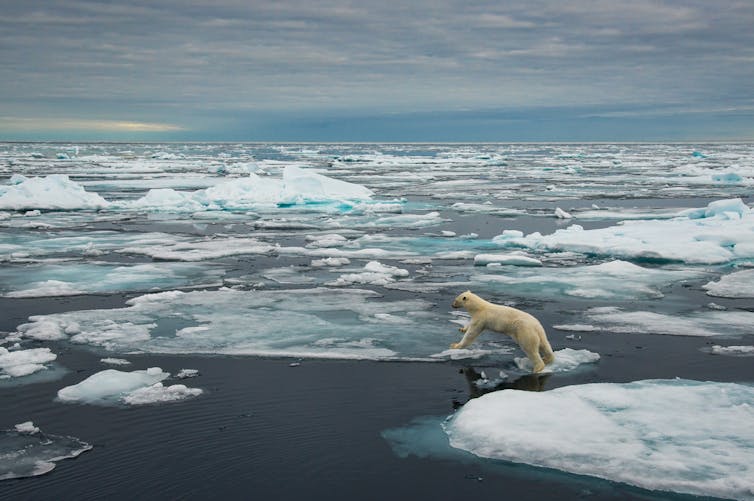
How Should We Communicate About The Climate, Then?
Climate communication strategies and guidelines from a host of different organisations have popularised the idea that climate change is perceived as psychologically distant.
Our own Australian Psychological Society recommends reducing psychological distance by making the local impacts of climate change more salient. For example, highlighting the increase in the number of extreme heat days in one’s town or region.
But if the aim here is to increase climate action, is this good advice?
There is a trade-off between using psychological distance to capture attention, and the idea that it provides a scientific explanation for why people aren’t doing something.
I’ve often used the idea of psychological distance in talks, and spoken to journalists about it, because it starts a conversation and can be a good way to engage otherwise hard-to-reach audiences. But there is a risk of mixing up the narrative appeal with the scientific support.
At worst, repeating ideas about psychological distance could lead people to overestimate the extent to which others think climate change is psychologically distant. In turn, this might demotivate action. If everyone else thinks this is a problem for the future, why should I do something about it now?
We Already Know It’s Here, Now Let’s Act
Another implication is that advocacy groups and governments could be wasting effort on information campaigns that focus on reducing the psychological distance of climate change. If people know that climate change is near and now, why do we need to reinforce that idea?
Our efforts might be better spent increasing people’s belief in being able to take climate action (“self-efficacy”), and that those actions will be effective (“response-efficacy”).
This implies a need to make pro-environmental actions like driving less or eating more plant-based foods easier and cheaper. But it also highlights the need for structural and societal changes that incentivise behavioural change: from offering subsidies for electric vehicles or renewable energy installation, to international agreements on carbon emissions.
There is also a need to remind people of the moral imperative of taking action.
Climate Change Hasn’t Moved ‘Closer’
There is no doubt climate change is becoming more “real” and more concerning for most of us. From 2018 to 2022, the number of Australians “very concerned” about climate change has nearly doubled, from 24% to 42%.
These changes in attitude are almost certainly linked to the Black Summer bushfires of 2019-20. But does explaining this shift as a reduction of psychological distance add anything to our scientific understanding?
The results of this new study strongly suggest the answer is no. It is time we moved on from considering psychological distance as an impediment to action.
We know climate change is affecting polar bears, but we also know it is affecting us right now. Our efforts now must be focused on changing behaviour at both the societal and individual level.![]()
Ben Newell, Professor of Cognitive Psychology and Director of the UNSW Institute for Climate Risk and Response, UNSW Sydney
This article is republished from The Conversation under a Creative Commons license. Read the original article.
The IPCC’s calls for emissions cuts have gone unheeded for too long – should it change the way it reports on climate change?
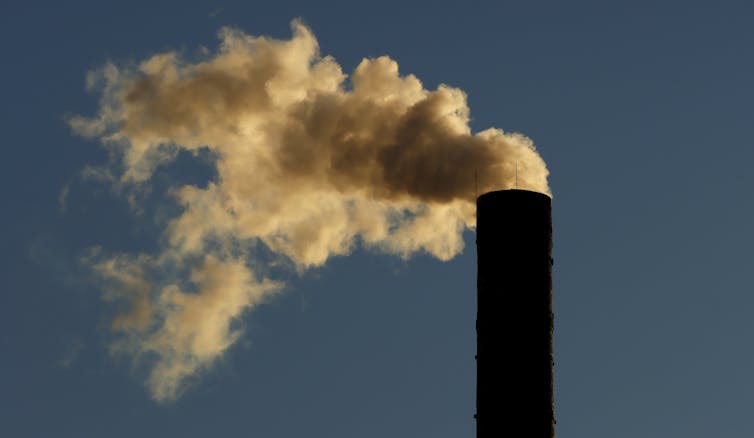
Emissions from human activities are substantially increasing the atmospheric concentrations of the greenhouse gases CO₂, methane, CFCs and nitrous oxide. These increases will enhance the greenhouse effect, resulting on average in an additional warming of the Earth’s surface.
Long-lived gases would require immediate reductions in emissions from human activities of over 60% to stabilise their concentrations at today’s levels.
These are not statements from the latest report released by the Intergovernmental Panel on Climate Change (IPCC). They come from its first assessment in 1990.
Back then, the IPCC acknowledged there were uncertainties in the predictions due to incomplete scientific understanding of sources and sinks of greenhouse gases. But what has actually happened in the 30 years since largely matches the predictions:
an average rate of global sea level rise of 30-100mm per decade due to the thermal expansion of the oceans and the melting of some land ice
an increase of global mean temperature of about 0.3℃ per decade under business as usual.
The IPCC also predicted the rise in temperature would slow as we ramped up efforts to cut emissions, but this scenario hasn’t been tested because emissions reductions never happened.
In 1990, the IPCC also presented the first warnings about potential climate change impacts. It then repeated them in one form or another in the following five assessment reports. But emissions continued to rise each year, resulting in a global temperature increase of 1.1-1.2℃.
We Know How To Reduce Emissions
On a more positive note, annual emissions from 18 countries have peaked during the past decades – but not always as a result of climate policies. For example, the UK’s manufacturing capacity reduced significantly as companies moved off-shore. Nevertheless, global emissions kept rising.
Chapters in IPCC reports covering agriculture, land-use change, energy supply, transport, buildings, industry and urban settlements repeatedly provided clear guidance on emissions cuts, such as this section from 2001:
Hundreds of technologies and practices for end-use energy efficiency in buildings, transport and manufacturing industries account for more than half of the potential to reduce greenhouse gas emissions.
Details of how to reduce emissions from improved energy efficiency in all sectors have been repeated in all six IPCC assessments. But many opportunities to reduce energy demand, and save costs, have not been implemented. Although scientific knowledge has advanced since 1990 and a range of low-carbon technologies have evolved and improved, the key IPCC messages have remained the same.
Given the many repeated warnings, why have global greenhouse gas emissions continued to rise? Typical answers include population growth, the rise of the middle classes in many developing countries, increased consumerism, greater tourism, lobbying by the fossil fuel industry and higher consumption of animal proteins.
National and local governments have also struggled to implement strong climate policies because the majority of their citizens and businesses remain unwilling to change their behaviour. This is even the case when co-benefits are clearly evident, including improved health, reduced traffic congestion and lower costs.
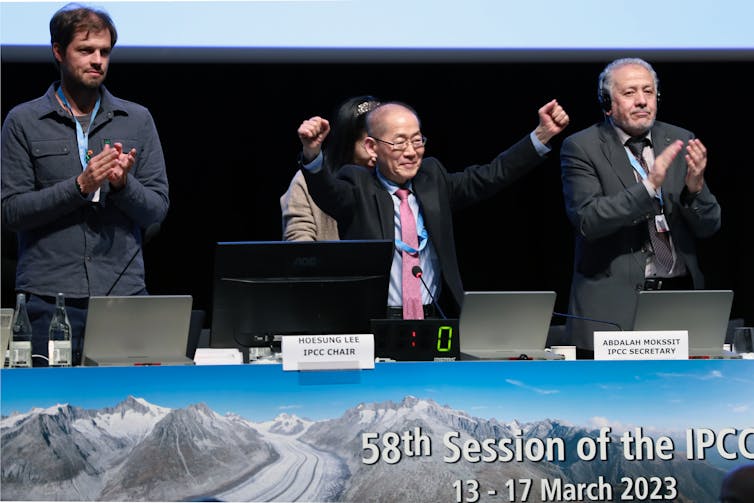
A Possible Future For The IPCC
Having assessed thousands of published research papers over 33 years, what has the IPCC actually achieved since its inception in 1988? And what should be its future role given that many of its strong messages have largely gone unheeded?
Arguably, present and future climate impacts would have been even worse without the IPCC’s work. With each report, the urgency to act on both mitigation and adaptation increased. Few climate deniers now remain. More people want their governments to act.
Although total global emissions continue to rise, energy-related carbon dioxide emissions may be reaching a plateau. According to the International Energy Agency, these emissions rose by under 1% in 2022 – less than initially feared after the COVID dip – largely because of the growth of solar, wind, electric vehicles, heat pumps and improved energy efficiency measures.
So there is hope. But after 25 years of personal involvement with six IPCC reports, my view is that it’s time to review the role of the IPCC and its three main working groups before the next assessment cycle begins.
Since climate science continues to evolve, the IPCC’s Working Group One on the science of the climate system should continue to assess and present the latest knowledge every five to six years.
The need for adaptation and resilience is finally receiving greater attention, mainly as a result of more extreme climate impacts and growing insurance claims. Therefore, Working Group Two should continue but report every two years so that both scientific analyses and local real-world experiences can be shared quickly between local and national governments.
Measures to cut emissions have evolved as newer technologies have been developed and refined. The present understanding of the policies and solutions to reducing emissions across all sectors is similar to 1990 knowledge – we just need to get on with implementing solutions by removing remaining barriers through regulation and advice.
Research to reduce and capture carbon dioxide emissions will continue, but given the urgency, it is too risky to hope that new low-carbon technologies and systems will one day prove to be commercially successful. Overall, the IPCC’s Working Group Three on mitigation has done its job and should be replaced by a new working group on changing human behaviour.
Behavioural science has been included in various chapters within more recent IPCC reports. Without significant social change in the near term, the emissions curve will not bend downwards. Renewed emphasis on how to best achieve societal change across cultures as a matter of urgency is crucial.![]()
Ralph Sims, Emeritus Professor, Energy and Climate Mitigation, Massey University
This article is republished from The Conversation under a Creative Commons license. Read the original article.
Australia’s adoption of electric vehicles has been maddeningly slow, but we’re well placed to catch up fast
Scott Dwyer, University of Technology SydneyAustralia has long had a love affair with the internal combustion engine. Its first petrol-powered car was developed in 1901. (Admittedly, the engine was imported from Germany.)
Roll forward 122 years and there’s now a registered motor vehicle for every one of the 20 million people of driving age in Australia. And fossil fuels power 99.9% of these vehicles.
The slow pace at which Australia has adopted electric vehicles is maddening to many. But the transition to electric vehicles is changing gear in Australia, driven by both consumers and government.
The early signs of this shift can be seen in the latest quarterly vehicle sales data. Two-thirds of medium-sized cars sold were electric.
Also this week, the National Electric Vehicle Strategy filled a glaring hole in federal policy. All the states and territories and many local governments had for some time taken steps to boost the uptake of electric vehicles.
Electrifying the vehicle fleet is going to be one of Australia’s biggest challenges this century. But what makes Australia different from other countries? And why does it make sense to embrace a position as a fast follower?
A Country Wedded To The Car
You can see why cars are so popular in a country like Australia. We’re the sixth-largest country in the world, but the 55th-most-populous. With only around three people per square kilometre, we regularly travel large distances through sparsely populated areas.
Australia also had a burgeoning automotive industry, which spawned fierce loyalties among fans of domestic brands. Its long decline began in the 1940s, with the last vehicle manufacturer shutting up shop in 2017.
Globally, too, the time of internal combustion engine manufacturing seems to have passed. The impacts of human-induced climate change are intensifying, with the transport sector responsible for a large share of global emissions that stubbornly refuses to decline.
The electrification of transport offers a route to decarbonise this sector. It will also bring a host of other benefits such as improved health through reduced local air pollution.
Electric vehicles aren’t new. The first cars were electric but were eventually outcompeted by their fossil-fuelled counterparts. It wasn’t until the start of the last decade that upstarts such as Tesla began disrupting the automotive sector with fully electric offerings.
Not long after this Australia began a series of electric vehicle demonstration projects. The first was a Western Australian trial way back in 2010. However, sales and model availability remained stubbornly low. This was largely due to weak policies.
We Have The Resources To Go Electric
Adding to the frustration of EV advocates is Australia’s wealth of resources that can enhance the benefits electric vehicles offer.
Australia has some of the best wind energy resources in the world with an estimated 5 terawatts of potential. It also has the world’s highest rooftop solar capacity per person. Over 3 million households can power their homes (and potentially vehicles) for free when the sun is shining. There are also 180,000 residential batteries, helping households store the sun’s energy for later use.
The “lucky country” also boasts huge deposits of the minerals needed for making renewable energy technology like solar panels, wind turbines and batteries. Australia produces over 50% of the world’s lithium and 20% of its cobalt, as well as aluminium (27%), nickel (23%) and copper (11%).
And There’s Expertise To Accelerate The Transition
While the new national strategy makes all the right noises, the main critique emerging is that it lacks real teeth. In particular, the specifics of a badly needed fuel-efficiency standard are still being developed.
However, there is still plenty in the strategy to offer promise. It identifies the need for:
- better infrastructure planning and deployment
- training and attracting a workforce with the necessary skills
- product stewardship for end-of-life EV batteries
- better access to charging for apartment residents
- funding for more guidance and demonstrations.
We also have a vibrant and innovative domestic electric vehicle industry. It boasts exciting companies such as NASDAQ-listed Tritium, the ubiquitous JetCharge and a host of others including EVIE Networks, Jolt Charge, ACE EV and EVSE Australia. They have been creating a market without any federal government encouragement or support. Harnessing their innovation and drive will be key.
Australia’s world-class energy researchers have been exploring issues relating to a mostly renewables-powered electricity grid for decades. In recent years, they have been investigating how electric vehicles could become an important asset for the electricity grid as “batteries on wheels”. The renewable energy agency, ARENA, has spent over $2 billion to increase the renewable energy supply in Australia. Over $100 million has gone to transport-related projects.
The RACE for 2030 Cooperative Research Centre is another major long-term industry and research collaboration. It has received $69 million in government funding and $280 million in cash and in-kind support from partners to accelerate the transition to reliable, affordable, clean energy. This year it allocated $3.4 million to the Australian Strategic EV Integration (SEVI) project.
The SEVI project will test how electric vehicles can be incorporated within government fleets, holiday parks, and residential areas and in three states (New South Wales, South Australia and Western Australia). To take one example, the South Australian part of the trial will examine how holiday parks could benefit from electric vehicles generating new sources of revenue and reinforcing the grid in rural areas. We can draw on the lessons from such trials to speed up the adoption of electric vehicles across Australia in ways that maximise the benefits for consumers, communities, businesses and the grid.
Australia now has impressive capacity within industry, government and academia to help drive the transition to an all-electric fleet. We will need to embrace our country’s unique features and harness its resources to translate the new electric vehicle strategy from good intent into real action.![]()
Scott Dwyer, Research Director - Energy Futures, University of Technology Sydney
This article is republished from The Conversation under a Creative Commons license. Read the original article.
Replacing methane with hydrogen to heat homes is a bad idea – here’s why

Hydrogen is an energy-rich gas, which releases no carbon emissions when burned. It can be used in most equipment where fossil fuels such as natural gas (methane) or LPG (liquefied petroleum gas) are currently used. In your home, that might mean a gas boiler, heater, cooker or all three.
It can also power combustion-engine vehicles which might otherwise run on petrol. And it can generate enough heat for heavy industry processes such as steelmaking, which is overwhelmingly done by burning coal at present.
These qualities make hydrogen gas an attractive replacement for the fossil fuels driving climate change. But could (and should) it heat your home?
How Is Hydrogen Produced?
Hydrogen is one of the most abundant elements on Earth but because it reacts so readily with other elements, there is very little pure hydrogen available (it’s only 0.00005% of the atmosphere). Instead, hydrogen must be extracted and stored.
If renewable electricity generated by wind, solar and other sources is used to separate hydrogen from water, it could create an entirely sustainable energy cycle. This is called “green” hydrogen but, at the moment, it accounts for only 0.1% of global hydrogen production. The infrastructure necessary to produce green hydrogen at scale hasn’t been built yet as there is insufficient incentive to do that while it’s cheap and simple to make hydrogen using fossil fuels.
Most hydrogen currently made worldwide is extracted from fossil fuels, about half of it from methane and the rest from oil or coal. Extracting hydrogen from fossil fuels releases carbon. Only about 1% of global hydrogen production is subject to an industrial process known as carbon capture, use and storage (CCUS), which filters out most of the carbon (the current best capture rate is about 90%) to create “blue” hydrogen.
The vast majority of hydrogen is labelled “grey”, where the carbon is simply emitted to the atmosphere. So while it may be clean at the point of use, hydrogen’s production is contributing to global heating.
Should We Use Hydrogen In Homes?
While hydrogen has the potential to be a green substitute for fossil fuels, this is still very much a future prospect.
To decarbonise home heating and hot water, the UK’s recent energy security bill promoted heat pumps as a replacement for gas boilers. Most countries in Europe and North America have done the same.

Heat pumps work like a refrigerator in reverse, pushing heat into rather than out of a space. The reason heat pumps are so useful is that they can convert one unit of electricity into two or more units of heat, referred to as a coefficient of performance or COP of 2. By comparison, gas boilers have a COP of about 0.9. It’s even lower if they burn hydrogen, perhaps less than 0.5.
The bill set a target of fitting 600,000 homes with heat pumps each year by 2028. The UK Climate Change Committee (UKCCC), an independent body that advises the government, projects that 52% of home heating will come from heat pumps by 2050. All of those homes will be progressively disconnected from the gas grid.
At the same time, households are being encouraged to become more energy-efficient by installing insulation in windows, walls and lofts. This could reduce the average energy demand for space heating by as much as 75% if retrofitted to Passivhaus standard (an international benchmark for very low-energy construction).
Even tougher rules apply to new build homes. In Scotland, building regulations will prohibit the installation of gas boilers in homes built after 2024 and legislation was recently passed to introduce a Scottish Passivhaus-equivalent standard.
With fewer homes connecting to the gas grid and much lower energy demand for those that are connected in future, maintaining the national gas grid for domestic use seems wasteful. Maybe it’s time to think about turning off the gas for good.
The Gas Grid
A recent report by a government advisor known as the Hydrogen Champion recommended blending up to 20% hydrogen into the gas grid, similar to how most petrol now has 10% ethanol blended in. This is listed in the report under the heading “Stimulate Demand” and it seems clear the aim is to encourage hydrogen production rather than reduce carbon emissions.
The report states:
Hydrogen blending alone could support up to approximately 5GW of hydrogen production near term and has the lowest risk profile of off-takers [potential buyers]. This significantly helps to make CCUS-enabled hydrogen projects investible during scale-up.
Domestic gas use is considered “low risk” because most householders simply don’t have an alternative.
In the short term, using any hydrogen for home heating would almost certainly increase carbon emissions because, as noted above, hydrogen has a lower COP than methane and the vast majority is produced from fossil fuels without CCUS.
In the longer term, hydrogen is much more likely to be used in transport and heavy industry than in houses. The report states that the Department for Energy Security and Net Zero has “strongly emphasised the need to prioritise industrial consumers”. The UKCCC projects that only 5% of domestic heating will come from hydrogen and that will be predominantly as a secondary supply for hybrid heat pumps.

The message from UK gas network operators is that they are transitioning the gas grid to hydrogen, with work already underway planning the upgrades to regional pipelines that will be required and for pilot projects with small groups of houses. Boiler manufacturers are also promoting hydrogen-ready boilers that can be installed now in anticipation of 100% hydrogen supply.
But transitioning the entire gas grid to hydrogen would be an enormous task. More likely is that some hydrogen hubs develop in places with surplus renewable energy generation to produce green hydrogen, alongside high industrial demand and a high density of buildings where heat pumps and retrofitting will be difficult.
What Should Households Do?
You have no control over what sort of gas gets delivered through the pipes to your house. If an 80:20 blend is introduced, it will be to stimulate business investment in the production of hydrogen, and it will have to first be deemed safe for all existing household uses such that no modifications are required. In the longer term heavy industry and transport will suck up the vast majority of hydrogen produced.
What you can do, if you can afford it or are eligible for government support, is insulate your home and install a heat pump, which will immediately reduce your household carbon emissions as well as save you money.
As for hydrogen, forget about it.

Don’t have time to read about climate change as much as you’d like?
Get a weekly roundup in your inbox instead. Every Wednesday, The Conversation’s environment editor writes Imagine, a short email that goes a little deeper into just one climate issue. Join the 10,000+ readers who’ve subscribed so far.![]()
Ran Boydell, Associate Professor in Sustainable Development, Heriot-Watt University
This article is republished from The Conversation under a Creative Commons license. Read the original article.
We need a ‘lemon law’ to make all the homes we buy and rent more energy-efficient

A long-awaited increase in energy-efficiency requirements for new homes is part of revised Australian construction standards taking effect on May 1. All new homes must achieve a minimum 7-star whole-of-home energy rating from October, following a six-month transition period.
It’s a crucial step in responding to the climate crisis and decarbonising Australian society. It will also make our homes more affordable and comfortable to live in, and improve our health and wellbeing.
These regulations affect the roughly 150,000 new homes built each year across Australia. But what about the other 10.8 million homes we’re already living in?
Any transition towards a low-carbon future must include big improvements to existing housing. Housing accounts for around 24% of overall electricity use and 12% of carbon emissions in Australia.
As a nation we spend at least as much on renovations and retrofits as on building new housing. Upgrading the energy performance of existing homes should get at least as much attention as new homes to help make the transition to low-carbon living.
How Do You Know If A Home’s A Lemon?
Australians can access lots of information about the performance of appliances and vehicles, but almost nothing about the quality and performance of our housing.
When buying an appliance or a car we can see how much energy it will use and how much it will cost to run. We can then compare options and improve our decision-making.
We also have rights if our purchase doesn’t perform as described. Australia doesn’t have a specific “lemon law” like the United States. Nonetheless, a raft of laws protect buyers of both new and used vehicles.
Yet when it comes to our biggest and most important buying decision – buying or renting a home – we have a right to precisely nothing in terms of information on its energy efficiency and readiness for a sustainable future. What little information is provided is often misleading.
Energy Performance Must Be Disclosed In Other Countries
Housing energy rating schemes are used worldwide. These schemes rate and compare the energy use of housing to help people decide what they will rent and buy.
Energy ratings are important. They tell us how much we are likely to spend on essential activities such as heating and cooling our homes. Amid a cost-of-living crisis, including soaring energy prices, this matters to all Australians, particularly those doing it tough.

Australia had a world-leading housing energy rating scheme when it was adopted in the ACT in 2003. Since then progress has stalled on a national scheme similar to those established globally in recent decades.
Energy ratings also reveal the underlying condition of our housing. Housing in Australia built before the early 2000s typically has only a 1-3 star energy rating. That level of performance more than doubles its energy bills and emissions compared to a new home.
People looking to buy or rent could avoid the housing equivalent of a lemon if we had a national scheme that requires a standard, independently verified energy performance assessment be made available to them. This would create an incentive for sellers and landlords to improve the energy performance of housing. It would also give policymakers a national picture of where retrofit schemes could best be targeted to meet our emission-reduction commitments.
What Are The Prospects For Such A Scheme?
Discussions are taking place in Australia about introducing a requirement for households to obtain some sort of energy or sustainability rating on their dwelling, potentially at point of sale or lease. A similar requirement is in place in other locations like Europe, the United Kingdom and even the ACT.
We have the resources and knowledge to establish a robust system that is: accurate and holistic, robust and consistent, applied and clear, transparent and adaptive.
The benefits of such a scheme include:
encouraging energy-efficient retrofits of existing homes for the health and comfort of Australians
supporting social equity between people living in older homes and those in newer homes, and particularly for renters and low-income households
giving Australians a better understanding of the houses they rent or buy, in the same way they choose their appliances
reducing emissions from housing to help achieve the target of net-zero emissions
providing information to inform and develop policies for existing homes that then align with policies for new homes.
The key is not to do a cheap job on this. That would waste the effort, time and money we put into retrofitting homes, and risk us missing our climate commitments. It would also mean our most vulnerable households would find it even more difficult to access decent, energy-efficient housing.
Doing a proper job means we will all have access to independent verified information. It will help fix market failures and provide peace of mind about the places we live, with the potential to upgrade them reliably and cost-effectively.![]()
Trivess Moore, Senior Lecturer, School of Property, Construction and Project Management, RMIT University; Lisa de Kleyn, Research Fellow, Centre for Urban Research, RMIT University, and Ralph Horne, Associate Deputy Vice Chancellor, Research & Innovation, College of Design & Social Context, RMIT University
This article is republished from The Conversation under a Creative Commons license. Read the original article.
Rising seas could flood nests of vulnerable sea turtles – new research

Sea-level rises caused by global warming could flood sea turtle nesting beaches in Australia, several Caribbean islands, Costa Rica and the US.
Our findings suggest that flooding could deprive five vulnerable species of valuable nesting sites. Even if climate change this century is not as extreme as some scenarios project, we predict that all nesting habitats at two of the seven areas we studied will be flooded. The nests of leatherback turtles, which are already listed as vulnerable to extinction by the International Union for the Conservation of Nature (IUCN), are most at risk.
All seven species of sea turtles mate close to coastlines in tropical and sub-tropical waters. Gravid (pregnant) females then crawl onto low-lying sandy beaches, dig a shallow nest by scooping out dry sand with their flippers and deposit a clutch of eggs. Sea turtles may return to the same beach to make several nests each season.
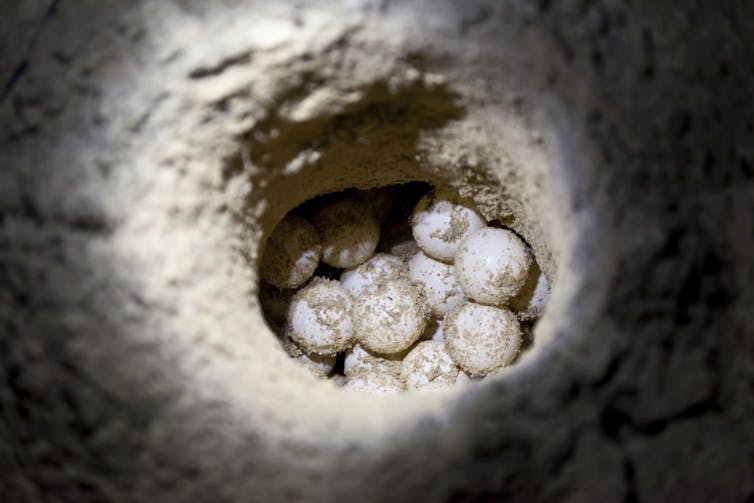
Hard-shelled species, like hawksbill or green turtles, crawl across rocky reef flats to reach the beach while leatherback turtles prefer nests in open expanses of beach close to deep waters. Breeding adults will migrate long distances between foraging and breeding habitats and return to the same place to breed across many decades. A green turtle that was tagged at foraging grounds in Kenya in 2003 was observed breeding in the Chagos Archipelago in 2015 and then tracked by satellite transmitter to the same place in Kenya in 2016.
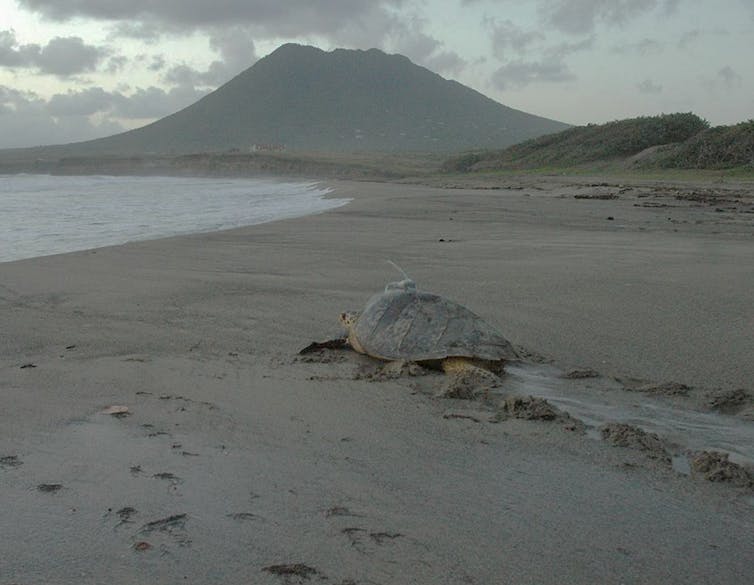
Leatherbacks Most At Risk
We estimated the probability of 2,835 sea turtle nests in seven breeding grounds being completely submerged all year round under moderate and high greenhouse gas emission scenarios projected between 2010 and 2100 by the Intergovernmental Panel on Climate Change (IPCC). These included Mondonguillo beach in Costa Rica, the Guanahacabibes peninsula in Cuba, Saona Island in the Dominican Republic, the coast of Ecuador, Raine Island in Australia, St George Island in Florida, US, and Sint Eustatius in the Caribbean. All were used by green, hawksbill, leatherback, loggerhead and olive ridley sea turtles.

As you might expect, breeding grounds on flat beaches were most vulnerable to flooding. Under a moderate emissions scenario, in which global emissions of carbon dioxide and other greenhouse gases peak around 2040, we estimated that all nests on Raine and Saona Islands would be vulnerable to flooding or vanish entirely.
Under the same scenario, we estimated that all nesting sites on St George Island and Mondonguillo beach might also flood. Within studied breeding grounds used by multiple turtle species, we estimated that leatherback turtle nests would be particularly threatened. This is because leatherbacks tend to nest near the high tide line, while hawksbill and green turtles nest higher up, closer to dunes and steep cliffs. In St Eustatius under a moderate emissions scenario, 50% of leatherback, 18% of hawksbill, and 13% of green turtle nest sites may be vulnerable to flooding on average by 2050.

As female sea turtles return to nest on the same beaches across multiple decades to breed, sea-level rises could lead many to nest on flooded beaches, potentially reducing the number of turtles hatching. The long-term effects of this on sea turtle populations are unclear – further research should investigate whether turtles can adapt to changes in their nesting habitat due to flooding.
In the meantime, conservationists must try to mitigate the consequences of sea-level rise for sea turtles and help make these species more resilient. This could include shifting sand to increase the height of potential nesting sites on beaches and relocate any nests threatened by flooding to safe places under controlled conditions. It will be necessary to carefully assess their temperature to avoid skewing sex ratios, as warmer nests increase the proportion of females hatching from each clutch of eggs.

Don’t have time to read about climate change as much as you’d like?
Get a weekly roundup in your inbox instead. Every Wednesday, The Conversation’s environment editor writes Imagine, a short email that goes a little deeper into just one climate issue. Join the 10,000+ readers who’ve subscribed so far.![]()
Nicole Esteban, Associate Professor of Marine Biology, Swansea University and Marga L. Rivas, Postdoctoral Researcher, Biology Department, Marine Research Institute (INMAR), Universidad de Cádiz
This article is republished from The Conversation under a Creative Commons license. Read the original article.
Snailfish: the ‘impossible’ fish that broke two deep sea records shows the importance of ocean exploration
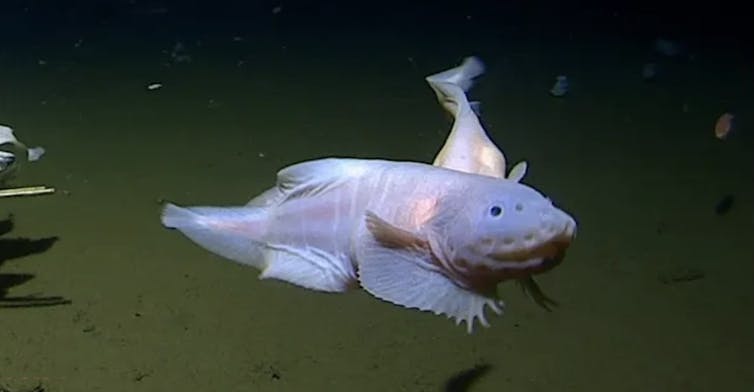
When thinking of animals that live in the most extreme environments on Earth most of us probably don’t think of the snailfish. Its name may not hint at extraordinary physical capabilities but the snailfish has broken the record for living at the deepest ocean depths known to humanity.
In fact scientists believed it was physiologically impossible for fish to survive conditions below 8,200 metres. Until recently, when Australian and Japanese researchers found one at a record-shattering 8,336 metres in the Izu-Ogasawara Trench, south of Japan. That’s 158 metres deeper than the previous record, also set by a snailfish during an encounter in 2017 in the Marianas Trench, about 2,000km east of the Philippines.
The deep ocean has yet again shown us there is still much to be discovered if we only have the willingness to look.
Defined as waters below 200 metres, this environment makes up 50% of Earth’s surface. Researchers estimate that only 10-28% of marine life is currently known, and most knowledge stems from researchers based in Europe, the US and Japan.
Scientists believe a lack of understanding of ocean life and its distribution is one of the biggest barriers to restoring marine biodiversity damaged by overfishing, pollution and climate change.
But when we do explore the deep ocean, we are often rewarded with new discoveries.
My current research focuses on the relatively shallow parts of the ocean from 0-500 metres. Even in relatively well-researched areas such as Bermuda, discoveries can still be made. In one oceanographic expedition, the international team I was part of discovered vast expanses of black wire coral gardens, the deepest record of the invasive lionfish, and several new species of red algae.

It’s common for up to 50% of all species (and sometimes almost 95%) sampled on a single deep-ocean expedition to be new to science. New habitat discoveries are also common. In March 2023 scientists on an expedition to the Mid-Atlantic ridge for the Schmidt Ocean Institute discovered numerous new hydrothermal vents also known as black smokers (like geysers, or hot springs, on the ocean floor).
Why Deep Ocean Discoveries Matter
Research suggests hydrothermal vents may have played a key role in the origin of life on our planet. So any new information about these unique ecosystems and their inhabitants has implications for humanity as well as extraterrestrial life.
Hydrothermal vents also show the astonishing adaptability of life. In 2012, scientists discovered new species of crabs in the Southern Ocean, the hairy-chested Hoff crabs. Named after their resemblance to the Baywatch actor David Hasselhoff, they construct crab cities around black smokers. There can be more than 700 crabs per square metre. The fur on their chest incubates microbes that can convert toxic chemicals that come out of scorching black smokers into energy. The crabs use special comb-like mouthparts to remove the energy-rich bacteria from their fur to eat. It is their main source of nourishment.
Apart from the excitement and wonder that comes with it, these discoveries provide new information that benefits society. Studies have found this habitat could harbour treatments for human diseases. Recently, researchers studied fungi found in cold-water animals called sea pens in the northeast Atlantic and discovered they produce compounds that show promise as potential drug treatments for chronic musculoskeletal diseases such as osteoarthritis.

Similarly, studies show bacteria living in deep-water sponges may have both antibiotic and antitumour properties.
The potential of bioprospecting – studying wildlife and plantlife for valuable new resources – has barely been explored in the case of deep ocean. But the industry is rapidly growing and already worth billions of dollars. Countries agreed to share the benefits as part of the UN high seas treaty in March 2023. But the new international law has not yet been ratified and it is too soon to tell whether developed nations will stick to their pledge to share the ocean’s resources with all member states.
Where Do We Go Next?
Very little of the deep ocean has been systematically explored so far due to financial and logistical constraints. Remotely-operated vehicles cost from US$15,000 (£12,100) to millions of dollars, while a submarine built for deep ocean exploration can cost almost US$50 million. In addition, offshore exploration requires large research vessels to be deployed for weeks at sea which involves months of planning and logistics.
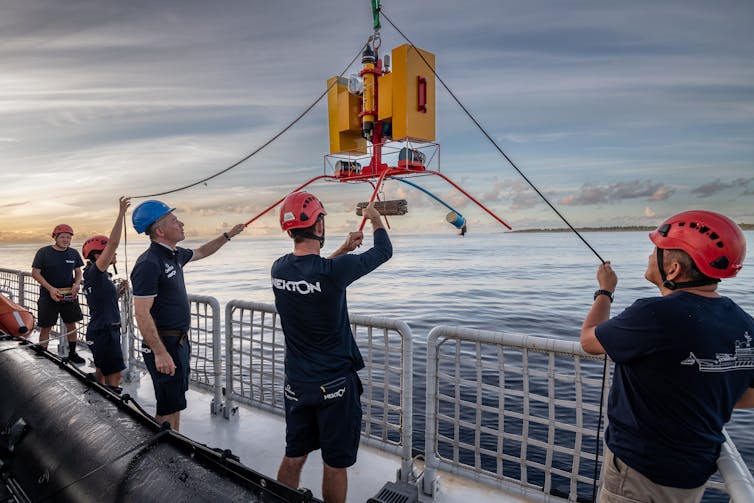
The recent snailfish discovery was made during an international expedition involving Australian and Japanese researchers who set out to explore life in the trenches off Japan. For that study, the team used landers, metal cages that land on the seafloor using ballast weights. Landers are equipped with cameras, lights and bait for attracting predators. While it is possible to explore even the greatest ocean depths with submarines, landers are easier to operate, and can stay underwater for longer.
We are losing deep sea life before we can even discover it. Overfishing, noise pollution and global warming are already destroying deep ocean ecosystems and their inhabitants. Commercial deep seabed mining for minerals has not yet been carried out but it is a looming threat.
Governments allocate on average only 1.7% of their annual research budgets to explore beneath the ocean surface. If scientists make new discoveries with almost every study of the deep ocean, imagine what we could achieve if governments, charities and marine scientists worked more closely together and had better funding.![]()
Paris Stefanoudis, Researcher in Marine Ecology and Conservation, University of Oxford
This article is republished from The Conversation under a Creative Commons license. Read the original article.
2030 nature targets agreed in December may already be slipping out of reach
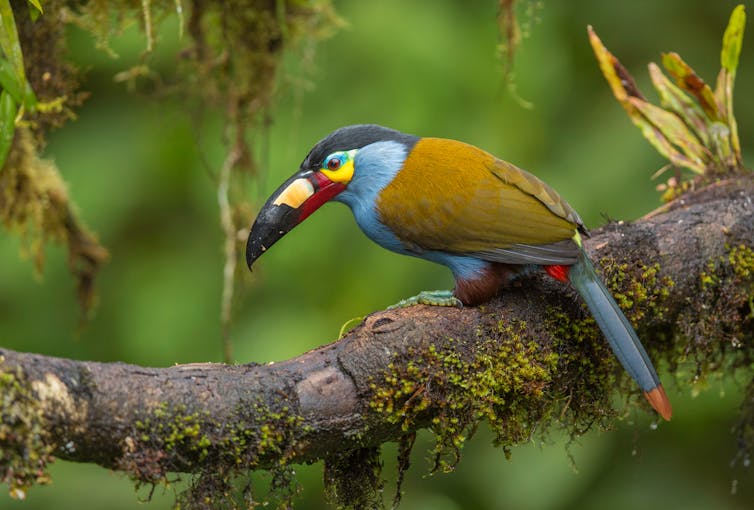
As recently as December 2022, 196 countries signed an agreement promising to “live in harmony with nature” by 2050 and to “halt and reverse biodiversity loss” by 2030.
Previous research has shown that coordinated action at the global scale is urgently needed to meet such goals. As conservationists, we’re also aware of a lag between when environmental changes like rising temperatures are observed by scientists and when organisms respond. We wanted to find out how this “ecological lag” might affect the world’s chances of stemming the loss of nature by the end of this decade.
Biodiversity – that is, the variability among living things, such as the number of species in a patch of forest – is declining globally. Habitat loss, harvesting, climate change, pollution and invasive species are the major driving forces behind this ecological reorganisation. For example, species found on mountains are moving upslope where it is cooler to counteract the effects of higher temperatures in their historical distribution.

These pressures may have immediate consequences, like the loss of trees and habitat during deforestation. But delayed effects, which materialise several years or even decades after the initial environmental change, are also common.
Our new research shows wildlife can take decades to fully reflect the environmental changes humans have already made. Some declines in excess of the 2030 target may already be locked in.
Investigating Ecological Lags
In our new study, we investigated the importance of delayed responses (lags) to climate warming and the expansion of farmland. We used data on trends in the abundance of land-based bird and mammal populations from more than 700 species across the world.
We had previously found that the speed of changes in the use of land (from forest to farmland, for instance) and climate change were useful in explaining population trends. Now we know that historical changes (those which occurred ten to 40 years previously) better explain current observable trends. For example, the population trends of small birds are best explained by how the climate was changing 13 years ago, with this delay rising to 40 years for large birds. In general, we found that larger species display longer ecological lags than smaller species. Previous research has also highlighted that longer-lived species respond more slowly to forest loss.
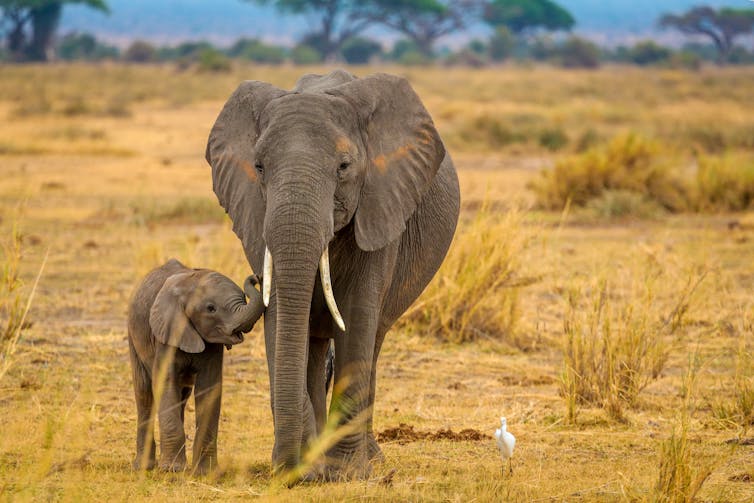
While the combination of past warming and land conversion is generally linked to population declines, these conditions appeared beneficial for small mammals in our study.
Our predictions of future population abundance trends suggested a mix of winners (larger birds like greylag geese could become more numerous) and losers (medium-sized birds, like little grebe, could decline).
Our research suggests that these future population trends will be a product of both concurrent and past environmental conditions. Crucially, the lags of ten years or more that we identified suggest that trends up to 2030 may already be set due to their dependence on environmental change that has already happened.
However, all is not lost.
Although the ecological lags we identified in our study increase the challenge of reversing population declines by 2030, we are increasingly aware of what works in conservation, and success stories are on the rise.
We also assessed the effects of conservation interventions like supplementing the feeding of wildlife, granting species legal protection and creating protected areas of habitat, as well as the impact of hunting. While this kind of exploitation consistently acts as a substantial drag on population trends, management efforts and protected areas had positive impacts. Other studies have identified similar patterns.
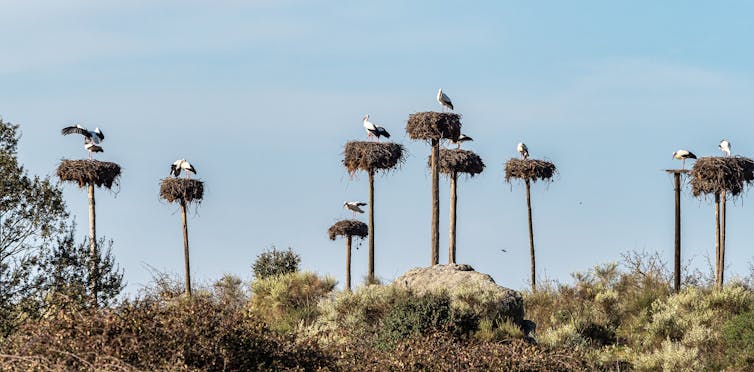
And so, preventing the overexploitation of wildlife is critical to adequately safeguarding biodiversity and the contribution of nature to human life.
The Outlook For Nature
The natural world is being dramatically reshaped by human activity.
Despite decades of international commitments to protect biodiversity, little progress appears to have been made.
The current targets are the most ambitious, and perhaps the most difficult to achieve, yet.
It is critical that people do not become despondent. Only with urgent action to promote the recovery of declining species can the current round of international biodiversity targets remain in our grasp.

Don’t have time to read about climate change as much as you’d like?
Get a weekly roundup in your inbox instead. Every Wednesday, The Conversation’s environment editor writes Imagine, a short email that goes a little deeper into just one climate issue. Join the 20,000 readers who’ve subscribed so far.![]()
Richard Cornford, Research Scholar, International Institute for Applied Systems Analysis (IIASA); Fiona Spooner, Senior Data Analyst, Our World in Data, Oxford Martin School, University of Oxford, and Robin Freeman, Head of Indicators and Assessments Unit, Zoological Society of London
This article is republished from The Conversation under a Creative Commons license. Read the original article.
Arctic sea ice loss and fierce storms leave Kivalina’s volunteer search and rescue fighting to protect their island from climate disasters
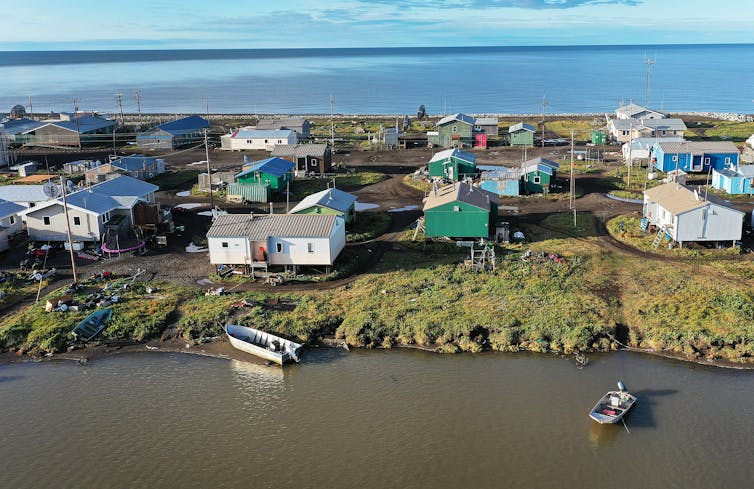
As winds and waves from Typhoon Merbok devastated communities along the coast of Western Alaska in 2022, Reppi Swan Sr.’s phone began to ring at Kivalina, a barrier island 80 miles above the Arctic Circle.
A neighboring family had lost 3 feet of land to the rumbling lagoon, and their home was now sitting just 6 feet from the angry water’s edge. Reppi called his brother Joe Swan Jr. and quickly slid into his insulated rain gear.
As a volunteer first responder, Reppi plans for emergencies like this. He and his wife, Dolly, had been patrolling the island for dangerous erosion every few hours during the storm. To prepare, he had already inspected the city’s heavy equipment and located a pile of boulders left over from a recent construction project.
Working through the rain, Reppi delivered boulders to the threatened home. With their cousin Carl Swan serving as a spotter, Joe carefully arranged the boulders with a backhoe to stabilize the bank. It would hold at least until the storm subsided.

With protective sea ice declining and warming Pacific waters supercharging fall storms in the Bering and Chukchi seas, Alaska Native villages like Kivalina are experiencing growing risks to coastal livelihoods and critical infrastructure, including runways. Reppi’s efforts reflect the challenges many front-line communities face as they struggle with the effects of climate change.
Dealing With Disasters Has Become Normal
Indigenous governments, nonprofits, hunters and first responders from Iñupiaq, Yupik and Unangan communities across Alaska have long been preparing for today’s climate hazards. They have created initiatives from coastal monitoring to relocation planning, yet state and federal support programs are underfunded and poorly structured for the scale of today’s challenges.
Kivalina, an Iñupiaq community of 500 people, has been dealing with climate-fueled erosion and flooding for decades. Nearly 20 years ago, it was one of four villages the U.S. government determined to be facing “imminent danger.” In 2009, 27 additional villages were added to the list.
Over the years, Reppi, Joe and scores of other volunteers in Kivalina have improvised sea walls with everything from sandbags to sheets of metal cut from the chassis of an abandoned fuel plane.
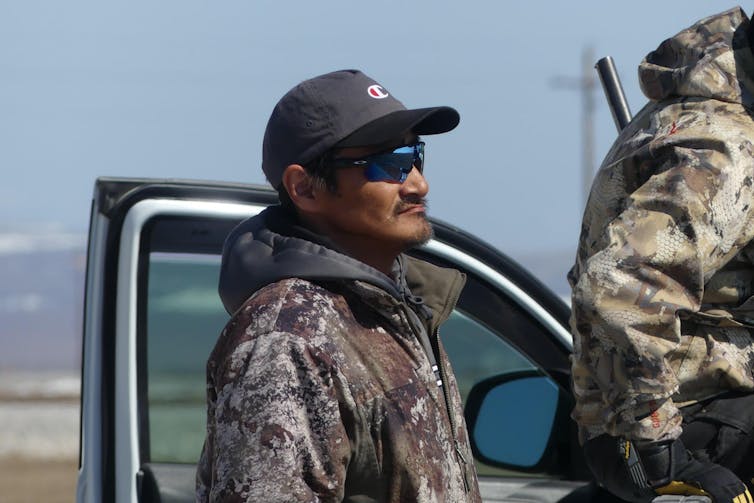
As a field officer during such incidents, Reppi reflects on how difficult it is to send anyone into harm’s way, whether to search for a lost hunter or to save homes and infrastructure. He remembers one storm in which he put a lifeline on his volunteers as they tried to bolster the shoreline. “That was the hardest thing I had to do,” Reppi recalls, “because one of my guys had to stay down there and tie each super sack together. To top that off, the 8-foot to 10-foot waves would just engulf them completely.”
He talks about Typhoon Merbok with the calm of someone for whom storm readiness and response have become normal parts of everyday life. Because they have.
‘We Just Can’t Adapt This Fast’
For Indigenous nations around the world, the roots of climate risk today are often colonial in origin. Kivalina’s “uneasiness” with fall storms began shortly after 1905, when the U.S. Office of Education built a school on the island, and began a multidecade process to forcibly settle the autonomous and seminomadic Kivalliñiġmiut nation.
In 1981, after decades of deliberation, Kivalina’s municipal government initiated relocation planning as a means to gain running water and sewer services and to alleviate overcrowding. It was an attempt, as the elder Joe Swan Sr. puts it, to gain “breathing room” so that future generations might flourish. However, planning stalled in 2008 because of a disagreement between traditional knowledge holders in Kivalina and the U.S. Army Corps of Engineers over the suitability of the community’s chosen site.
Kivalina’s relocation has now come to be framed as a response to climate change, but the initial needs that drove relocation planning still remain.

“We’re an adaptable people,” Colleen Swan, Kivalina’s city administrator, told me when I started my doctoral studies 12 years ago, “but since 2004, we just can’t adapt this fast.”
That was the year pieces of the island began shearing off into the sea.
The Local Value Of The Arctic’s Diminishing Sea Ice
Historically, Kivalina’s sea ice would form early enough to protect the coast from fall storms. But with climate change, it forms much later, if at all, leaving the shoreline vulnerable to increased wave activity.
On March 6, 2023, when Arctic sea ice hit its maximum extent for the year, it was the fifth-lowest maximum extent on the satellite record. Kivalina had open water less then 2 miles (3.2 km) out from town, a fraction of what’s needed for a successful bowhead whale hunt.

In 2008, Colleen was among local leaders who initiated the landmark climate justice lawsuit Kivalina v. ExxonMobil. The community sought up to US$400 million in restitution from the 24 largest greenhouse gas emitters in the U.S., companies whose profits are driving climate change. That would have been enough to cover the costs of comprehensive village relocation.
The case was dismissed by a federal court, a decision upheld by the 9th U.S. Circuit Court of Appeals in 2012. A year later, the Supreme Court refused to consider any further appeal.
With the media attention generated by the lawsuit, Colleen has become globally recognized as a front-line leader for climate justice. She has spoken across the U.S. and was part of an Indigenous delegation to the U.N. climate change conference in Copenhagen in 2009. Today, she’s busy addressing climate change on a different scale.
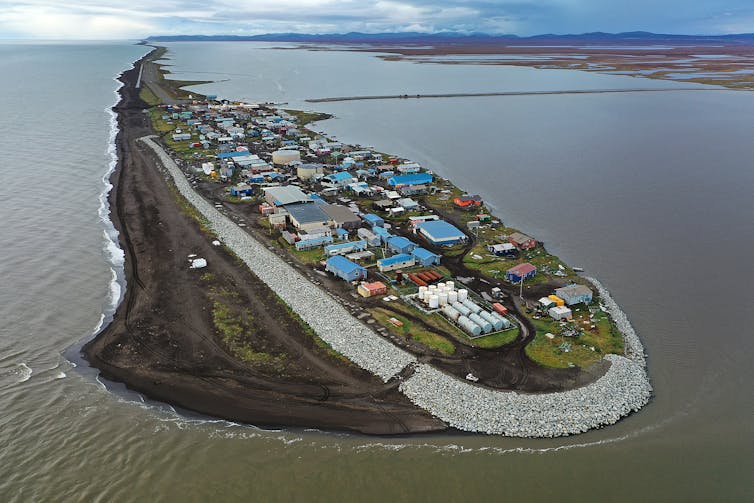
Colleen now manages Kivalina’s Volunteer Search and Rescue, known as SAR, and her brother Reppi serves as its president. Kivalina SAR is an association of hunters and first responders that plays a crucial role in community safety, coastal resilience and hunter support. But climate change has changed the nature of the organization.
“In the past, search and rescue looked for people who were lost or late returning from a hunt.” But with late freeze-up, thin ice and melting permafrost, she explains, “We’re spending more time helping people because of changes to environmental conditions.” Through fundraising, capacity building, and strategic partnerships, Colleen is building up SAR to respond to new hazards as it faces a rapidly changing environment.
Infrastructure Investments Remain Unfinished
From 2008 to 2009, the Army Corps of Engineers constructed 1,600 feet of a planned 2,000-foot rock revetment wall to help protect the island. These partial protections, built when funds were available, have been effective, but they leave critical infrastructure and lagoonside homes exposed – as Typhoon Merbok made clear. As Reppi tells me, “We’re always going to have erosion.”
When erosion from fall storms threatened the airport runway in 2019, city leaders made the difficult decision to redeploy boulders from the existing rock revetment.
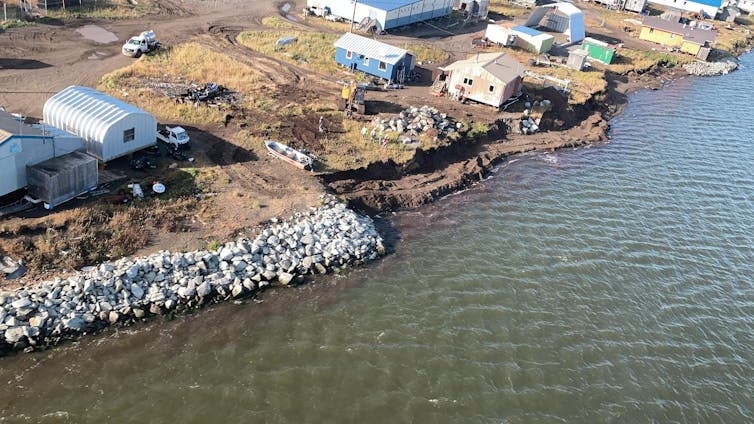
Without comprehensive planning and funding, key segments of the community remain at risk. Kivalina’s first responders must remain vigilant.
After 10 years of lobbying state and federal agencies, Kivalina’s tribal and city councils secured an 8-mile evacuation road to Kisimiġiuqtuq Hill that opened in November 2020. With the state of Alaska compelled by a lawsuit to remedy its systemic underfunding of Alaska Native schools, the Northwest Arctic Borough School District joined the project, opening a new school at Kisimiġiuqtuq Hill in November 2022.
Yet these achievements have also brought new concerns, and Reppi and Colleen are preparing their volunteers to respond to other types of problems, such as road accidents or stranded vehicles.
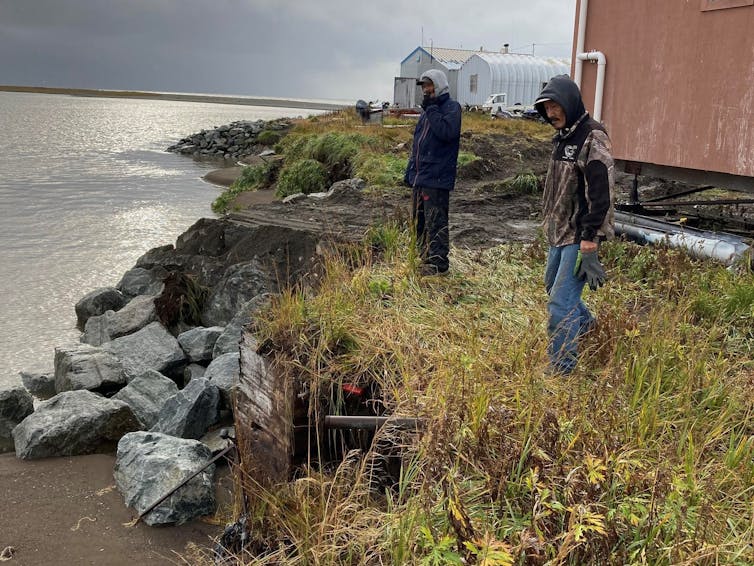
Since Kivalina’s Search and Rescue purchased its first truck in the summer of 2021, Reppi has made regular patrols to study every bend of the poorly lit and steeply pitched road – often through blowing snow. When Kivalina’s children began riding a school bus for the first time, he followed close behind – up and back, three times a day – just in case.
At times this winter, Kivalina’s school bus has been without a certified driver, or sidelined with mechanical issues. When the transportation burden falls on individual families, those without a vehicle, or unable to afford the high cost of fuel, are missing school outright. Lacking adequate snow removal equipment, heavy snow and high winds kept Kivalina’s school closed the entire month of March.
Community Efforts Fill Critical Adaptation Gap
While Kivalina, like many other Indigenous communities, has been clear about its climate adaptation priorities, support from federal and international institutions has been limited.
The Biden administration recently made $115 million available to help 11 Indigenous communities with relocation, but the Army Corps estimated Kivalina alone would need $250 million to $400 million. Kivalina wasn’t on the list.
Indigenous coastal communities bear a disproportionate amount of risk from climate change, and the costs of adaptation often go uncompensated. Without comprehensive investment in local priorities – from planning and infrastructure to capacity-building – organizations like Kivalina’s Search and Rescue will continue to fill a critical gap, performing the invisible labor of climate adaptation.![]()
P. Joshua Griffin, Assistant Professor of Marine and Environmental Affairs and American Indian Studies, University of Washington
This article is republished from The Conversation under a Creative Commons license. Read the original article.
Global shipping is under pressure to stop its heavy fuel oil use fast – that’s not simple, but changes are coming
Don Maier, University of TennesseeMost of the clothing and gadgets you buy in stores today were once in shipping containers, sailing across the ocean. Ships carry over 80% of the world’s traded goods. But they have a problem – the majority of them burn heavy sulfur fuel oil, which is a driver of climate change.
While cargo ships’ engines have become more efficient over time, the industry is under growing pressure to eliminate its carbon footprint.
European Union legislators reached an agreement to require an 80% drop in shipping fuels’ greenhouse gas intensity by 2050 and to require shipping lines to pay for the greenhouse gases their ships release. The International Maritime Organization, the United Nations agency that regulates international shipping, also plans to strengthen its climate strategy this summer. The IMO’s current goal is to cut shipping emissions 50% by 2050. President Joe Biden said on April 20, 2023, that the U.S. would push for a new international goal of zero emissions by 2050 instead.
We asked maritime industry researcher Don Maier if the industry can meet those tougher targets.
Why Is It So Hard For Shipping To Transition Away From Fossil Fuels?
Economics and the lifespan of ships are two primary reasons.
Most of the big shippers’ fleets are less than 20 years old, but even the newer builds don’t necessarily have the most advanced technology. It takes roughly a year and a half to come out with a new build of a ship, and it will still be based on technology from a few years ago. So, most of the engines still run on fossil fuel oil.
If companies do buy ships that run on alternative fuels, such as hydrogen, methanol and ammonia, they run into another challenge: There are only a few ports so far with the infrastructure to provide those fuels. Without a way to refuel at all the ports that a ship might use, companies will lose their return on investment, so they will keep using the same technology instead.
It isn’t necessarily that the maritime industry doesn’t want to go the direction of cleaner fuels. But their assets – their fleets – were purchased with a long lifespan in mind, and alternative fuels aren’t yet widely available.
Ships are being built that can run on liquefied natural gas (LNG) and methanol, and even hydrogen is coming online. Often these are dual-fuel – ships that can run on either alternative fuels or fossil fuels. But so far, not enough of this type of ship is being ordered for the costs to make financial sense for most builders or buyers.
The costs of alternative fuels, like methanol and hydrogen fuels made with renewable energy (as opposed to being made with natural gas), are also still significantly higher than fuel oil or LNG. But the good news is those costs are starting to decline. As production ramps up, emissions will drop further.
Can Tougher Regulations And Carbon Pricing Effectively Push The Industry To Change?
A little bit of pressure on the industry can be helpful, but too much, too fast can really make things more disruptive.
Like most industries, shipping lines want standardized rules they can count on not to change next year. Some of these companies have invested millions of dollars in new ships in recent years, and they’re now being told that those ships might not meet the new standards – even though the ships may be almost brand new.
Another concern with the EU’s moves is whether it has a grasp on all the “what if” scenarios. For example, if the EU has stricter rules than other countries, that affects which ships companies can use on European routes. Any vessels that they put on routes to Europe will have to meet those emissions standards. If there’s a greater demand for products in Europe, they may have fewer vessels they could use.
I do think the change will be coming soon in the industry, but changes have to make financial sense to the shipping lines and their customers, too.
Economists have estimated that the cost of cutting emissions 50% by 2050 are anywhere from US$1 trillion to, more realistically, over $3 trillion, and full decarbonization would be even higher. Many of those costs will be passed down to charterers, shippers and eventually consumers – meaning you and me.
Are There Ways Companies Can Cut Emissions Now While Preparing To Upgrade Their Fleets?
There are a number of options ship companies are using now to lower emissions.
One that has been used for at least 10 years is putting higher quality paint on the hulls, which reduces the friction between the hull and the water. With less friction, the engine isn’t working as hard, which reduces emissions.
Another is slow speed. If ships run at a higher speed, their engines work harder, which means they use more fuel and release more emissions. So shippers will use slow steaming. Most of the time, ships will go slow when they’re close to shore to reduce emissions that cause smog in port cities like Los Angeles. On the open ocean, they will go back to normal speed.

Another option common in the U.S. and Europe is shutting down the ship’s engines while in port and plugging into the port’s electricity. It’s called “cold ironing.” It avoids burning more of the ship’s fuel, which affects air quality. The Ports of Los Angeles and Long Beach, where smog from idling ships has been a health concern, have been a big driver of electrification. It’s also less expensive for shipping companies than burning their fuel while in port.
As simple as those may sound, they have made huge improvements in terms of emissions, but they aren’t enough on their own.
Will A Higher Goal Set By The IMO Be Enough To Pressure The Industry To Change?
I used to work in shipping, and I know the maritime industry is a very old-school industry from centuries ago. But the industry has invested millions in new ships with the most effective technology available in recent years.
When the IMO began requiring all ships using heavy fuel in global trade to shift to low-sulfur fuel, the industry pivoted to meet the rule, even though retrofits were costly and time consuming. Many shipping lines complied by installing “scrubbers” that essentially filter the ship’s engine, and new ships were built to run on the low-sulfur fuel oil.
Now, the industry is being told the standards are changing again.
All industries want consistency so they can be confident investing in a new technology. The shipping lines will follow what the IMO says. They will push back, but they will still do it. That’s in part because the IMO supports the maritime industry, too.![]()
Don Maier, Associate Professor of Business, University of Tennessee
This article is republished from The Conversation under a Creative Commons license. Read the original article.
Arbor Day: Why planting trees isn’t enough

For 151 years, Americans have marked Arbor Day on the last Friday in April by planting trees. Now business leaders, politicians, YouTubers and celebrities are calling for the planting of millions, billions or even trillions of trees to slow climate change.
As ecologists who study forest restoration, we know that trees store carbon, provide habitat for animals and plants, prevent erosion and create shade in cities. But as we have explained elsewhere in detail, planting trees is not a silver bullet for solving complex environmental and social problems. And for trees to produce benefits, they need to be planted correctly – which often is not the case.
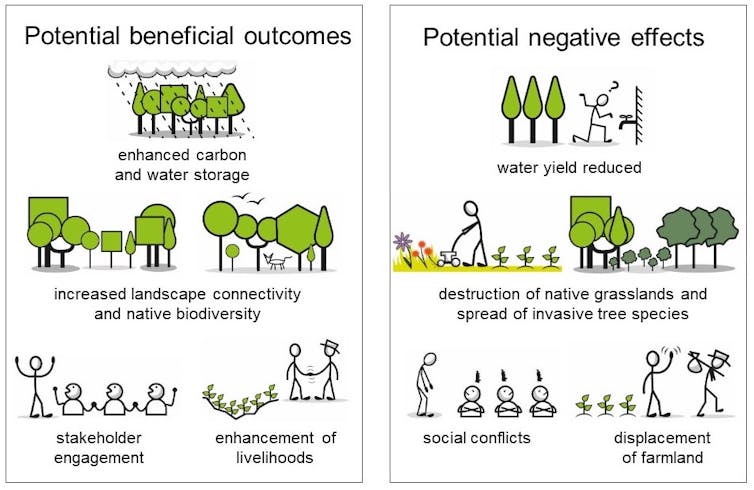
Tree-Planting Is Not A Panacea
It is impossible for humanity to plant its way out of climate change, as some advocates have suggested, although trees are one part of the solution. Scientific assessments show that avoiding the worst consequences of climate change will require governments, businesses and individuals around the globe to make rapid and drastic efforts to reduce greenhouse gas emissions.
Moreover, planting trees in the wrong place can have unintended consequences. For example, planting trees into native grasslands, such as North American prairies or African savannas, can damage these valuable ecosystems.
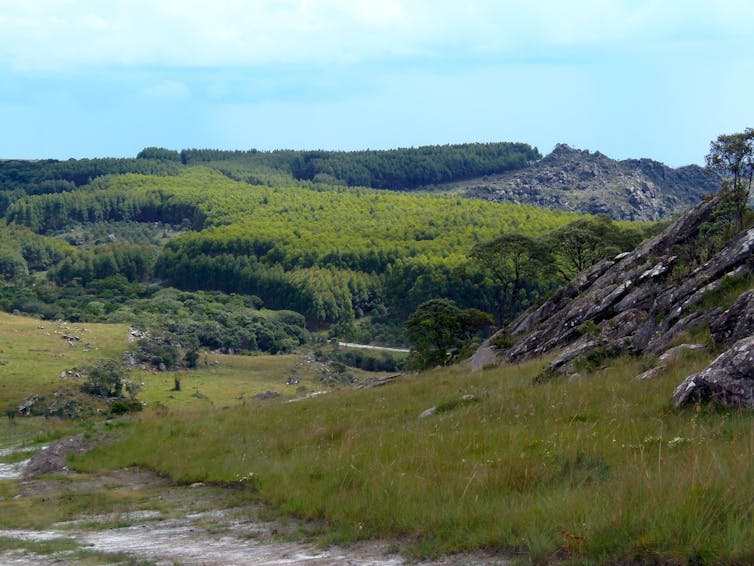
Planting fast-growing, nonnative trees in arid areas may also reduce water supplies. And some top-down tree-planting programs implemented by international organizations or national governments displace farmers and lead them to clear forests elsewhere.
Large-scale tree-planting initiatives have failed in locations from Sri Lanka to Turkey to Canada. In some places, the tree species were not well suited to local soil and climate conditions. Elsewhere, the trees were not watered or fertilized. In some cases local people removed trees that were planted on their land without permission. And when trees die or are cut down, any carbon they have taken up returns to the atmosphere, negating benefits from planting them.
Focus On Growing Trees
We think it’s time to change the narrative from tree-planting to tree-growing. Most tree-planting efforts focus on digging a hole and putting a seedling in the ground, but the work doesn’t stop there. And tree-planting diverts attention from promoting natural forest regrowth.
To achieve benefits from tree-planting, the trees need to grow for a decade or more. Unfortunately, evidence suggests that reforested areas are often recleared within a decade or two. We recommend that tree-growing efforts set targets for the area of forest restored after 10, 20 or 50 years, rather than focusing on numbers of seedlings planted.
And it may not even be necessary to actively plant trees. For example, much of the eastern U.S. was logged in the 18th and 19th centuries. But for the past century, where nature has been left to take its course, large areas of forests have regrown without people’s planting trees.
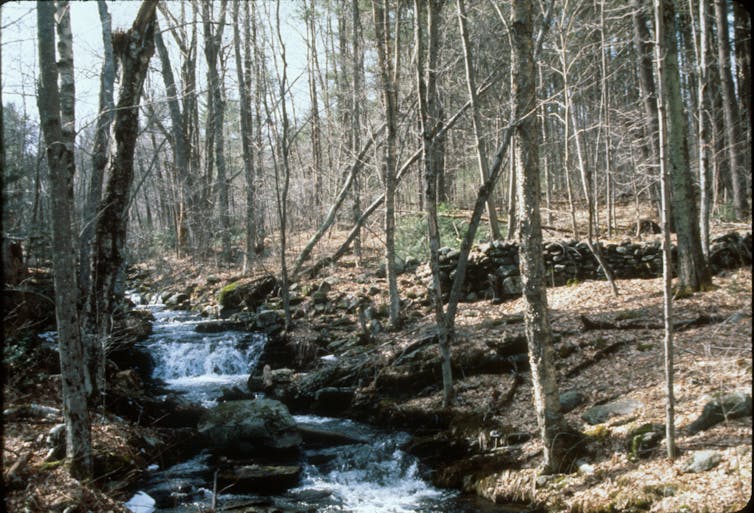
Helping Tree-Growing Campaigns Succeed
Tree-growing is expected to receive unprecedented financial, political and societal support in the coming years as part of the U.N. Decade on Ecosystem Restoration and ambitious initiatives such as the Bonn Challenge and World Economic Forum 1t.org campaign to conserve, restore and grow 1 trillion trees. It would be an enormous waste to squander this unique opportunity.
Here are key guidelines that we and others have proposed to improve the outcomes of tree-planting campaigns.
Keep existing forests standing. Global Forest Watch, an online platform that monitors forests around the world, estimates that the Earth lost an area of rainforest the size of New Mexico in 2020. It is much more effective to prevent clearing of existing forests than to try to put them back together again. And existing forests provide benefits now, rather than decades into the future after trees mature.
Protecting existing forests often requires providing alternative income for people who maintain trees on their land rather than logging them or growing crops. It also is important to strengthen enforcement of protected areas, and to promote supply chains for timber and agricultural products that do not involve forest-clearing.
Include nearby communities in tree-growing projects. International organizations and national governments fund many tree-growing projects, but their goals may be quite different from those of local residents who are actually growing the trees on their land. Study after study has shown that involving local farmers and communities in the process, from planning through monitoring, is key to tree-growing success.
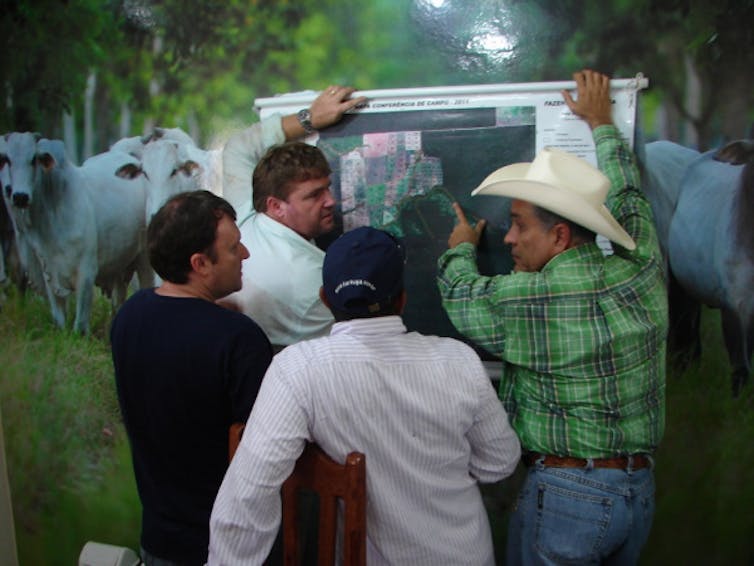
Start with careful planning. Which species are most likely to grow well given local site conditions? Which species will best achieve the project’s goals? And who will take care of the trees after they are planted?
It is important to plant in areas where trees have grown historically, and to consider whether future climatic conditions are likely to support trees. Planting in areas that are less productive for agriculture reduces the risk that the land will be recleared or existing forests will be cut down to compensate for lost productive areas.
Plan for the long term. Most tree seedlings need care to survive and grow. This may include multiyear commitments to water, fertilize, weed and protect them from grazing or fire and monitor whether the venture achieves its goals.
We recently published a list of questions that all tree-growing organizations should answer and that funders should ask before pulling out their wallets. They include questions about whether the initial drivers of deforestation have been addressed, how the project will be maintained and monitored over time, and how local stakeholders will be involved and benefit from the project. It’s also important to look at the outcomes of prior tree-growing projects overseen by the organization.
Organizations that follow best practices are much more likely to grow trees successfully over the long term. Planting seedlings is just the first step.
This is an update of an article originally published on April 27, 2021.![]()
Karen D. Holl, Professor of Restoration Ecology, University of California, Santa Cruz and Pedro Brancalion, Professor of Forest Restoration, Universidade de São Paulo
This article is republished from The Conversation under a Creative Commons license. Read the original article.
In protecting land for wildlife, size matters – here’s what it takes to conserve very large areas
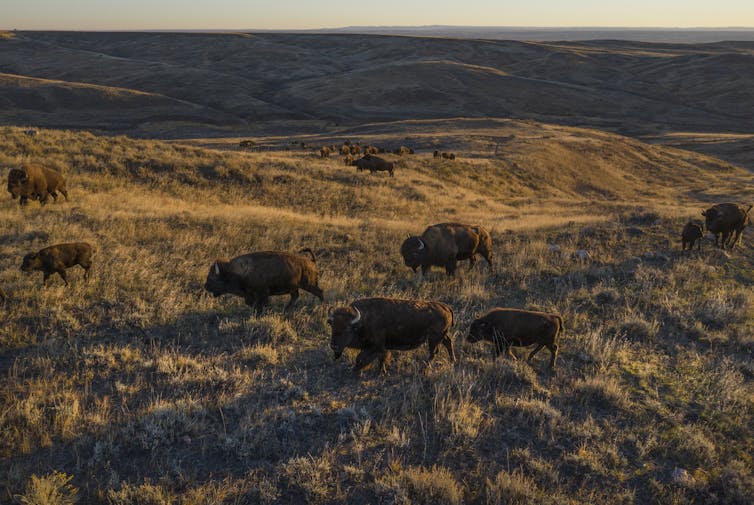
Driving north on state Highway 66 through the Fort Belknap Indian Reservation in central Montana, it’s easy to miss a small herd of bison lounging just off the road behind an 8-foot fence. Each winter, heavy snows drive bison out of Wyoming’s Yellowstone National Park – the only place in the U.S. where they have lived continuously since prehistoric times – and into Montana, where they are either killed or shipped off to tribal lands to avoid conflict with cattle ranchers.
In the winter of 2022-2023 alone, over 1,500 bison have been “removed,” about 25% of Yellowstone’s entire population. The bison at Fort Belknap are refugees that have been trucked 300 miles to the reservation from past Yellowstone winter culls.
Although bison are the U.S. national mammal, they exist in small and fragmented populations across the West. The federal government is working to restore healthy wild bison populations, relying heavily on sovereign tribal lands to house them.
Indeed, tribal lands are the great wildlife refuges of the prairie. Fort Belknap is the only place in Montana where bison, critically endangered black-footed ferrets and swift foxes, which occupy about 40% of their historic range, all have been restored.

But Indigenous communities can’t and shouldn’t be solely responsible for restoring wildlife. As an ecologist who studies prairie ecosystems, I believe that conserving grassland wildlife in the U.S. Great Plains and elsewhere will require public and private organizations to work together to create new, larger protected areas where these species can roam.
Rethinking How Protected Areas Are Made
At a global scale, conservationists have done a remarkable job of conserving land, creating over 6,000 terrestrial protected areas per year over the past decade. But small has become the norm. The average size of newly created protected areas over that time frame is 23 square miles (60 square kilometers), down from 119 square miles (308 square kilometers) during the 1970s.
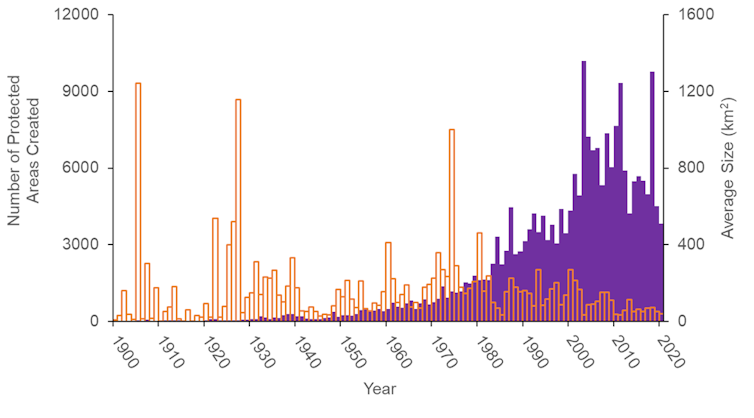
Creating large new protected areas is hard. As the human population grows, fewer and fewer places are available to be set aside for conservation. But conserving large areas is important because it makes it possible to restore critical ecological processes like migration and to sustain populations of endangered wildlife like bison that need room to roam.
Creating an extensive protected area in the Great Plains is particularly difficult because this area was largely passed over when the U.S. national park system was created. But it’s becoming clear that it is possible to create large protected areas through nontraditional methods.
Consider American Prairie, a nonprofit that is working to stitch together public and tribal lands to create a Connecticut-sized protected area for grassland wildlife in Montana. Since 2004, American Prairie has made 37 land purchases and amassed a habitat base of 460,000 acres (about 720 square miles, or 1,865 square kilometers).
Similarly, in Australia, nonprofits are making staggering progress in conserving land while government agencies struggle with funding cuts and bureaucratic hurdles. Today, Australia is second only to the U.S. in its amount of land managed privately for conservation.
Big Ideas Make Room For Smaller Actions
Having worked to conserve wildlife in this region for over 20 years, I have seen firsthand that by setting a sweeping goal of connecting 3.2 million acres (5,000 square miles, or 13,000 square kilometers), American Prairie has reframed the scale at which conservation success is measured in the Great Plains. By raising the bar for land protection, they have made other conservation organizations seem more moderate and created new opportunities for those groups.
One leading beneficiary is The Nature Conservancy, which owns the 60,000-acre Matador Ranch within the American Prairie focal area. When the conservancy first purchased the property, local ranchers were skeptical. But that skepticism has turned to support because the conservancy isn’t trying to create a protected area.
Instead, it uses the ranch as a grassbank – a place where ranchers can graze cattle at a low cost, and in return, pledge to follow wildlife-friendly practices on their own land, such as altering fences to allow migratory pronghorn to slip underneath. Via the grassbank, ranchers are now using these wildlife conservation techniques on an additional 240,000 acres of private property.
Other moderate conservation organizations are also working with ranchers. For example, this year the Bezos Earth Fund has contributed heavily to the National Fish and Wildlife Foundation’s annual grants program, helping to make a record $US16 million available to reward ranchers for taking wildlife-friendly actions.
A collective model for achieving a large-scale protected area in the region has taken shape. American Prairie provides the vision and acts to link large tracts of protected land for restoring wildlife. Other organizations work with surrounding landowners to increase tolerance toward wildlife so those animals can move about more freely.
Instead of aiming to create a single polygon of protected land on a map, this new approach seeks to assemble a large protected area with diverse owners who all benefit from participating. Rather than excluding people, it integrates local communities to achieve large-scale conservation.
A Global Pathway To 30x30
This Montana example is not unique. In a recent study, colleagues and I found that when conservationists propose creating very large protected areas, they transform conservation discussions and draw in other organizations that together can achieve big results.
Many recent successes started with a single actor leading the charge. Perhaps the most notable example is the recently created Cook Islands Marine Park, also known as Marae Moana, which covers 735,000 square miles (1.9 million square kilometers) in the South Pacific. The reserve’s origin can be traced back to Kevin Iro, an outspoken former professional rugby player and member of the islands’ tourism board.
While some individual conservation organizations have found that this strategy works, global, national and local policymakers are not setting comparable large-scale targets as they discuss how to meet an ambitious worldwide goal of protecting 30% of the planet for wildlife by 2030. The 30x30 target was adopted by 190 countries at an international conference in 2022 on saving biodiversity.
Critics argue that large protected areas are too complicated to create and too expensive to maintain, or that they exclude local communities. However, new models show that there is a sustainable and inclusive way to move forward.
In my view, 30x30 policymakers should act boldly and include large protected area targets in current policies. Past experience shows that failing to do so will mean that future protected areas become smaller and smaller and ultimately fail to address Earth’s biodiversity crisis.![]()
David Jachowski, Associate Professor of Wildlife Ecology, Clemson University
This article is republished from The Conversation under a Creative Commons license. Read the original article.
Pittwater Reserves: Histories + Notes + Pictorial Walks
A History Of The Campaign For Preservation Of The Warriewood Escarpment by David Palmer OAM and Angus Gordon OAM
A Stroll Through Warriewood Wetlands by Joe Mills February 2023
A Walk Around The Cromer Side Of Narrabeen Lake by Joe Mills
America Bay Track Walk - photos by Joe Mills
An Aquatic June: North Narrabeen - Turimetta - Collaroy photos by Joe Mills
Angophora Reserve Angophora Reserve Flowers Grand Old Tree Of Angophora Reserve Falls Back To The Earth - History page
Annie Wyatt Reserve - A Pictorial
Avalon's Village Green: Avalon Park Becomes Dunbar Park - Some History + Toongari Reserve and Catalpa Reserve
Bairne Walking Track Ku-Ring-Gai Chase NP by Kevin Murray
Bangalley Headland Bangalley Mid Winter
Banksias of Pittwater
Barrenjoey Boathouse In Governor Phillip Park Part Of Our Community For 75 Years: Photos From The Collection Of Russell Walton, Son Of Victor Walton
Barrenjoey Headland: Spring flowers
Barrenjoey Headland after fire
Bayview Baths
Bayview Wetlands
Beeby Park
Bilgola Beach
Botham Beach by Barbara Davies
Bungan Beach Bush Care
Careel Bay Saltmarsh plants
Careel Bay Birds
Careel Bay Clean Up day
Careel Bay Playing Fields History and Current
Careel Creek
Careel Creek - If you rebuild it they will come
Centre trail in Ku-ring-gai Chase National Park
Chiltern Track- Ingleside by Marita Macrae
Clareville Beach
Clareville/Long Beach Reserve + some History
Coastal Stability Series: Cabbage Tree Bay To Barrenjoey To Observation Point by John Illingsworth, Pittwater Pathways, and Dr. Peter Mitchell OAM
Cowan Track by Kevin Murray
Curl Curl To Freshwater Walk: October 2021 by Kevin Murray and Joe Mills
Currawong and Palm Beach Views - Winter 2018
Currawong-Mackerel-The Basin A Stroll In Early November 2021 - photos by Selena Griffith
Currawong State Park Currawong Beach + Currawong Creek
Deep Creek To Warriewood Walk photos by Joe Mills
Drone Gives A New View On Coastal Stability; Bungan: Bungan Headland To Newport Beach + Bilgola: North Newport Beach To Avalon + Bangalley: Avalon Headland To Palm Beach
Duck Holes: McCarrs Creek by Joe Mills
Dunbar Park - Some History + Toongari Reserve and Catalpa Reserve
Dundundra Falls Reserve: August 2020 photos by Selena Griffith - Listed in 1935
Elsie Track, Scotland Island
Elvina Track in Late Winter 2019 by Penny Gleen
Elvina Bay Walking Track: Spring 2020 photos by Joe Mills
Elvina Bay-Lovett Bay Loop Spring 2020 by Kevin Murray and Joe Mills
Fern Creek - Ingleside Escarpment To Warriewood Walk + Some History photos by Joe Mills
Iluka Park, Woorak Park, Pittwater Park, Sand Point Reserve, Snapperman Beach Reserve - Palm Beach: Some History
Ingleside
Ingleside Wildflowers August 2013
Irrawong - Ingleside Escarpment Trail Walk Spring 2020 photos by Joe Mills
Irrawong - Mullet Creek Restoration
Katandra Bushland Sanctuary - Ingleside
Lucinda Park, Palm Beach: Some History + 2022 Pictures
McCarrs Creek
McCarr's Creek to Church Point to Bayview Waterfront Path
McKay Reserve
Mona Vale Beach - A Stroll Along, Spring 2021 by Kevin Murray
Mona Vale Headland, Basin and Beach Restoration
Mona Vale Woolworths Front Entrance Gets Garden Upgrade: A Few Notes On The Site's History
Mount Murray Anderson Walking Track by Kevin Murray and Joe Mills
Mullet Creek
Narrabeen Creek
Narrabeen Lagoon Catchment: Past Notes Present Photos by Margaret Woods
Narrabeen Lagoon State Park
Narrabeen Lagoon State Park Expansion
Narrabeen Rockshelf Aquatic Reserve
Nerang Track, Terrey Hills by Bea Pierce
Newport Bushlink - the Crown of the Hill Linked Reserves
Newport Community Garden - Woolcott Reserve
Newport to Bilgola Bushlink 'From The Crown To The Sea' Paths: Founded In 1956 - A Tip and Quarry Becomes Green Space For People and Wildlife
Pittwater Reserves: The Green Ways; Bungan Beach and Bungan Head Reserves: A Headland Garden
Pittwater Reserves, The Green Ways: Clareville Wharf and Taylor's Point Jetty
Pittwater Reserves: The Green Ways; Hordern, Wilshire Parks, McKay Reserve: From Beach to Estuary
Pittwater Reserves - The Green Ways: Mona Vale's Village Greens a Map of the Historic Crown Lands Ethos Realised in The Village, Kitchener and Beeby Parks
Pittwater Reserves: The Green Ways Bilgola Beach - The Cabbage Tree Gardens and Camping Grounds - Includes Bilgola - The Story Of A Politician, A Pilot and An Epicure by Tony Dawson and Anne Spencer
Pittwater spring: waterbirds return to Wetlands
Pittwater's Lone Rangers - 120 Years of Ku-Ring-Gai Chase and the Men of Flowers Inspired by Eccleston Du Faur
Pittwater's Parallel Estuary - The Cowan 'Creek
Resolute Track at West Head by Kevin Murray
Resolute Track Stroll by Joe Mills
Riddle Reserve, Bayview
Salvation Loop Trail, Ku-Ring-Gai Chase National Park- Spring 2020 - by Selena Griffith
Seagull Pair At Turimetta Beach: Spring Is In The Air!
Stapleton Reserve
Stapleton Park Reserve In Spring 2020: An Urban Ark Of Plants Found Nowhere Else
Stony Range Regional Botanical Garden: Some History On How A Reserve Became An Australian Plant Park
The Chiltern Track
The Resolute Beach Loop Track At West Head In Ku-Ring-Gai Chase National Park by Kevin Murray
Topham Track Ku-Ring-Gai Chase NP, August 2022 by Joe Mills and Kevin Murray
Towlers Bay Walking Track by Joe Mills
Trafalgar Square, Newport: A 'Commons' Park Dedicated By Private Landholders - The Green Heart Of This Community
Tranquil Turimetta Beach, April 2022 by Joe Mills
Turimetta Beach Reserve by Joe Mills, Bea Pierce and Lesley
Turimetta Beach Reserve: Old & New Images (by Kevin Murray) + Some History
Turimetta Headland
Warriewood Wetlands - Creeks Deteriorating: How To Report Construction Site Breaches, Weed Infestations + The Long Campaign To Save The Warriewood Wetlands & Ingleside Escarpment March 2023
Warriewood Wetlands and Irrawong Reserve
Whale Beach Ocean Reserve: 'The Strand' - Some History On Another Great Protected Pittwater Reserve
Wilshire Park Palm Beach: Some History + Photos From May 2022
Winji Jimmi - Water Maze

Pittwater's Birds
Australian Predators of the Sky by Penny Olsen - published by National Library of Australia
Australian Raven Australian Wood Duck Family at Newport
A Week In Pittwater Issue 128 A Week In Pittwater - June 2014 Issue 168
Baby Birds Spring 2015 - Rainbow Lorikeets in our Yard - for Children Baby Birds by Lynleigh Greig, Southern Cross Wildlife Care - what do if being chased by a nesting magpie or if you find a baby bird on the ground
Baby Kookaburras in our Backyard: Aussie Bird Count 2016 - October
Balloons Are The Number 1 Marine Debris Risk Of Mortality For Our Seabirds - Feb 2019 Study
Bangalley Mid-Winter Barrenjoey Birds Bird Antics This Week: December 2016
Bird of the Month February 2019 by Michael Mannington
Birdland Above the Estuary - October 2012 Birds At Our Window Birds at our Window - Winter 2014 Birdland June 2016
Birdsong Is a Lovesong at This time of The Year - Brown Falcon, Little Wattle Bird, Australian Pied cormorant, Mangrove or Striated Heron, Great Egret, Grey Butcherbird, White-faced Heron
Bird Songs – poems about our birds by youngsters from yesterdays - for children Bird Week 2015: 19-25 October
Bird Songs For Spring 2016 For Children by Joanne Seve
Birds at Careel Creek this Week - November 2017: includes Bird Count 2017 for Local Birds - BirdLife Australia by postcode
Black Cockatoo photographed in the Narrabeen Catchment Reserves this week by Margaret G Woods - July 2019
Black-Necked Stork, Mycteria Australis, Now Endangered In NSW, Once Visited Pittwater: Breeding Pair shot in 1855
Black Swans on Narrabeen Lagoon - April 2013 Black Swans Pictorial
Endangered Little Tern Fishing at Mona Vale Beach
‘Feather Map of Australia’: Citizen scientists can support the future of Australia's wetland birds: for Birdwatchers, school students and everyone who loves our estuarine and lagoon and wetland birds
Fledgling Common Koel Adopted by Red Wattlebird -Summer Bird fest 2013 Flegdlings of Summer - January 2012
Flocks of Colour by Penny Olsen - beautiful new Bird Book Celebrates the 'Land of the Parrots'
Friendly Goose at Palm Beach Wharf - Pittwater's Own Mother Goose
Front Page Issue 177 Front Page Issue 185 Front Page Issue 193 - Discarded Fishing Tackle killing shorebirds Front Page Issue 203 - Juvenile Brush Turkey Front Page Issue 208 - Lyrebird by Marita Macrae Front Page Issue 219 Superb Fairy Wren Female Front Page Issue 234: National Bird Week October 19-25 and the 2015 the Aussie Back Yard Bird Count: Australia's First Bird Counts - a 115 Year Legacy - with a small insight into our first zoos Front Page Issue 236: Bird Week 2015 Front Page Issue 244: watebirds Front Page Issue 260: White-face Heron at Careel Creek Front Page Issue 283: Pittwater + more birds for Bird Week/Aussie Bird Count Front Page Issue 284: Pittwater + more birds for Bird Week/Aussie Bird Count Front Page Issue 285: Bird Week 2016 Front Page Issue 331: Spring Visitor Birds Return
G . E. Archer Russell (1881-1960) and His Passion For Avifauna From Narrabeen To Newport
Glossy Black-Cockatoo Returns To Pittwater by Paul Wheeler Glossy Cockatoos - 6 spotted at Careel Bay February 2018
Grey Butcher Birds of Pittwater
INGLESIDE LAND RELEASE ON AGAIN BUT MANY CHALLENGES AHEAD by David Palmer
Issue 60 May 2012 Birdland - Smiles- Beamings -Early -Winter - Blooms
Jayden Walsh’s Northern Beaches Big Year - courtesy Pittwater Natural Heritage Association
John Gould's Extinct and Endangered Mammals of Australia by Dr. Fred Ford - Between 1850 and 1950 as many mammals disappeared from the Australian continent as had disappeared from the rest of the world between 1600 and 2000! Zoologist Fred Ford provides fascinating, and often poignant, stories of European attitudes and behaviour towards Australia's native fauna and connects these to the animal's fate today in this beautiful new book - our interview with the author
July 2012 Pittwater Environment Snippets; Birds, Sea and Flowerings
Juvenile Sea Eagle at Church Point - for children
King Parrots in Our Front Yard
Kookaburra Turf Kookaburra Fledglings Summer 2013 Kookaburra Nesting Season by Ray Chappelow Kookaburra Nest – Babies at 1.5 and 2.5 weeks old by Ray Chappelow Kookaburra Nest – Babies at 3 and 4 weeks old by Ray Chappelow Kookaburra Nest – Babies at 5 weeks old by Ray Chappelow Kookaburra and Pittwater Fledglings February 2020 to April 2020
Lion Island's Little Penguins (Fairy Penguins) Get Fireproof Homes - thanks to NSW National Parks and Wildlife Service and the Fix it Sisters Shed
Lyre Bird Sings in Local National Park - Flock of Black Cockatoos spotted - June 2019
Magpie's Melodic Melodies - For Children (includes 'The Magpie's Song' by F S Williamson)
Masked Lapwing (Plover) - Reflected
May 2012 Birdland Smiles Beamings Early Winter Blooms
Musk Lorikeets In Pittwater: Pittwater Spotted Gum Flower Feast - May 2020
Nankeen Kestrel Feasting at Newport: May 2016
National Bird Week 2014 - Get Involved in the Aussie Backyard Bird Count: National Bird Week 2014 will take place between Monday 20 October and Sunday 26 October, 2014. BirdLife Australia and the Birds in Backyards team have come together to launch this year’s national Bird Week event the Aussie Backyard Bird Count! This is one the whole family can do together and become citizen scientists...
National Bird Week October 19-25 and the 2015 the Aussie Back Yard Bird Count: Australia's First Bird Counts - a 115 Year Legacy - with a small insight into our first zoos
Nature 2015 Review Earth Air Water Stone
New Family of Barking Owls Seen in Bayview - Church Point by Pittwater Council
Noisy Visitors by Marita Macrae of PNHA
Odes to Australia's Fairy-wrens by Douglas Brooke Wheelton Sladen and Constance Le Plastrier 1884 and 1926
Oystercatcher and Dollarbird Families - Summer visitors
Painted Button-Quail Rescued By Locals - Elanora-Ingleside escarpment-Warriewood wetlands birds
Palm Beach Protection Group Launch, Supporters Invited: Saturday Feb.16th - Residents Are Saying 'NO' To Off-Leash Dogs In Station Beach Eco-System - reports over 50 dogs a day on Station Beach throughout December-January (a No Dogs Beach) small children being jumped on, Native birds chased, dog faeces being left, families with toddlers leaving beach to get away from uncontrolled dogs and 'Failure of Process' in council 'consultation' open to February 28th
Pardalote, Scrub Wren and a Thornbill of Pittwater
Pecking Order by Robyn McWilliam
Pelican Lamps at Narrabeen Pelican Dreamsong - A Legend of the Great Flood - dreamtime legend for children
Pittwater Becalmed Pittwater Birds in Careel Creek Spring 2018 Pittwater Waterbirds Spring 2011 Pittwater Waterbirds - A Celebration for World Oceans Day 2015
Pittwater's Mother Nature for Mother's Day 2019
Plastic in 99 percent of seabirds by 2050 by CSIRO
Plover Appreciation Day September 16th 2015
Powerful and Precious by Lynleigh Grieg
Red Wattlebird Song - November 2012
Restoring The Diamond: every single drop. A Reason to Keep Dogs and Cats in at Night.
Sea Birds off the Pittwater Coast: Albatross, Gannet, Skau + Australian Poets 1849, 1898 and 1930, 1932
Sea Eagle Juvenile at Church Point
Seen but Not Heard: Lilian Medland's Birds - Christobel Mattingley - one of Australia's premier Ornithological illustrators was a Queenscliff lady - 53 of her previously unpublished works have now been made available through the auspices of the National Library of Australia in a beautiful new book
7 Little Ducklings: Just Keep Paddling - Australian Wood Duck family take over local pool by Peta Wise
Shag on a North Avalon Rock - Seabirds for World Oceans Day 2012
Short-tailed Shearwaters Spring Migration 2013
South-West North-East Issue 176 Pictorial
Spring 2012 - Birds are Splashing - Bees are Buzzing
Spring Becomes Summer 2014- Royal Spoonbill Pair at Careel Creek
Spring Notes 2018 - Royal Spoonbill in Careel Creek
Station Beach Off Leash Dog Area Proposal Ignores Current Uses Of Area, Environment, Long-Term Fauna Residents, Lack Of Safe Parking and Clearly Stated Intentions Of Proponents have your say until February 28, 2019
Summer 2013 BirdFest - Brown Thornbill Summer 2013 BirdFest- Canoodlers and getting Wet to Cool off Summer 2013 Bird Fest - Little Black Cormorant Summer 2013 BirdFest - Magpie Lark
New Shorebirds WingThing For Youngsters Available To Download
A Shorebirds WingThing educational brochure for kids (A5) helps children learn about shorebirds, their life and journey. The 2021 revised brochure version was published in February 2021 and is available now. You can download a file copy here.
If you would like a free print copy of this brochure, please send a self-addressed envelope with A$1.10 postage (or larger if you would like it unfolded) affixed to: BirdLife Australia, Shorebird WingThing Request, 2-05Shorebird WingThing/60 Leicester St, Carlton VIC 3053.

 Shorebird Identification Booklet
Shorebird Identification Booklet
The Migratory Shorebird Program has just released the third edition of its hugely popular Shorebird Identification Booklet. The team has thoroughly revised and updated this pocket-sized companion for all shorebird counters and interested birders, with lots of useful information on our most common shorebirds, key identification features, sighting distribution maps and short articles on some of BirdLife’s shorebird activities.
The booklet can be downloaded here in PDF file format: http://www.birdlife.org.au/documents/Shorebird_ID_Booklet_V3.pdf
Paper copies can be ordered as well, see http://www.birdlife.org.au/projects/shorebirds-2020/counter-resources for details.
Download BirdLife Australia's children’s education kit to help them learn more about our wading birdlife
Shorebirds are a group of wading birds that can be found feeding on swamps, tidal mudflats, estuaries, beaches and open country. For many people, shorebirds are just those brown birds feeding a long way out on the mud but they are actually a remarkably diverse collection of birds including stilts, sandpipers, snipe, curlews, godwits, plovers and oystercatchers. Each species is superbly adapted to suit its preferred habitat. The Red-necked Stint is as small as a sparrow, with relatively short legs and bill that it pecks food from the surface of the mud with, whereas the Eastern Curlew is over two feet long with a exceptionally long legs and a massively curved beak that it thrusts deep down into the mud to pull out crabs, worms and other creatures hidden below the surface.
Some shorebirds are fairly drab in plumage, especially when they are visiting Australia in their non-breeding season, but when they migrate to their Arctic nesting grounds, they develop a vibrant flush of bright colours to attract a mate. We have 37 types of shorebirds that annually migrate to Australia on some of the most lengthy and arduous journeys in the animal kingdom, but there are also 18 shorebirds that call Australia home all year round.
What all our shorebirds have in common—be they large or small, seasoned traveller or homebody, brightly coloured or in muted tones—is that each species needs adequate safe areas where they can successfully feed and breed.
The National Shorebird Monitoring Program is managed and supported by BirdLife Australia.
This project is supported by Glenelg Hopkins Catchment Management Authority and Hunter Local Land Services through funding from the Australian Government’s National Landcare Program. Funding from Helen Macpherson Smith Trust and Port Phillip Bay Fund is acknowledged.
The National Shorebird Monitoring Program is made possible with the help of over 1,600 volunteers working in coastal and inland habitats all over Australia.
The National Shorebird Monitoring program (started as the Shorebirds 2020 project initiated to re-invigorate monitoring around Australia) is raising awareness of how incredible shorebirds are, and actively engaging the community to participate in gathering information needed to conserve shorebirds.
In the short term, the destruction of tidal ecosystems will need to be stopped, and our program is designed to strengthen the case for protecting these important habitats.
In the long term, there will be a need to mitigate against the likely effects of climate change on a species that travels across the entire range of latitudes where impacts are likely.
The identification and protection of critical areas for shorebirds will need to continue in order to guard against the potential threats associated with habitats in close proximity to nearly half the human population.
Here in Australia, the place where these birds grow up and spend most of their lives, continued monitoring is necessary to inform the best management practice to maintain shorebird populations.
BirdLife Australia believe that we can help secure a brighter future for these remarkable birds by educating stakeholders, gathering information on how and why shorebird populations are changing, and working to grow the community of people who care about shorebirds.
To find out more visit: http://www.birdlife.org.au/projects/shorebirds-2020/shorebirds-2020-program
Aussie Bread Tags Collection Points

Nice Little Wave
Last Volunteer Patrol Day For 2022-2023 Season; Thank You For Your Service
2023 HSC Timetable Released
In Youth Week Young People Remain Optimistic About Life, Despite Ongoing Challenges
School Leavers Support
- Download or explore the SLIK here to help guide Your Career.
- School Leavers Information Kit (PDF 5.2MB).
- School Leavers Information Kit (DOCX 0.9MB).
- The SLIK has also been translated into additional languages.
- Download our information booklets if you are rural, regional and remote, Aboriginal or Torres Strait Islander, or living with disability.
- Support for Regional, Rural and Remote School Leavers (PDF 2MB).
- Support for Regional, Rural and Remote School Leavers (DOCX 0.9MB).
- Support for Aboriginal and/or Torres Strait Islander School Leavers (PDF 2MB).
- Support for Aboriginal and/or Torres Strait Islander School Leavers (DOCX 1.1MB).
- Support for School Leavers with Disability (PDF 2MB).
- Support for School Leavers with Disability (DOCX 0.9MB).
- Download the Parents and Guardian’s Guide for School Leavers, which summarises the resources and information available to help you explore all the education, training, and work options available to your young person.
School Leavers Information Service
- navigate the School Leavers Information Kit (SLIK),
- access and use the Your Career website and tools; and
- find relevant support services if needed.
History Of The Rockdale To Brighton-Le-Sands Tramline Of The Sydney Tram System
Word Of The Week: Surf
noun
1. the mass or line of foam formed by waves breaking on a seashore or reef. 2. a spell of surfing.
verb
1. stand or lie on a surfboard and ride on a wave towards the shore. 2. catch a wave by swimming and move towards the shore. 3. move from page to page or site to site on (the World Wide Web). 4. to move quickly from one place to another within a system to learn what each place is offering
From - probably from earlier suffe (1590s), of uncertain origin. Originally used in reference to the coast of India, hence perhaps of Indic origin. Or perhaps a phonological respelling of sough, which meant "a rushing sound." The verb dates from 1917 - or even earlier here. Visit: Early Pittwater Surfers: Alrema Becke Queen of Palm Beach -
sough (v.)
"to make a moaning or murmuring sound," Middle English swouen, from Old English swogan "to sound, roar, howl, rustle, whistle," from Proto-Germanic *swoganan (source also of Old Saxon swogan "to rustle," Gothic gaswogjan "to sigh"), from PIE imitative root *(s)wagh- (compare Greek ēkhō, Latin vagire "to cry, roar, sound"). "From the 16th cent. almost exclusively Sc. & north. dial. until adopted in general literary use in the 19th" [OED]. Related: Soughed; soughing. The noun is late 14c., swough, "a rushing, whispering sound, a murmuring roar," from the verb.
No, vapes aren’t 95% less harmful than cigarettes. Here’s how this decade-old myth took off

It’s 2013. The Harlem Shake is on the radio and e-cigarettes are becoming a thing. A group of researchers convene to discuss these and other products containing nicotine.
In a 2014 paper detailing the outcomes of that meeting, the authors rated “electronic nicotine delivery systems” (e-cigarettes) as having “only 4%” of the maximum relative harm of cigarettes.
Critically, the authors stated their “understanding of the potential hazards” of e-cigarettes was “at a very early stage” because they lacked “hard evidence for the harms of most products on most of the criteria” they examined.
In other words, they noted their work was methodologically weak and their estimates were just that – guesses based on their opinions rather than scientific evidence.
But one of those “guesstimates” has gone on to become the most cited piece of vaping misinformation globally: e-cigarettes are 95% less harmful than tobacco cigarettes.
The problem is, it’s wrong.
How The Guesstimate Took Off
Public Health England used the 95% figure in its 2015 review of e-cigarettes, but failed to mention the caveats of the guesstimate.
This prompted widespread criticism from experts. An editorial in The Lancet medical journal labelled the 2014 paper “an extraordinarily flimsy foundation” on which to base the major conclusion of Public Health England’s review.
The Lancet editorial notes Public Health England used the guesstimate despite it being based on “the opinions of a small group of individuals with no prespecified expertise in tobacco control” and “an almost total absence of evidence”.
The 2015 editorial also raised concerns about conflicts of interest, noting that some researchers involved in developing the guesstimate had connections to Big Tobacco. These conflicts were described further in the British Medical Journal in September and November.
Despite this, the 95% figure remained in Public Health England’s communications. It had also spread to e-cigarette advertising.
By 2020, the guesstimate had become a “factoid”: unreliable information repeated so often it becomes accepted as fact. Yet given the growing evidence of harms associated with e-cigarette use, the factoid was even less valid seven years later.
How It Has Been Used In Australia
The industry and its allies have been so effective at publicising this unscientific guesstimate, it continues to be used to undermine Australia’s public health policy.
In submissions made to Australia’s 2020 Senate Inquiry into Tobacco Harm Reduction, industry bodies and allies leaned heavily on the factoid in their arguments for legalising e-cigarettes.
They continued to do so in the 2020 Therapeutic Goods Administration’s consultation on the rescheduling of nicotine as prescription only and most recently in the 2022 consultation on proposed reforms to the regulation of vaping products to limit importation and improve product standards.
Why Does It Matter?
Although this factoid has been debunked, it continues to influence people’s thinking. Misinformation researchers refer to this as the continued influence effect: once it takes hold, it’s notoriously difficult to dislodge.
As a digestible, attention-grabbing stat, it circulates in the media, and is repeated again and again. And because we are more likely to believe false information when it has been repeated many times (the illusory truth effect), the misinformation becomes “truth”, even after we have been told it’s false.
Even this year, harm-reduction experts have used the factoid to argue vaping is less harmful than smoking and that Australia could look to other countries that legally sell vapes to adults without prescription.
What’s The Solution?
We must debunk the myth that e-cigarettes are 95% less harmful than tobacco cigarettes often and with factual evidence.
Here is that evidence:
e-cigarette use involves the inhalation of toxic substances and is associated with poisoning, lung injury and burns
nicotine e-cigarettes can cause dependence or addiction in non-smokers
young non-smokers who use e-cigarettes are more likely than non-users to initiate smoking and become regular smokers
e-cigarettes do not result in reduced harm if users continue to smoke (which most do). This study found no difference between e-cigarette users’ and smokers’ rates of smoking-related disease and self-reported health six years later.
Public health policies should be informed by impartial evidence, not industry-backed guesses. It’s time to leave the factoid back in 2013 with The Harlem Shake.![]()
Michelle Jongenelis, Associate Professor, Melbourne Centre for Behaviour Change, The University of Melbourne
This article is republished from The Conversation under a Creative Commons license. Read the original article.
The dirty truth about your phone – and why you need to stop scrolling in the bathroom

We carry them everywhere, take them to bed, to the bathroom and for many people they’re the first thing they see in the morning – more than 90% of the world owns or uses a mobile phone and many of us couldn’t manage without one.
But while health concerns about phones use usually focus on the distraction they can cause while driving, the possible effects of radiofrequency exposure, or just how addictive they can be. The microbial infection risk of your phone is much less appreciated – but it’s very real.
A 2019 survey found that most people in the UK use their phones on the toilet. So it’s not surprising to discover studies have found our mobile phones to be dirtier that toilet seats.
We give our phones to children to play with (who aren’t exactly well known for their hygiene). We also eat while using our phones and put them down on all sorts of (dirty) surfaces. All of which can transfer microbes onto your phone along with food deposits for those microbes to eat.
It’s been estimated that people touch their phone hundreds if not thousands of times a day. And while many of us wash our hands regularly after say, going to the bathroom, cooking, cleaning, or gardening, we are much less likely to consider washing our hands after touching our phones. But given how disgusting and germ-infested phones can be, maybe it’s time to think more about mobile phone hygiene.
Germs, Bacteria, Viruses
Hands pick up bacteria and viruses all the time and are recognised as a route for acquiring infection. So too are the phones we touch. A number of studies conducted on the microbiological colonisation of mobile phones show that they can be contaminated with many different kinds of potentially pathogenic bacteria.
These include the diarrhoea-inducing E. coli (which, by the way, comes from human poo) and the skin-infecting Staphylococcus, as well as Actinobacteria, which can cause tuberculosis and diphtheria, Citrobacter, which can lead to painful urinary tract infections, and Enterococcus, which is known to cause meningitis. Klebsiella, Micrococcus, Proteus, Pseudomonas and Streptococcus have also been found on phones and all can have equally nasty effects on humans.
Research has found that many pathogens on phones are often antibiotic resistant, meaning they can’t be treated with conventional drugs. This is worrying as these bacteria can cause skin, gut and respiratory infections that can be life-threatening.
Research has also found that even if you clean your phone with antibacterial wipes or alcohol it can still be recolonised by microorganisms, indicating that sanitisation must be a regular process.

Phones contain plastic which can harbour and transmit viruses some of which (the common cold virus) can live on hard plastic surfaces for up to a week. Other viruses such as COVID-19, rotavirus (a highly infectious stomach bug that typically affects babies and young children), influenza and norovirus – which can cause serious respiratory and gut infections – can persist in an infectable form for several days.
Indeed, since the beginning of the COVID pandemic, the US Centers for Disease Control and Prevention has introduced guidelines for cleaning and disinfecting mobile phones – which, along with door handles, cash machines and lift buttons, are considered reservoirs of infection.
In particular, concern has been raised about the role mobile phones can play in the spread of infectious microbes in hospital and healthcare settings, as well as in schools.
Clean Your Phone
So it’s clear that you need to start cleaning your phone regularly. The US Federal Communications Commission actually recommends daily sanitation of your phone and other devices – not least because we are still within an active COVID-19 pandemic and the virus can survive for several days on hard plastic surfaces.
Use alcohol-based wipes or sprays. They need to contain at least 70% alcohol to disinfect phone casings and touch screens, and it needs to be done every day if possible.
Do not spray sanitisers directly onto the phone and keep liquids away from connection points or other phone openings. Absolutely avoid using bleach or abrasive cleaners. And wash your hands thoroughly after you’ve finished cleaning.
Thinking about how you handle your phone will also help to avoid it becoming colonised with germs. When not at home, keep your phone in your pocket, or bag and use a disposable paper list of to-do items, rather than constantly consulting your phone. Touch your phone with clean hands – washed with soap and water or disinfected with alcohol-based hand sanitiser.
There are other things you can do to avoid your phone becoming a source of viruses. Do not share your phone with others if you have any infection, or have not first sanitised it. If children are allowed to play with your phone, sanitise it as soon as possible afterwards.
And get in the habit of putting your phone away when not in use, then sanitising or washing your hands. You might also want to occasionally sanitise your phone charger when you are cleaning your phone.![]()
Primrose Freestone, Senior Lecturer in Clinical Microbiology, University of Leicester
This article is republished from The Conversation under a Creative Commons license. Read the original article.
What to eat when you have COVID – and why reaching for the chicken soup is not a bad idea

Got COVID? Again?
Deciding what to eat can be mentally taxing, especially when you are not feeling well. However, our diet plays a role in preventing and managing poor health, including COVID.
Having a healthy diet is associated with a reduced risk of COVID. And, if you do have COVID, a healthy diet is associated with milder symptoms.

What Should I Eat During COVID Infection?
When we are sick it can be challenging to even think about food. However, the best way to fight the infection is by providing your body with foods that best support you to heal.
Fresh fruit, vegetables, whole grains and various forms of protein are broken down into substances by the body to support your immune system.
The Australian Guide to Healthy Eating suggests we eat a variety of fresh foods every day including:
two serves of fruit and five serves of vegetables
whole grains, such as wholemeal pasta, brown rice or wholemeal bread
healthy fats, such as avocado or olive oil
meat and meat alternatives (such as lean beef, chicken, tofu or legumes) and dairy (such as cheese or milk).
Eating these kinds of foods every day helps provide our body with the nutrients required to fight infections and remain healthy.
Avoiding processed and ultra processed foods is also encouraged due to the high levels of salt and sugar and lack of nutrition found in these types of foods.

What About Chicken Soup Or Similar?
A great way to get all the nutrition your body requires when sick with COVID is through homemade chicken soup, chicken avgolemono, chicken congee or other similar dishes.
Why? Here are four good reasons:
1. It’s easy and cheap to make
The great thing about chicken soup is you can pop it in one pan (or into a slow cooker), throw all the ingredients in together and let it simmer away.
While the ingredients in chicken soup pack a powerful nutritional punch, they don’t cost the Earth.
2. It’s easy to absorb
The boiling process releases the nutritional elements found in the ingredients and aids in digestion and absorption of these vital nutrients.
3. It’s full of vitamins and minerals
Essential vitamins and minerals found in chicken soup include: iron, magnesium, sodium, potassium, calcium, chromium, copper, zinc, vitamin A, vitamin C, vitamin B6 and vitamin B12.
4. It’s flavoursome and powerful
The tasty flavour of chicken soup is enhanced by the seventeen different amino acids found in chicken soup. These amino acids also provide strength for your immune system

Nutrition Can Support Immune Health But It’s Not The Only Answer
The best way to treat and manage a COVID infection is to avoid it in the first place. So remember to practise good hygiene, like washing your hands regularly, and maintain your recommended vaccine schedule.
Practising a healthy lifestyle will also reduce your risks of not only contracting COVID, but also developing chronic disease. This includes not smoking or vaping, maintaining healthy physical activity habits, getting enough sleep and reducing alcohol consumption.
The current recommendation for maximum alcohol intake is ten standard drinks in one week, and no more than four standard drinks in one day.
Don’t Forget To Drink Plenty Of Water
Water is crucial when you’re sick.
Being dehydrated can enhance symptoms of colds and infections, including COVID. It is also associated with a higher risk of developing long COVID.
Aim to drink at least two litres of water per day, even more if you have a high body weight or have been losing fluids through vomiting or sneezing/runny nose.
If you don’t feel like having plain water, there are many healthy alternatives such as tea, broth or soup.
Let’s Remember To Eat Healthy Anyway
Eating a healthy and balanced diet is an important part of maintain good health and vitality.
Getting caught up in fads or buying supplements can be expensive and there is controversy around their effectiveness.
In the long run, eating healthy will make you feel better and save you money.![]()
Lauren Ball, Professor of Community Health and Wellbeing, The University of Queensland and Julie Marsh, PhD Candidate, Accredited Practising Dietitian, BNutrDiet (Hons), The University of Queensland
This article is republished from The Conversation under a Creative Commons license. Read the original article.
Shakespeare’s environmentalism: how his plays explore the same ecological issues we face today
Todd Andrew Borlik, University of HuddersfieldClimate change, urban sprawl, air pollution, deforestation, depleted fish stocks, biodiversity and species loss: these are not exclusively modern problems that only sprang up in the last few hundred years. In fact, the common but misleading phrase “industrial revolution” masks the long history of resource extraction and ecological degradation in the British Isles stretching back at least to the arrival of the tin-hungry Romans.
Renaissance England was reeling from the effects of all these problems. Often hailed as the golden age of English literature, the Renaissance was also the apex of the “little ice age”, in which a cooler climate produced poorer harvests.
These food shortages were especially difficult because England’s human population surged fourfold in the 16th century, while the enclosure of common lands forced more country-dwellers to flock to London. Given how heavily these environmental concerns weighed on a society coping with chronic scarcity, it should come as no surprise that we can find traces of them in the works of England’s greatest playwright.
King And Countryside
When King James became his patron in 1603, Shakespeare was tasked with writing plays to entertain a keen outdoorsman and hunter who was as much preoccupied with the material state of the British countryside as with matters of state. No wonder, then, the Shakespearean stage encompasses a remarkable variety of landscapes and features an abundance of animal imagery to rival the royal menagerie – basically King James’s private zoo – and compensate for England’s dwindling numbers of wild game.

This article is part of our First Folio 400 series. These articles mark the 400th anniversary of the publication of the First Folio, the first collected edition of William Shakespeare’s plays.
It would, of course, be an anachronism to dub Shakespeare an environmentalist. But he was acutely aware of what we would term the environmental issues of his era. In particular, the plays Shakespeare composed during the reign of James frequently intervene in environmental policy disputes at the Stuart court about how best to carve up the natural riches of the realm.
Macbeth’s famous depiction of the “blasted heath” reflects the increasingly negative views of this terrain as a sterile abode of witches and Romani people that should be transformed into private farmland.
Although James dreaded witches, he and parliament sought to protect heathland as a habitat for game animals and birds. He would have relished Shakespeare’s comparing Macbeth to a poacher and a kite, a species then classified as vermin. Macbeth’s killing of Duncan and Macduff’s (pronounced Macdove) family simulates illegal net-hunting, nest-robbing, and the raiding of estate buildings known as dovecotes, which housed pigeons and doves for food and feathers.
Enduring Environmental Issues
In Pericles, Shakespeare wades into pan-European squabbles about fishing rights amid a crash in North Sea fishing stocks. Its conclusion mirrors James’ plan to end the herring wars (the ongoing feud between England and its coastal neighbours over territorial control of fishing areas) by forging dynastic alliances through the marriage of his heirs.
Interestingly, Pericles also plays on fears of coastal erosion. Shakespeare adapted the story from a writer whose father had proposed the existence of a flooded land-bridge linking Britain to the continent (now known as Doggerland.
While the shipwrecked king refutes claims to rule the unruly seas, the costumes donned by Shakespeare’s actors would have told a different story. Pericles and his family almost certainly appeared in robes of Tyrian purple. This dye, made in Pericles’ home town from crushed sea snails, could only be worn by royalty and would thus have been a striking visual symbol of royal dominion over the ocean.
The Winter’s Tale comments on the inhumanity of the fur trade. The famous bear that pursues Antigonus off stage may have been played by an actor in a polar bear’s pelt captured by fur traders, while Queen Hermione is a personification of an ermine.
Spelled “ermion” in Shakespeare’s day, an ermine is a stoat in its white winter coat. Ermines were symbols of chastity since it was believed they would rather die than befoul their white fur.
Hermione acts like her namesake when she exclaims she too would rather die than stain her name as an adulteress. The trial scene in which she would be stripped of her white fur re-enacts the flaying of an animal, while the scene in which her statue is reanimated captures a fascination with the new, death-defying art of taxidermy.
King Lear proclaims humans no better than beasts and is a tour de force demonstration of our vulnerability to both extreme weather and darkness. In Cymbeline, Shakespeare expresses a newfound appreciation for mountain wilderness as a preserve not only of game animals but also of Britishness and masculinity.
Few people realise The Tempest is based on legends of a demon-battling hermit from the English fens. Its notorious monster Caliban voices the outrage of fenland communities dispossessed by schemes to drain and enclose their wetlands.
Measure For Measure reveals how the plague stoked fears of urban overpopulation, while Timon of Athens offer’s a scathing satire on the mining lobby and its cornucopian economics: the notion that the earth’s wealth is inexhaustible.
In inserting these environmental issues into his plays, Shakespeare forced his audience to reflect on the political, moral, and spiritual implications of early modern England’s growing power to transform the natural world. His fascination with kings might seem old-fashioned, but in our brave new era of the Anthropocene, in which our species has become the dominant geological force, we can better appreciate how he often uses kingship as a metaphor for human tyranny over nature.
Shakespeare’s profound sympathies for the disempowered outsider also extend to non-human creatures. When his high and mighty despots have their comeuppance out in the wilds, learning that the earth doesn’t exist to bend to them, Shakespeare’s plays are teaching us all to relinquish the delusion that we are entitled to dominate the planet.![]()
Todd Andrew Borlik, Reader in Renaissance Drama, University of Huddersfield
This article is republished from The Conversation under a Creative Commons license. Read the original article.
‘Noisome stinking scum’: how Londoners protested river pollution in the 1600s

The UK government and water companies have recently been heavily criticised for allowing raw sewage and other pollutants to spill into the nation’s waterways.
While a recent flurry of stories and reports could make this crisis feel very new to us, river pollution and concerns over it have a long history. This is something I have uncovered while doing a PhD focused on attitudes to water in England between 1550 and 1750, a period historians refer to as “early modern”. My research shows that, even in the era of Shakespeare’s “filth-clogged” Thames, river pollution was far from acceptable.
Precisely when the first river protection laws emerged in Britain is not clear, though we know that Roman law contained regulations with fines for polluting water, so early ideas may have been brought over through their occupation.

From as early as 1489, protections for rivers were starting to take on language that made clear that preservation was a chief concern. An act from the first years of Henry VII’s reign made the Thames and its protection the domain of the mayor of London as its “conservator”.
This usage in the context of the Thames represents, according to academics Keith Thomas and Bruce Boehrer, the first use of the idea of “conservation” in the English language in relation to protecting the natural world.
But this was far from a new idea. When challenged on his right to the river by later kings in the 1500s, the then mayor pointed out that “conservation and correction” of the Thames had fallen to city leaders since at least 1407.
Pollution of the river was a key concern, and this “conservation” was specifically defined in terms of preventing people from “annoying” the river by casting “any Soil, Dust, Rubbish, or other Filth into it.”
Despite these restrictions, Tudor London clearly did cast “other Filth” into its rivers. The Fleet river (left) was a “notorious” sewer by the 17th century, and as the map shows, it flowed directly into the Thames.
The author Ben Jonson, whose house was near the Fleet, took the state of the river as inspiration for his poem “On the Famous Voyage” which paints a nauseatingly vivid picture of the waterway’s condition through a mock voyage down it:
Your dainty Nostrils (in so hot a Season, When every Clerk eats Artichokes and Peason, Laxative Lettuce, and such windy Meat) Tempt such a passage? when each Privies Seat Is fill’d with Buttock? And the Walls do sweat Urine, and Plasters? When the Noise doth beat Upon your Ears, of Discords so unsweet?
Increasingly however, the state of rivers like the Thames came under criticism. Thomas Powell lamented the river’s treatment in a 1679 religious work, suggesting people treated God in a similar way to the river: poorly. “The Thames brings us in our Riches, our Gold, Silks, Spices: and we throw all our filth into the Thames”.
There were also specific health concerns. John Evelyn’s 1661 work Fumifugium criticised the polluted air in the capital. Part of the complaint was the damage that Evelyn claimed polluted air was doing to the water both in the city, and to those who lived downstream who he said emerged after bathing covered in a “web” of dust and grime.
Evelyn’s issues with the air highlight the importance of smell in early modern understandings of disease. If “corrupt” or “putrid” air was key to the spread of illness, the stench of the River Fleet was not only unpleasant – it was life threatening.
The threat of pollution therefore took two forms. There was the waste that ended up in the river, and the smell that resulted from it.
Both dangers appeared in those scenarios where authorities did step in and take action against polluters. In 1627, a case was brought by London residents against a house that made “allom”. Alum, as it is known today, was produced through the “boiling of urine” and the complaints were aimed at the “noisome stinking scum of a frothy substance” that it was dumping into the water.
Both the smell and contamination were claimed to have “cast many of [the nearby residents] into extremity of great sicknesses” and the building was shut down. Perhaps a more effective response than the UK manages today.
You might think that this was as bad as it could get, but a 1696 pamphlet suggested that the Thames was actually better off than most English rivers, which enjoyed fewer protections and in contrast were “choaked up with Filth”.
In a world without permanent sewage or waste disposal systems, it is perhaps unsurprising that some early modern rivers ended up in the state they did despite legal protections. But the reaction to their pollution shows us that, even in a time with limited alternatives, this scenario was not simply accepted without complaint.![]()
Daniel Gettings, PhD Candidate, Department of History, University of Warwick
This article is republished from The Conversation under a Creative Commons license. Read the original article.
Around 1600, speeches in English plays suddenly got shorter – and no one knows why

A speech in a play by Shakespeare or one of his contemporaries can be as short as a word or as long as several hundred, or anything in between. But what is the most common length?
There is an interesting new story emerging about the lengths of speeches in early modern plays. Staying away from Shakespeare himself for a moment, we can take Ben Jonson’s play Volpone (1607) and count the number of speeches and their lengths. The most common length is four words.
In the first scene of the play, Volpone asks if an entertainment was Mosca’s invention. Mosca says he will acknowledge his responsibility only if it has pleased Volpone, who says “It doth, good Mosca.” Mosca replies, “Then it was, sir.” Later in the same scene Corbaccio asks Mosca, “How doth your patron?” and “Does he sleep well?”
There are 1,412 speeches in Volpone and 166 of them (12%), are just four words long. There are more speeches of this length than any other length. Four words is, as we say, the “mode”.
The next most common length is five words: 9% of Volpone’s speeches are this length. Of the other 16 Jonson plays, 12 also have a speech length mode of four. The four plays that don’t are Every Man in his Humour, with a mode of five, Every Man Out of his Humour and Bartholomew Fair with a mode of six, and Tale of a Tub with a mode of nine.
It’s not just Jonson; it’s everybody. After 1602, four-word speeches are the most common kind across all the early modern plays that survive.
Curiously, just five years earlier, four-word speeches were very rare: the mode was nine-word speeches. The change happened in just five years, affected every writer, and we don’t know why.
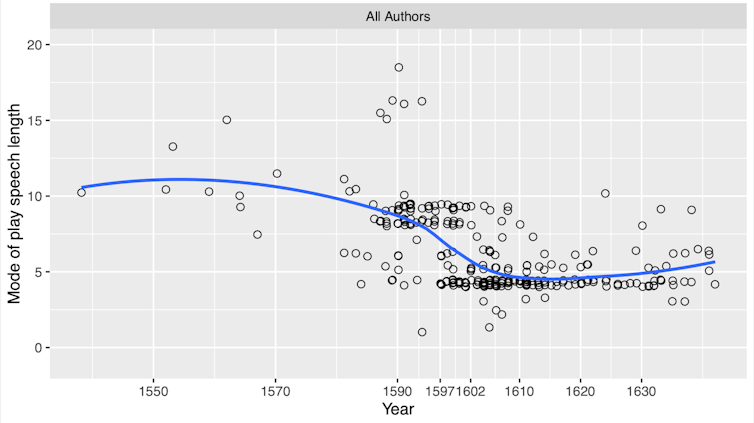
Here we see the modes of speech lengths for 273 early modern plays, shown as circles. From a slow start with few plays, the London theatre industry took off in the late 1580s and early 1590s and we see a concentration of speech-length modes around nine or ten. Then, from 1597 to 1602, a mode of four or five overlaps with modes of eight or nine, then after 1602 the mode of four predominates.
The pattern is not absolute: we see plays from before 1597 with speech-length modes smaller than ten and plays from after 1602 with modes greater than four. But the clustering around ten and four is visible to the naked eye. Moreover, we can quantify how strong that clustering is. Well-established statistical measures tell us to expect patterns like this only very rarely when mere chance is at work in the data.
If we look just at Shakespeare plays, we find him doing what everyone else did: shifting from favouring nine-word speeches to favouring four-word speeches around 1597-1602 and never going back.

Change In Mode
The credit for first seeing this pattern of change in modes of speech length goes to Hartmut Ilsemann, who published about it in 2005. In 2007, MacDonald P. Jackson showed that the change in mode in Shakespeare was more progressive than had been suggested by Ilsemann, who thought it happened virtually overnight in 1599.
Then in 2019, Pervez Rizvi counted speech lengths in a much larger corpus, extending the analysis to Shakespeare’s peers. He confirmed the change from a mode of nine words to a mode of four words in Shakespeare, while showing that this is not peculiar to Shakespeare. This was evidently a pattern shared across the drama of the time.

These are important findings. Even nine words seems a short speech. Most literary-critical commentary focuses on longer speeches where thoughts, arguments and narratives are given fuller expression. No one before Ilsemann had identified a collective change to yet shorter speeches over the period.
It is also unexpected to find Shakespeare, who is generally assumed to be exceptional among his peers, participating in this change, following the collective pattern exactly, in the same direction, at the same time, and to the same degree.
In an article just published, we have confirmed the change in modes of speech length and explored the possible effects of other confounding factors, such as genre, author, theatrical company, and proportions of verse and prose. We find that these factors make no difference: the change is general and all that matters is the date of a play’s composition.
We show that the transition period can be defined as 1597 to 1602 and that there are subsidiary modes at 16 and 24 words, especially apparent in plays with high proportions of verse, suggesting an underlying unit based on the iambic pentameter line, which generally has eight or nine words.
There is no doubt that all those writing these plays obeyed some unspoken imperative and moved collectively to shorter speeches.
But Why?
The most important question remains: how best to understand the forces behind this change?
Ilsemann suggests that the explanation is the move of Shakespeare’s company to the Globe Theatre in 1599. Shakespeare was suddenly able to control the staging of his plays and was able to follow an artistic preference for shorter speeches.
This is unpersuasive, since conditions at the company’s previous venue, the Theatre in Shoreditch, were much like those at the new venue and Shakespeare’s role as playing company shareholder and chief playwright was unchanged. In any case, the change was not instantaneous and not confined to Shakespeare.
Rizvi, following a suggestion by Jackson, links the change in mode to a new propensity in Shakespeare to divide verse lines between two speakers – where part of the metrical line is spoken by the first speaker, and part spoken by a second or even a third. This shift to more shared lines, as Rizvi and Jackson note, was discussed in much earlier books on Shakespeare’s versification by Marina Tarlinskaja (1987) and George T. Wright (1988), though neither of these discussions mention any general change over time in the length of speeches.
This is another spectacular change. Only around 2% of all lines are shared between speakers in Shakespeare’s earliest plays, but shared lines became more common in his middle period, and commoner still at the end, with the last plays averaging over 15%. In Antony and Cleopatra, it reached 18%.
Our suggestion is that the playwrights learned progressively from one another how to represent more closely the speech lengths of everyday exchanges and found that audiences responded well to these. As the heritage of early modern English drama grew, playwrights understood the special properties of the medium better. Their styles moved away from an allegiance to writing and towards the dynamics of everyday speech.
Another way to think of this is offered by the Russian literary scholar Boris Yarkho (1889-1942). Yarkho may well have been the first to consider the length of speeches in plays in a systematic way. He proposed an “index of liveliness”, being the ratio of the number of speeches to the total number of lines in a play. He calculated this index for the comedies and tragedies of the 17th-century French playwright Pierre Corneille, the comedies having a higher index because of their shorter speeches.
The move from a mode of nine words to a mode of four represents a shortening of the average speech, and thus a move to more “lively” drama in Yarkho’s terms.

Pauca Verba
We have no record of any dramatist or playgoer reflecting on the shortening of average speech lengths; our only knowledge of it comes from counting the words in the plays for ourselves. But it might be reflected in phrases that Shakespeare gives his characters.
The Latin word “pauca” occurs seven times in Shakespeare. In The Taming of the Shrew, Sly brushes off the Hostess, who throws him out of her tavern with “paucas pallabris”, which is a kind of Latin-Spanish hybrid meaning “few words”.
In Love’s Labour’s Lost, Holofernes recites the proverb “Vir sapit qui pauca loquitur”, which is Latin for “That man is wise that speaketh few things or words”. About four minutes of stage time later, Holofernes cuts off any refusal of his hospitality with “Pauca verba” – Latin for “few words”.
In Much Ado About Nothing, Dogberry invokes “paucas pallabris” using just its second word, in the form “Palabras”, to shush Verges. In Henry V, Pistol silences himself to cut off his quarrel with Nim by saying “pauca”. And in The Merry Wives of Windsor, Evans tries to get Falstaff to moderate his tongue with “pauca verba”. A few seconds later, Nim picks up the phrase and repeats “pauca, pauca”.
With the exception of The Taming of the Shrew, which was written sometime between 1582-1593, these are plays from the narrow period we have identified when dramatists collectively opted for fewer words. Might Shakespeare have unconsciously registered the change in this bit of Latin?![]()
Kim Colyvas, Research Assistant, University of Newcastle; Gabriel Egan, Professor of Shakespeare Studies, De Montfort University, and Hugh Craig, Professor of English, University of Newcastle
This article is republished from The Conversation under a Creative Commons license. Read the original article.
Auxiliary power: in wartime, Australian women fought germs, fired shells – and took on gender norms

Sheila Sibley enlisted in the Australian Army in 1942 with a vision of becoming a wartime nurse – “an angel of mercy, the wounded man’s guide … the Rose of No-Man’s Land”, in her own words.
Many women wanted to “do their bit” during the second world war, and nursing had previously been the only avenue for women to join the military. They had historically been excluded from traditionally masculine roles within the armed forces.
Sibley, however, never became a nurse. Ideas of becoming “this war’s Florence Nightingale” were let go, and nursing was left to those who had trained for it.
Private Sheila Sibley instead served in a hospital kitchen and then laundry.
The establishment of women’s auxiliaries to Australia’s military in the early 1940s created new opportunities for women. This included expanded roles in military hospitals, but also jobs that reached far beyond the hospital ward. Women were called to serve as signallers and telegraph operators, mechanics, and even coastal artillery and anti-aircraft gunners.
These jobs were a clear break from the expected role of women at the time.
However, my research shows servicewomen like Sibley had to fight on another front: to have their contributions to the war acknowledged, in a time when much of their efforts were considered “women’s work”.
The Battle For Hygiene
In January 1941, 200 Australian servicewomen marched-in as orderlies to support Army nurses working in the Middle East. At first, they were given laborious jobs such as reclaiming bandages for reuse, “regardless of how revolting they were”, according to Sibley’s colleague Alice Penman.
Soon the nursing sisters trained the female orderlies in tasks such as dressing patient wounds.
Stories from servicewomen in the Middle East were returned to Australia and they encouraged other women to join them. “Work hard,” said servicewoman Rita Hind, “because I am sure it is going to be a marvellous experience.”
Military officials also heard the stories of these women and noticed they had become a skilled and useful resource for the hospital.
In December 1942, these servicewomen were given their own branch of the Army, known as the Australian Army Medical Women’s Service. With the creation of the new auxiliary, servicewomen’s roles in military hospitals expanded to include those alongside nurses in patient wards and operating theatres, to those “behind the scenes” of hospitals such as in pathology laboratories, kitchens, laundries, and postal and telegraph offices.
Assigned duties that were considered then as “menial”, “domestic” or the “work of a housewife”, servicewomen working in the fundamental areas of hospital efficiency struggled to be seen.
Today, the COVID pandemic has illustrated the important work of all those who contribute to the health system. But there are few stories told about the historical work of women who toiled behind the scenes to ensure military hospitals ran efficiently and effectively during the second world war.

Posted to duty in the laundry of the 115 Australian General Hospital (AGH) at Heidelberg, Victoria, Sibley came to appreciate that the laundry was fundamental to the maintenance of hygiene in hospitals. “Everyone who works in a laundry at an AGH,” Sibley suggests, “is fighting for the lives of the wounded as steadfastly as that clever surgeon.”
The correlation between hygiene and the health and recovery of patients was still in its infancy in the 1940s. Laundry work was also still considered to be “women’s work”.
Sibley stood up against the gendered portrayals of her wartime work. A hospital laundry bears no resemblance to its domestic counterpart with its industrial machinery to wash, dry, iron and fold linen and clothes. To Sibley, the laundry was the battlefront and the machines her weapons. She wrote:
What may look like a washing machine in our big military hospitals is really artillery firing its rounds of good clean washing against the enemies, disease and death.
Fighting Stereotypes
The strategy of other servicewomen to break from gendered boundaries was less overt.
Sergeant Thelma Powell quietly worked in her role at the No. 1 Facio-Maxillary and Plastic Unit where she became an artist painting artificial eyes for injured soldiers.
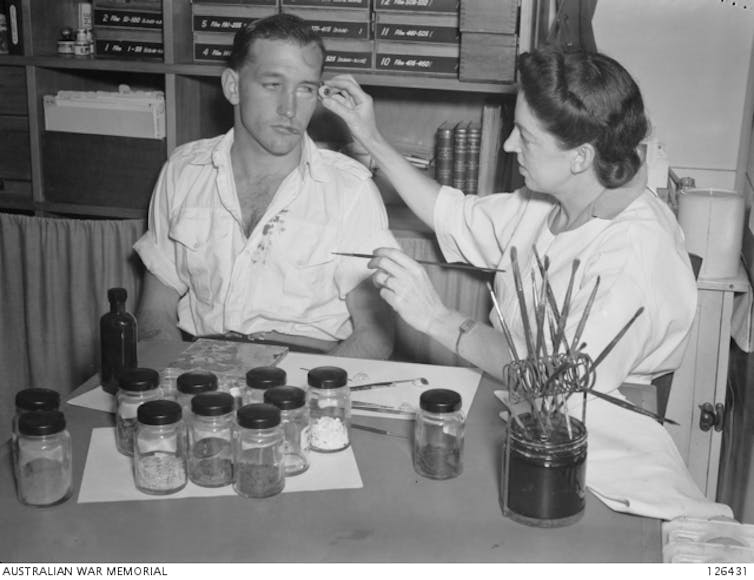
Before the war, Powell had an interest in fine art through her hobby of smoke-etching china. It was through her fine attention to detail and her meticulous care in the highly technical work of painting artificial eyes that Powell pushed back on expectations of women at the time.
Powell showed that the skills from a “hobby for women” could be applied to an important occupation directly affecting the rehabilitation and lives of injured men.
Given the ingrained gendered expectations within society at the time, the attempts of those like Powell and Sibley to highlight servicewomen’s work and afford their labour proper recognition were overshadowed.
Patients noticed their care, and medical professionals relied on their service, but their stories have not been told.![]()
Jason Smeaton, PhD Candidate, Australian Catholic University
This article is republished from The Conversation under a Creative Commons license. Read the original article.
Book Of The Month - May 2023: Angela's Ashes, A Memoir by Frank McCourt
Published: 1996
A Pulitzer Prize'winning, #1 New York Times bestseller, Angela's Ashes is Frank McCourt's masterful memoir of his childhood in Ireland.
"When I look back on my childhood I wonder how I managed to survive at all. It was, of course, a miserable childhood: the happy childhood is hardly worth your while. Worse than the ordinary miserable childhood is the miserable Irish childhood, and worse yet is the miserable Irish Catholic childhood."
So begins the luminous memoir of Frank McCourt, born in Depression-era Brooklyn to recent Irish immigrants and raised in the slums of Limerick, Ireland. Frank's mother, Angela, has no money to feed the children since Frank's father, Malachy, rarely works, and when he does he drinks his wages. Yet Malachy'exasperating, irresponsible, and beguiling'does nurture in Frank an appetite for the one thing he can provide: a story. Frank lives for his father's tales of Cuchulain, who saved Ireland, and of the Angel on the Seventh Step, who brings his mother babies.
Perhaps it is story that accounts for Frank's survival. Wearing rags for diapers, begging a pig's head for Christmas dinner and gathering coal from the roadside to light a fire, Frank endures poverty, near-starvation and the casual cruelty of relatives and neighbours' yet lives to tell his tale with eloquence, exuberance, and remarkable forgiveness.
New National Funding Approach Needed As Public Hospitals Performance Plummets: AMA
Volunteers In Aged Care Consultation Open
- all people who volunteer in the aged care sector
- all those who work with volunteers in their role as a volunteer manager or as an aged care provider.

Community Celebration In Memory Of Bob Grace - All Welcome

Seniors - AMA - COTA Welcome Prescription Changes
COVID-19 Text Message Campaign
- help with booking a vaccination appointment
- information and support on getting tested
- where to get a person you care for vaccinated
- protecting you and the people you care for from catching COVID-19
- reducing your risk of severe disease, long-term side effects or long COVID
- staying connected with your family and friends as well as your workplace or school
Ring for the King: the long history of England’s bellringing tradition
Katherine Butler, Northumbria University, NewcastleAhead of King Charles’s coronation on May 6 2023, there have been reports of a national shortage of bellringers. The UK counts 38,000 churches. The hope is that each will “ring for the king”, as the Central Council of Church Bell Ringers has labelled its appeal to get more people involved.
Since at least the 16th century, foreign visitors to Britain’s shores have remarked on the ubiquity of its bellringing. Georg Friedrich Händel is credited with labelling the country a “ringing isle”.
These centuries-old bells still sound from church towers today. Children still sing songs telling of their music. Oranges and Lemons famously takes its singers on a tour of London churches:
Oranges and lemons, Say the bells of St. Clement’s.
You owe me five farthings, Say the bells of St. Martin’s.
When will you pay me? Say the bells at Old Bailey.
When I grow rich, Say the bells at Shoreditch.
When will that be? Say the bells of Stepney.
I do not know, Says the great bell at Bow.


This piece is part of our coverage of King Charles III’s coronation. The first coronation of a British monarch since 1953 comes at a time of reckoning for the monarchy, the royal family and the Commonwealth. For more royal analysis, revisit our coverage of Queen Elizabeth II’s Platinum jubilee, and her death in September 2022.
Church bells have left their mark more widely on English culture specifically. Pubs named The Bell or The Ring o’ Bells are found across the country. Bells are routinely pictured on Christmas and wedding cards.
As a musicologist, I have long been interested in the history of communal music-making, including popular ringing and singing for the monarchy. I am a campanologist myself, too, founding and directing our university handbell choir.
The Meanings Of Church Bells
Common across Europe since the early middle ages, bells summoned the faithful to worship. They also marked the stages of life from baptism, to weddings, to passing bells for the dying.
Inscriptions on individual bells often gave them names and told their stories. One on a Cambridgeshire bell, dating from 1607 says: “Of all the bells in Benet, I am the best. And yet for my casting, the parish paid the least.”
Sometimes these messages asked the bells to praise God or to carry the prayers of the faithful to heaven. People believed they had the power to dispel thunder and drive away the plague or even devils.
Although hung in church towers, the significance of bells was not merely religious. Bells were aural markers of communities. The traditional definition of a cockney is someone who lives within earshot of the bells of St Mary le Bow, on Cheapside in London.
As some of the loudest noises in the historic soundscape (before the noise pollution of traffic), bells also had a practical function in signalling dangers such as fires, unrest, or invasion.
Even when the Reformation called the theology of bellringing into question, ringing was so deeply embedded in English communities that such practices were reinterpreted rather than suppressed.
Recreational Ringing
What really made English bellringing distinctive, however, was the enthusiasm, from around 1600, for a new kind of ringing. Until this point, ringing used simple tolling bells or what ringers call “rounds” (repeated descending scales of tuned bells).
Technological advances in the late 16th century saw bells mounted on fully rotating wheels (as opposed to half wheels with more limited motion). This gave ringers greater control over the timing and enabled the development of what is called “change ringing”, with increasingly complex, predetermined tone patterns. Known as “methods”, these come with charmingly esoteric names such as Cambridge Surprise Major:
As a result, recreational ringing began to take off. In the 17th century, visitors to England reported hearing bellringing late into the evening by groups of young men often coming straight from drinking in the alehouse. They rang for exercise and for fun. They’d even make wagers as to who could ring the longest, the loudest, or in the best fashion.
The 18th century saw the development of handbell ringing. Initially used by tower bellringers seeking to practise in warmer and more congenial surroundings, ringing well-known tunes on handbells soon became popular. At the height of its popularity in the late 19th century, large handbell ringing competitions were held at Belle Vue in Manchester, with community teams vying to defeat their neighbours.
Royal Ringing
Royal coronations, weddings and baptisms had long prompted local celebratory ringing, but during the reign of Elizabeth I many parishes started to ring yearly to mark what they called her “Crownation” day (actually her accession day) on November 17.
Beginning in parishes near London, the trend soon spread across the country and persisted under Elizabeth’s successors, James VI of Scotland (AKA James I of England) and Charles I, the first two Stuart kings. It was subsequently revived after the Commonwealth. Significant political victories such as the defeat of the Armada in 1588 or the failure of the Gunpowder plot in 1605 were also marked by ringing.
Such royal connections continue today. There are several methods named for Queen Elizabeth II: the Queen Elizabeth II delight major, or platinum jubilee surprise minor.
In June 2022, bells large and small rang across the UK to celebrate the Queen’s platinum jubilee. And when Queen Elizabeth died in September 2022, bells fully muffled with leather patches chimed at Westminster Abbey and in churches far beyond – either for 96 minutes or 96 times–to mark each year of her life.
The coronation of Charles III is an opportunity for people to continue this long tradition. Find out about ringing groups in a local tower. If lighter bells or tune-ringing appeal, look up your local handbell team.
I have found it to be a fun way to connect with people of all ages and walks of life. A workout for mind and body, ringing takes practice, but the collective results are rewarding. You are making an audible contribution to your local community and the soundscape of your city.![]()
Katherine Butler, Assistant Professor, Northumbria University, Newcastle
This article is republished from The Conversation under a Creative Commons license. Read the original article.
Nobel laureate Brian Schmidt’s big ideas for how Australia funds and uses research

This article is part of our series on big ideas for the Universities Accord. The federal government is calling for ideas to “reshape and reimagine higher education, and set it up for the next decade and beyond”. A review team is due to finish a draft report in June and a final report in December 2023.
Education makes Australian citizens healthier, wealthier and more engaged with society. At the same time, government-funded research in higher education drives economic productivity in ways other government funding does not. Together, the future of Australian prosperity depends on the education and research undertaken within its tertiary education system, and especially our universities.
The Australian higher education system has served Australia well over the past 30 years, but it is not fit for the rapid pace of change to which the world will be subjected over the coming decades. If Australia is going to remain the “lucky country”, we are going to have make more of our own luck.
The federal government’s call for “lasting reform” for Australian universities with the Universities Accord offers a timely opportunity to take action.
In my personal submission to the accord process, I outline three big ideas to help reset higher education to deliver the system Australians need and deserve. The first is to provide each Australian with lifetime access to a single higher education system, spanning both university and vocational education.
In this piece I want to focus on my other two big ideas – improving the way we fund and then translate research. These offer some of the biggest and easiest bang-for-buck solutions we can enact.
Australia’s Research Ecosystem

Australia’s research ecosystem has become highly reliant on funding via cross-subsidies from international student fees. Currently, Australian government expenditure in research and development – expressed as a fraction of GDP by the OECD as “GBARD” – is the lowest of the world’s advanced economies and is continuing to decline.
Instead, universities now spend more on research (using international student fees) than the government. This does not happen in other advanced economies.
Compounding this is the fact government funding of directed research for national benefit is short-term, ad hoc, not strategically planned across agencies, and is poorly aligned to university planning timescales. Over the past seven years as Vice-Chancellor of the Australian National University, I have seen dozens of different programs across various government agencies come and go with no overall coordination.
Research funding is also not fully integrated with workforce and major equipment needs, and this all leads to shortfalls in key areas of national research need. For example, if we look at critical minerals, the research infrastructure that underpins earth science is completely absent in planning and funding.
Universities, government, and business are not working together on the big research issues facing Australia. To fix this, Australia urgently needs a fully funded core sovereign research capability. We also need to better translate research beyond universities to the real world.
We Need To Identify And Properly Fund Sovereign Research
Sovereign research capability is about Australia being able to fund and undertake the research it deems vital to its national interests.
We must identify the core set of sovereign research capabilities necessary for the future security and prosperity of the Australian people. And we must fund these activities in full (including overheads), without the need of cross-subsidies from non-domestic sources. This requires a whole-of-government approach.
This core research should be expected to be uniformly excellent. It should include curiosity-driven research as well as research looking at practical solutions to existing problems (“applied research”). It should also go beyond technological developments to support the vibrancy of Australian democracy and culture.
A large fraction of the sovereign curiosity research money should be competitively allocated via existing bodies, the Australian Research Council and National Health and Medical Research Council grant system.
We Need To Make It Easier To Translate Research
In addition to fully funding sovereign research capabilities, we must also rethink how we fund research translation for the public good. This is the process whereby we move research from labs or journals out into the real world.
When we fund applied research, we need to be strongly focused on outcomes. This includes the government directing funding for specific missions in areas of national need. This could be long-term, with timeframes of five to 20 years.
Independent expert-based boards would be given a budget to achieve specific goals within a time horizon, and invest across industry, government and the research sector to achieve these goals. This would replace current schemes for translating top-down government priorities.
In addition, we need a new suite of agile “bottom-up” supports for individuals’ ideas. This would also replace existing research translation schemes, which have typically been “set-and-forget” investments. without an expert stewardship over the ten-year-plus cycle necessary to get globally competitive capabililty.
Projects should be closely monitored and defunded when progress is deemed insufficient. Expert panels could also work with the private sector to rapidly increase investment of such programs when commercially justified.
Funding programs need to pay particular attention to the areas of market failure. Such a system should not crowd out existing private technology transfer, but do things that will not otherwise happen, and better connect industry, government and academia in the research ecosystem.

Blue-Sky Thinking
The foundational research done in universities underpins the sovereign capability of the nation to increase productivity, improve health and wellbeing, remain secure, and to solve and adapt to challenges that face society. This is the research universities do that leads to new products, jobs and industries never envisaged when the research cycle begins.
Work just in my own area of astro-particle physics has underpinned the WiFi, camera, GPS and touch screen of your phone, not to mention many recent startups across Australia.
But most of the value created for Australia is actually through indirect productivity spillovers. These are the people, ideas and capabilities created by Australian research that find their way in thousands of ways into Australia society that allow us to do more for less.
These are hard to measure, and emerge with a considerable lag, but our best estimates are that they are large. Government has a special role in funding this activity, as firms cannot typically capture the benefits of this work.
International education is becoming increasingly globally competitive. The margin from international student fees Australian universities are so reliant on to fund their research is bound to drop over coming decades.
So as part of a sovereign research capacity, Australia should set a minimum level for government sponsored foundational research as a fraction of GDP. This would bring Australia in line with other nations with advanced economies.
And if all universities are expected to undertake excellent research, a base amount of research funding should be made available either through student-based allocations or another mechanism. Alternatively, new types of future higher education institutions could have research dropped from their mission entirely.

Making Our Own Luck
Australian universities and their research have for many years made Australians’ lives and our world better. The government’s accord process gives us the chance to make sure our universities can continue to deliver on this promise for our future generations.
But we must act and this action must take serious stock in how we fund and translate research in Australia today.
If we fail to value and fund university research in the way that we need, and should, the so-called Lucky Country might just run out of luck.
Professor Brian Schmidt is the 2011 Nobel laureate in physics and Vice-Chancellor of The Australian National University. This article is based on his individual submission to Universities Accord review.![]()
Brian Schmidt, Vice-Chancellor, Australian National University
This article is republished from The Conversation under a Creative Commons license. Read the original article.
Sick And Tired: Long COVID Inquiry Report Released
- A definition of long COVID for use in Australia
- Evidence-based living guidelines for long COVID, co-designed with patients with lived experience
- A nationally coordinated research program for long COVID and COVID-19
- The COVID-19 vaccination communication strategy
- Access to antiviral treatments for COVID-19
- Support for primary healthcare providers
- Indoor air quality and ventilation.
$50 Million To Support Research In To Long COVID: Australian Government
Two Month Prescribing A Welcome Win For Consumers Facing Cost Of Living Increases
Mudskippers Could Be Key To Understanding Evolution Of Blinking
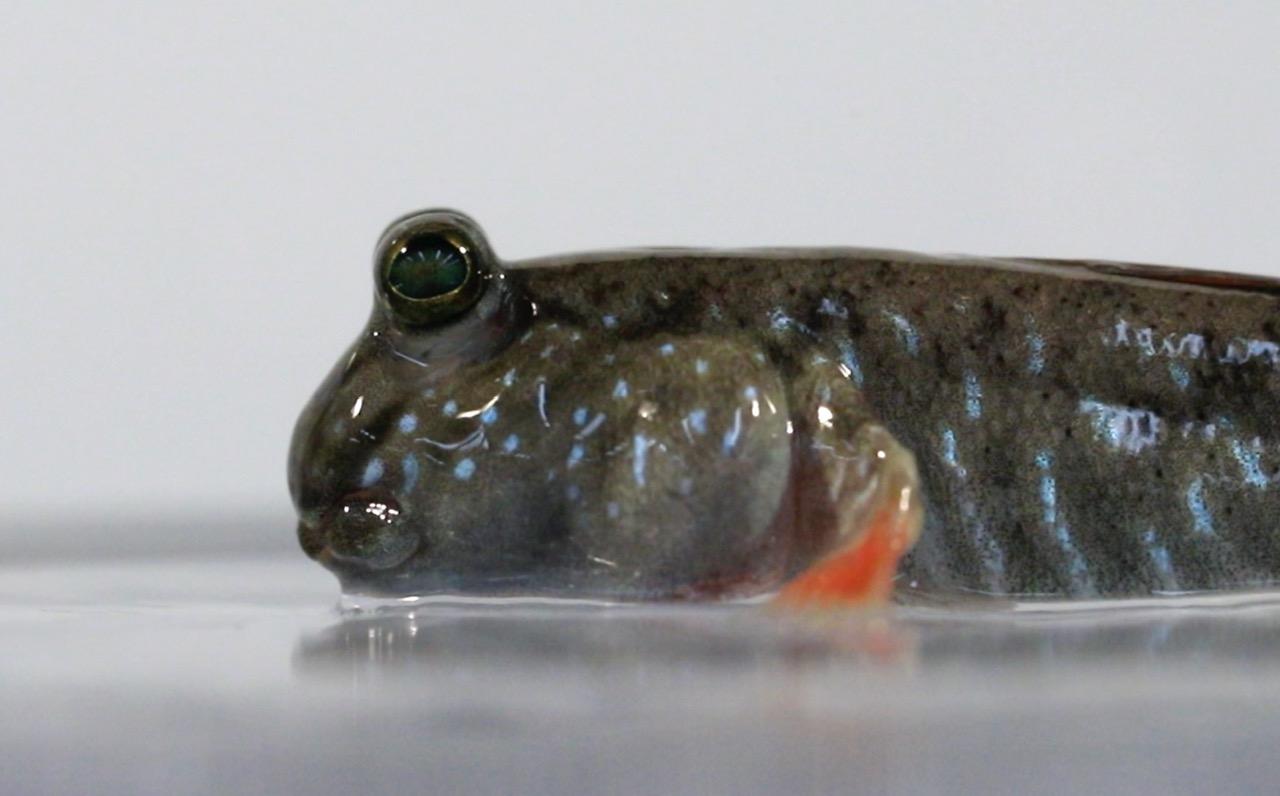
Global Research Reveals Countries Where Record-Breaking Heatwaves Are Likely To Cause Most Harm
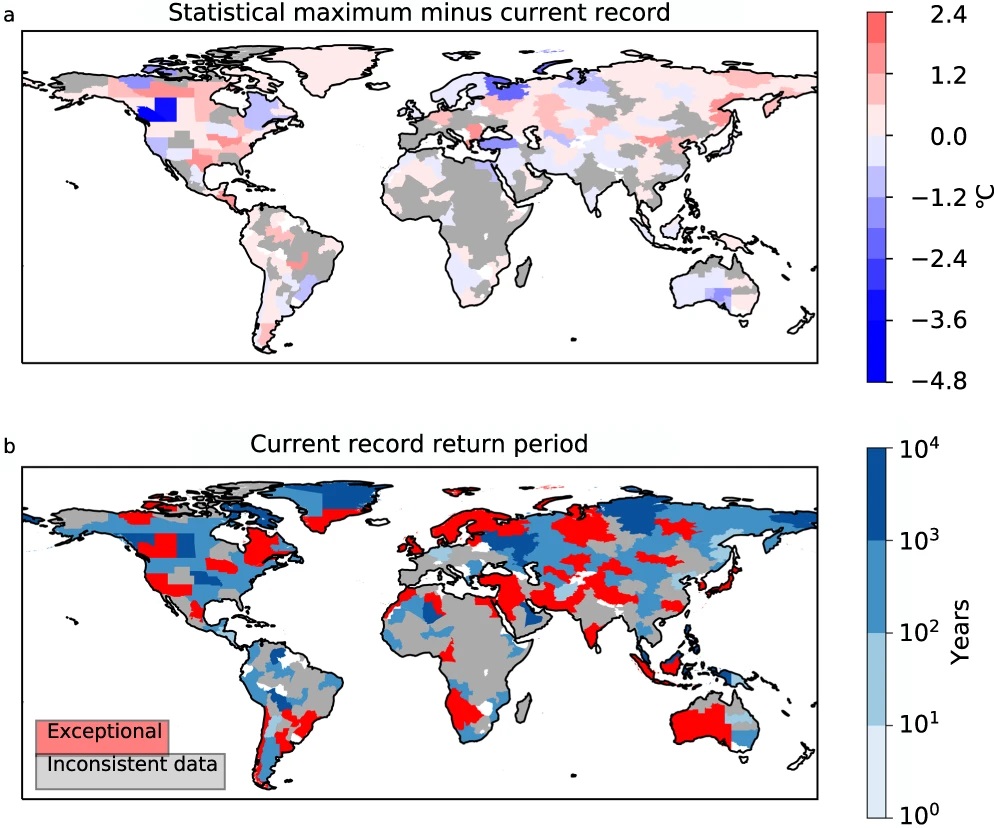
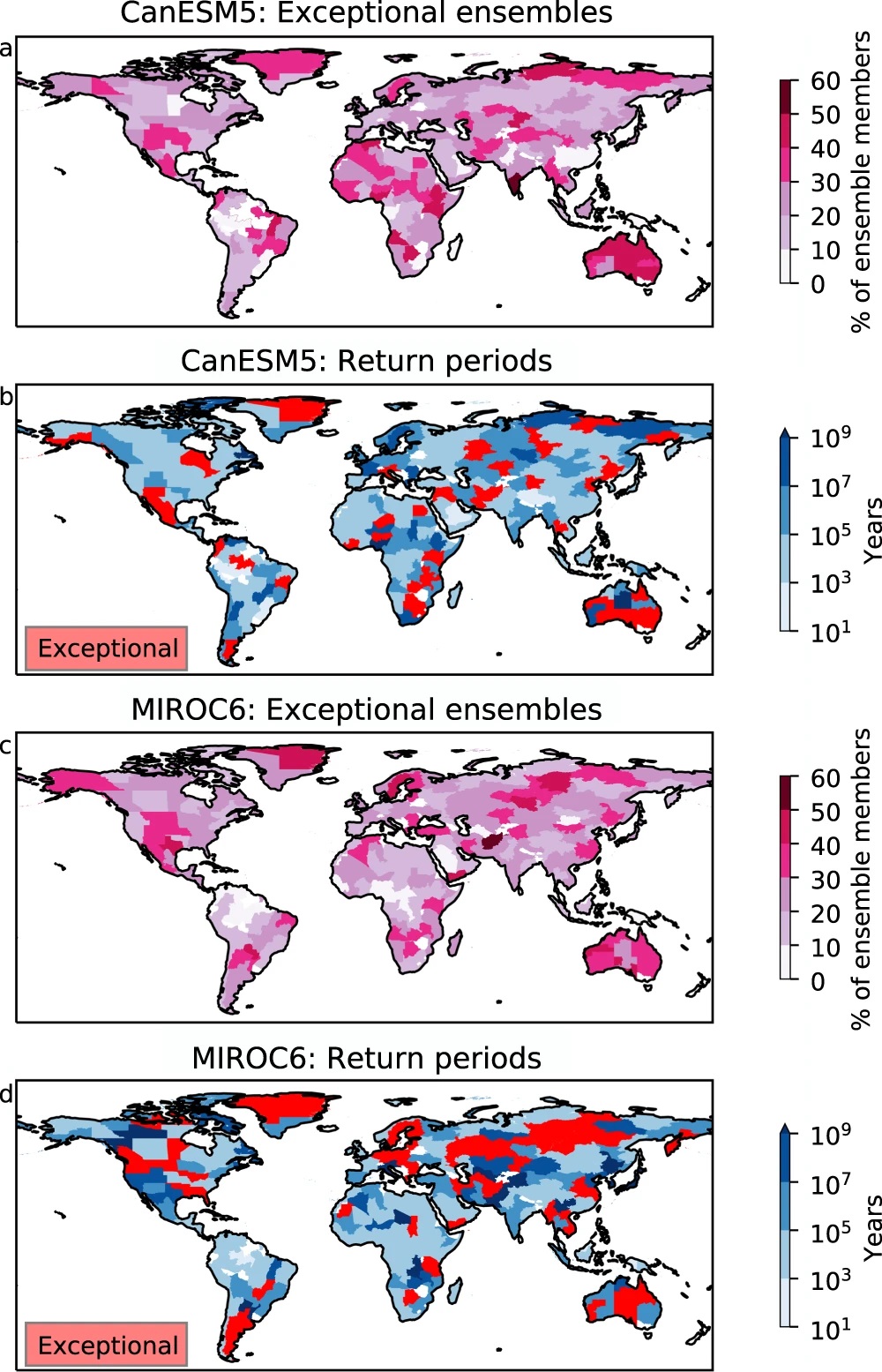
How Long-Lasting Memories Form In The Brain
Small Acts Of Kindness Are Frequent And Universal Study Finds
.jpg?timestamp=1682481454913)
Jellyfish-Like Robots Could One Day Clean Up The World's Oceans
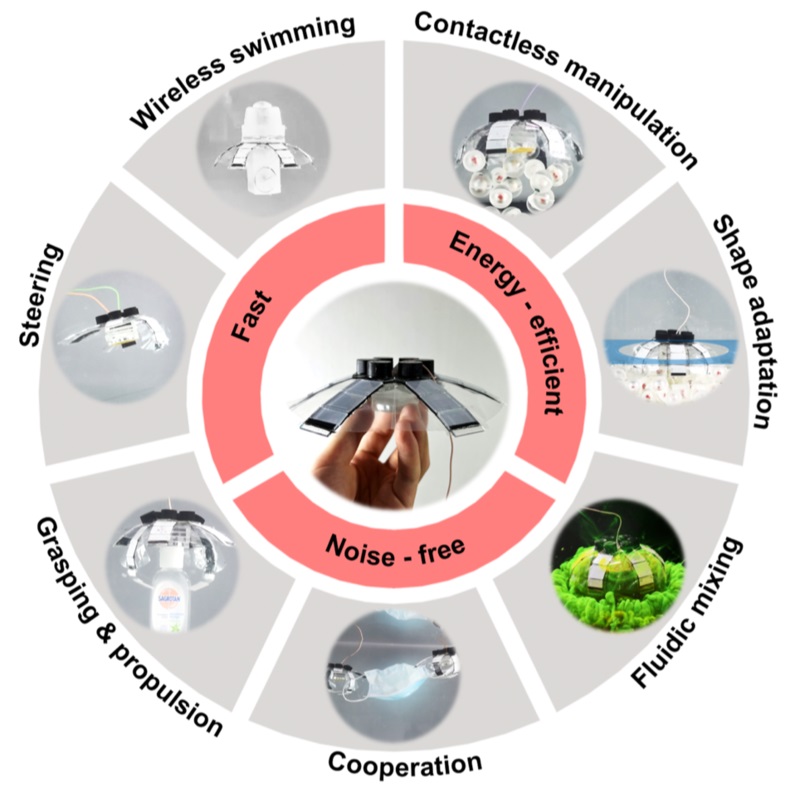
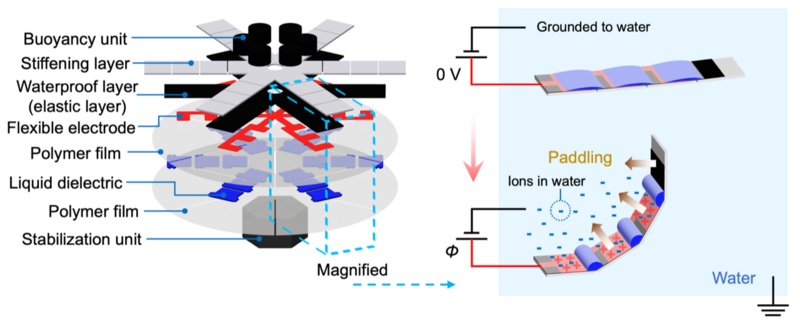
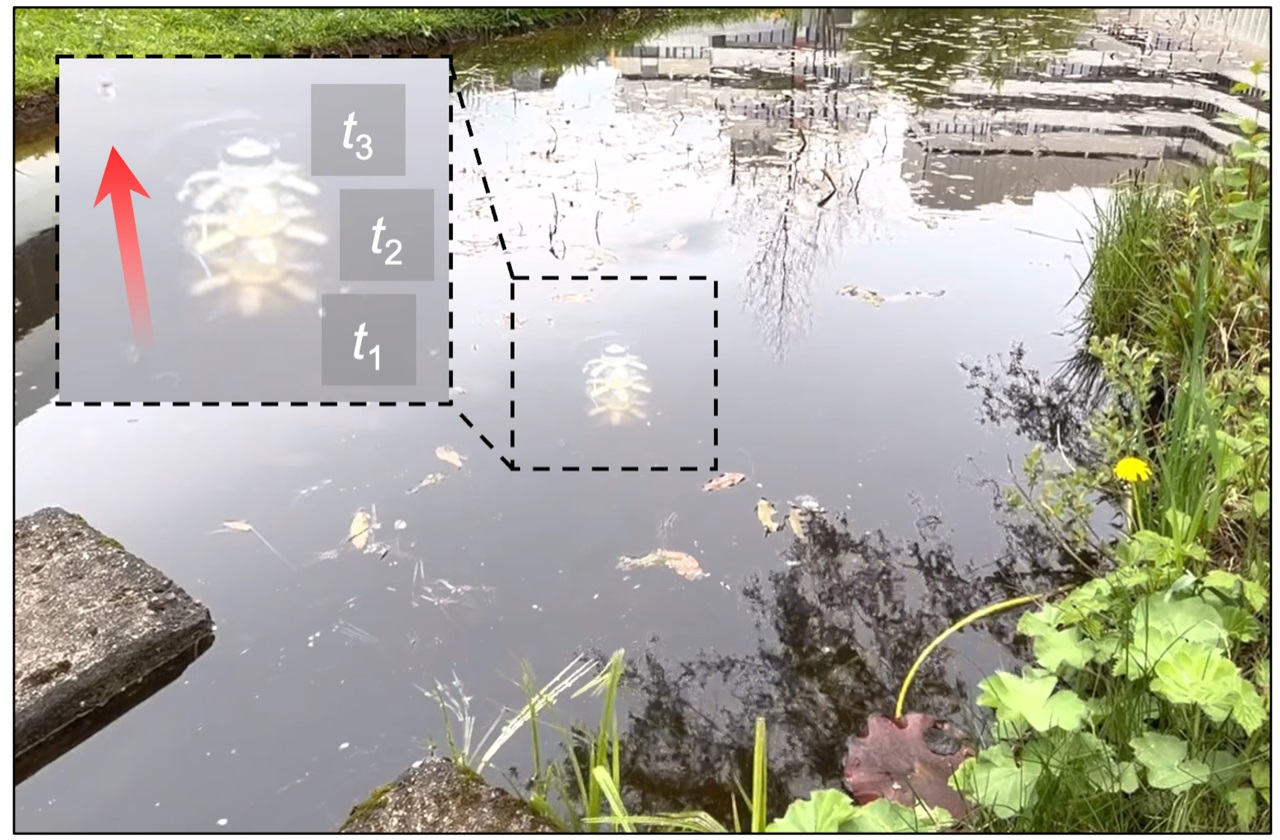
Disclaimer: These articles are not intended to provide medical advice, diagnosis or treatment. Views expressed here do not necessarily reflect those of Pittwater Online News or its staff.